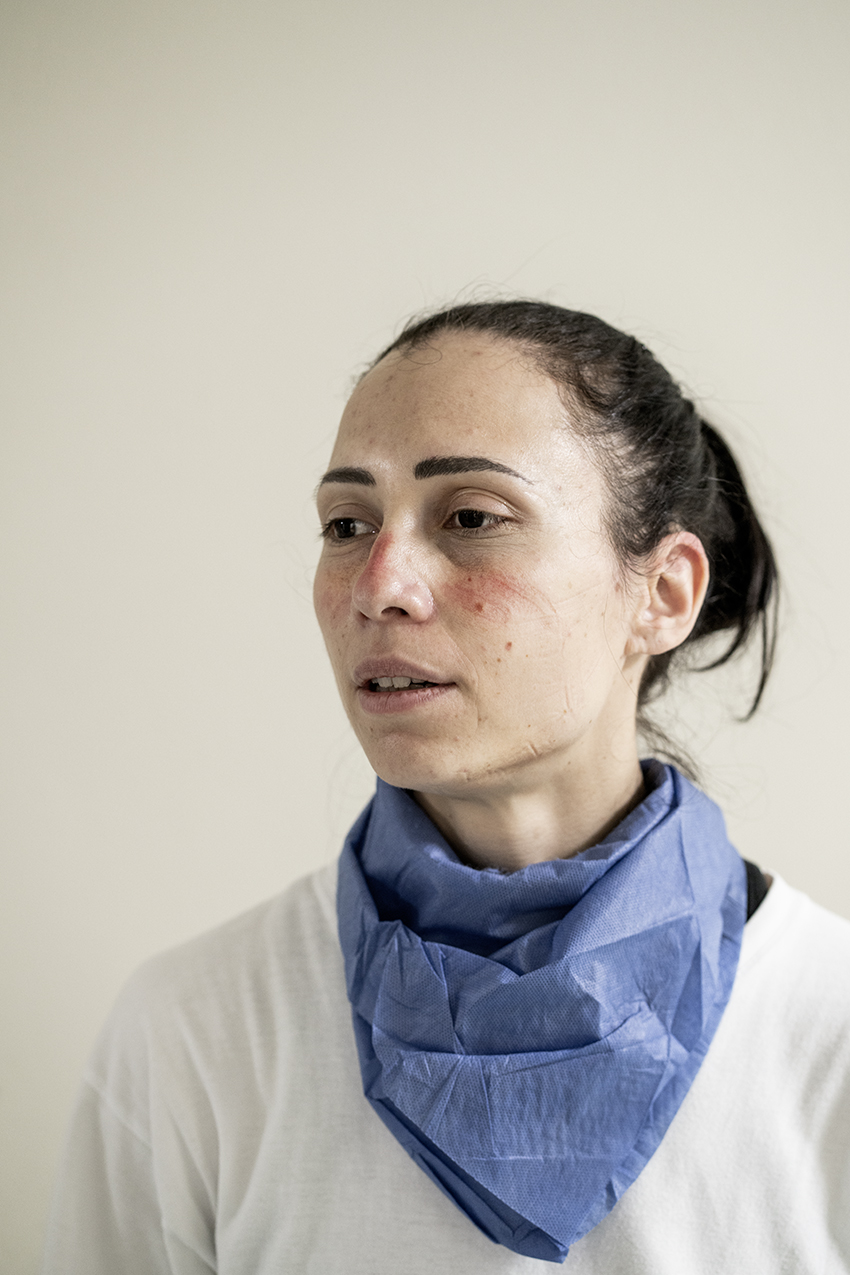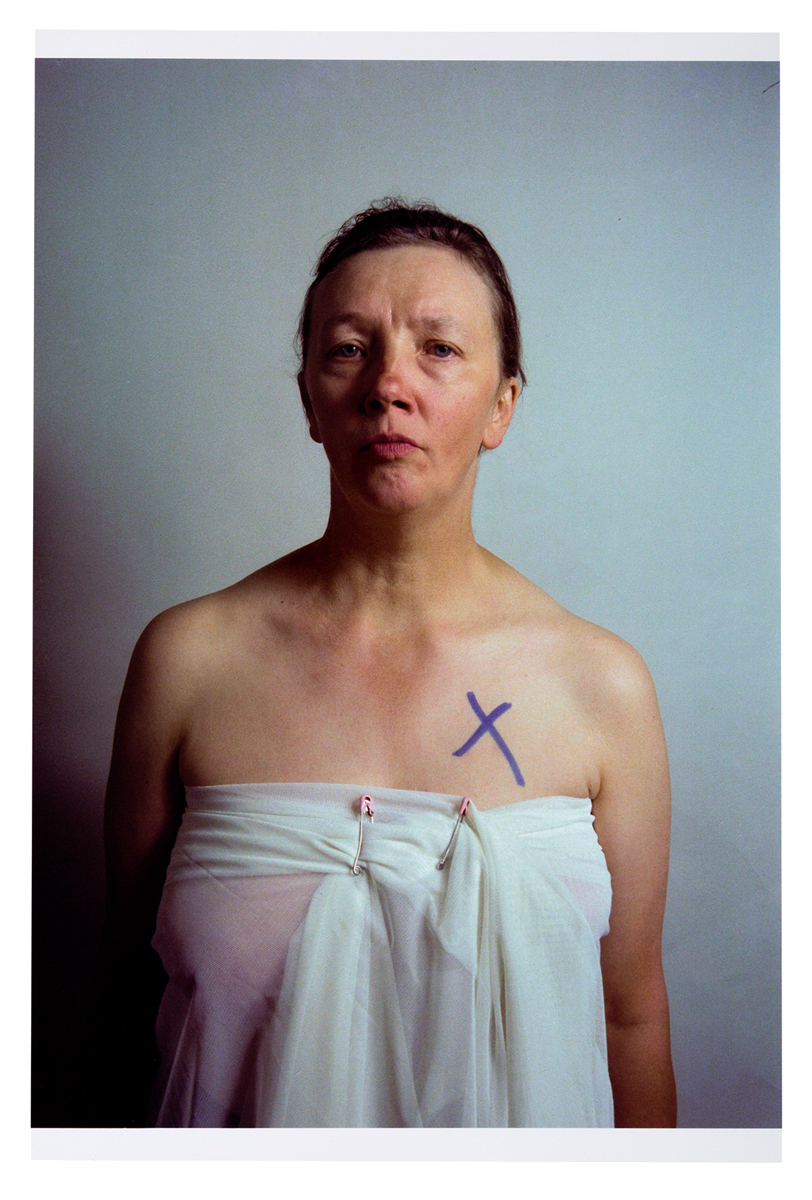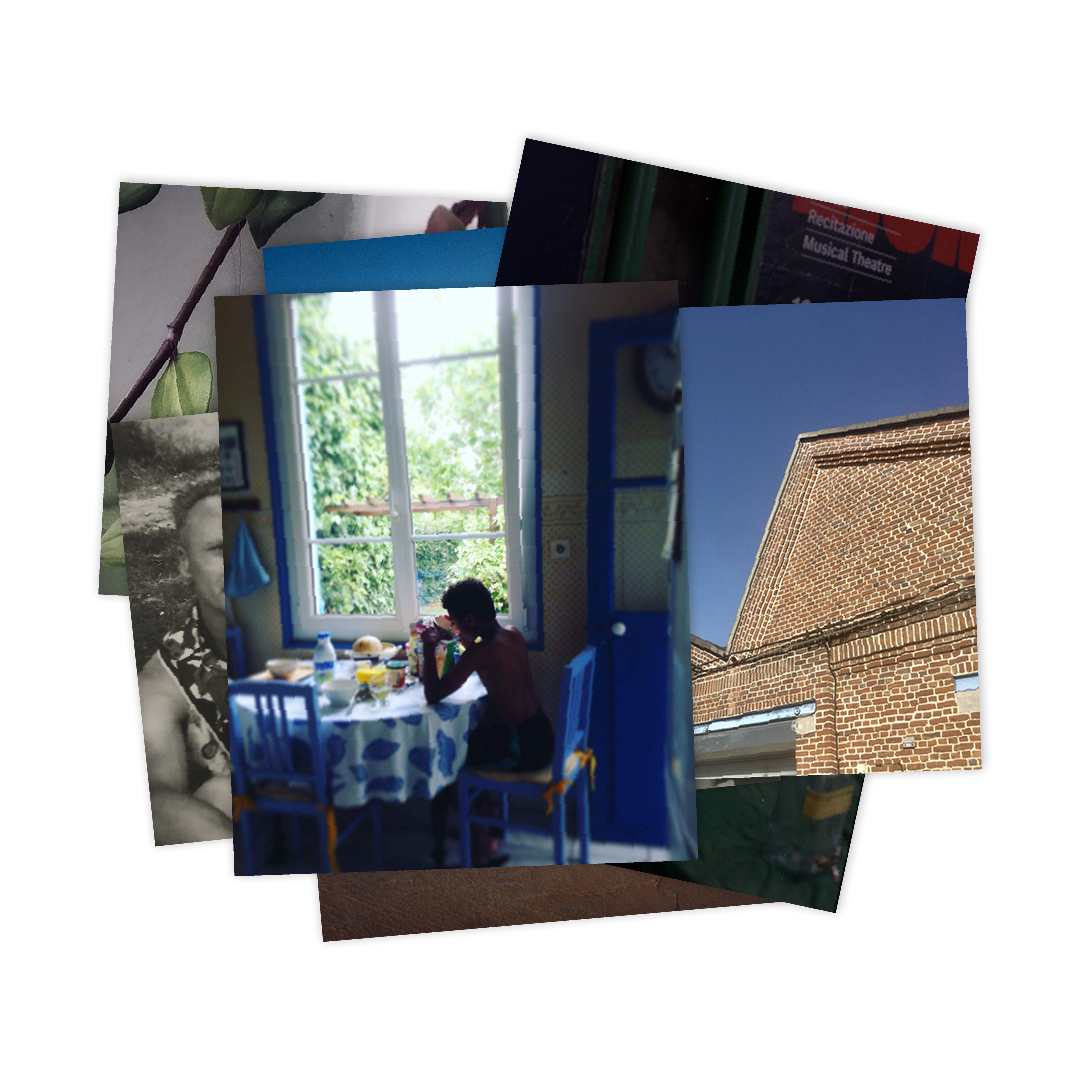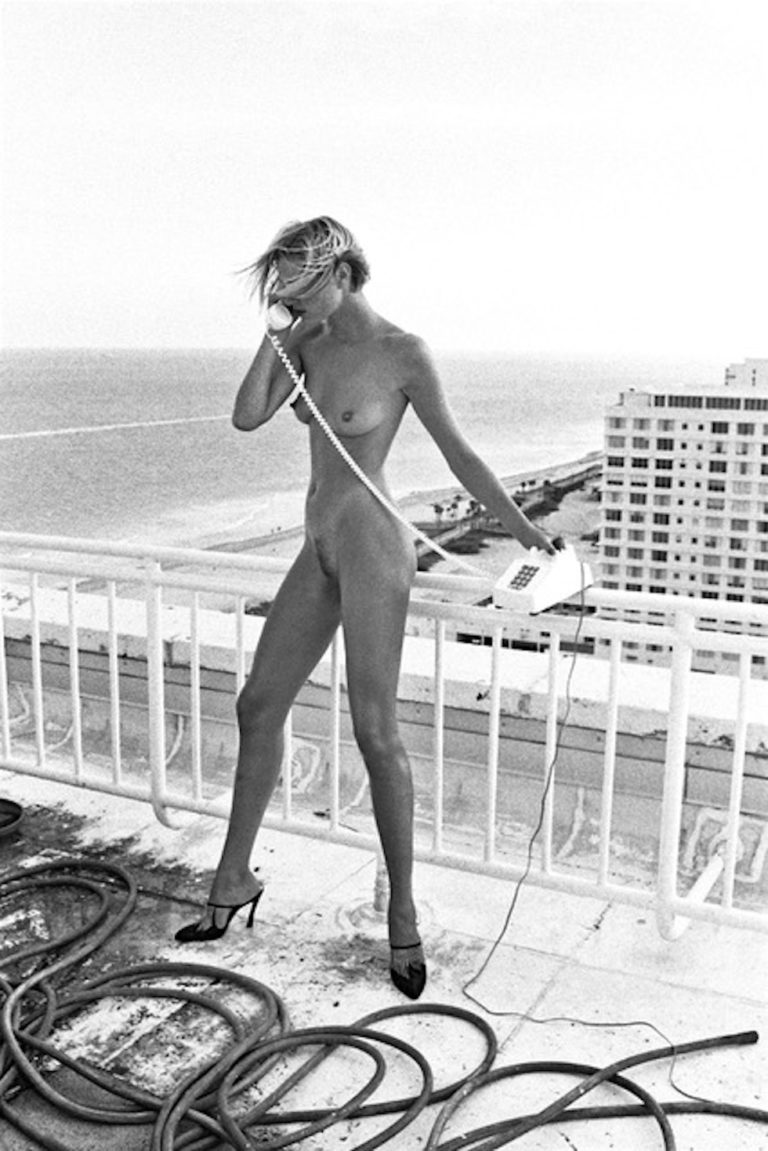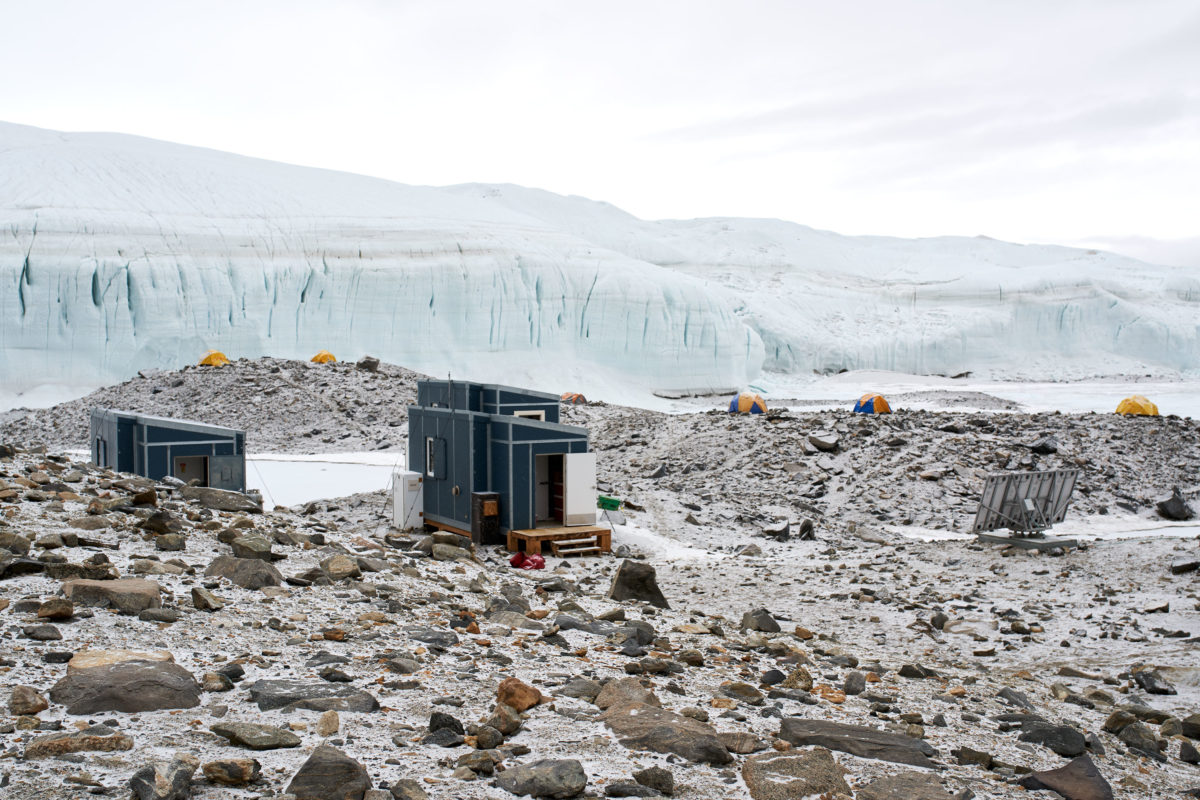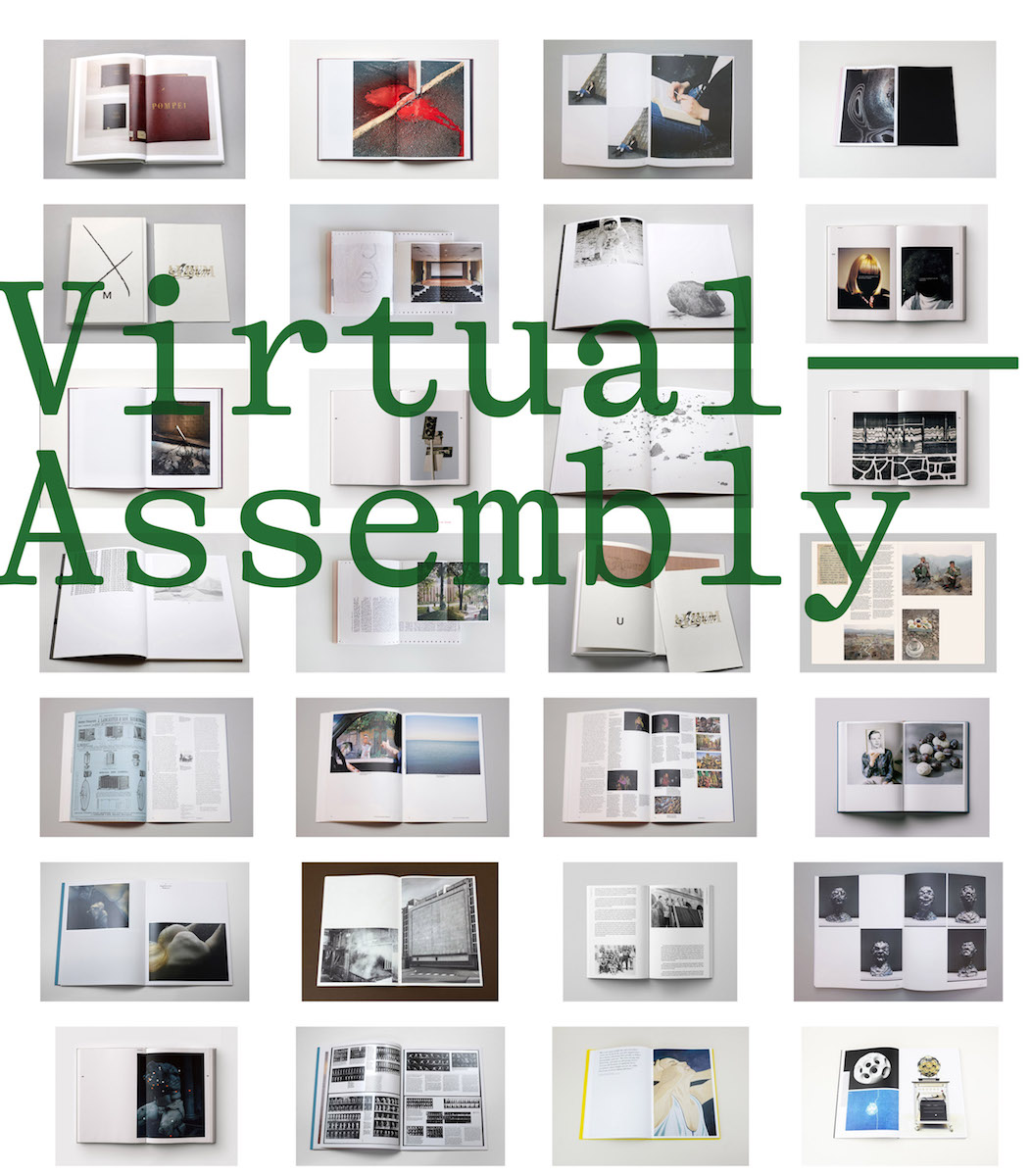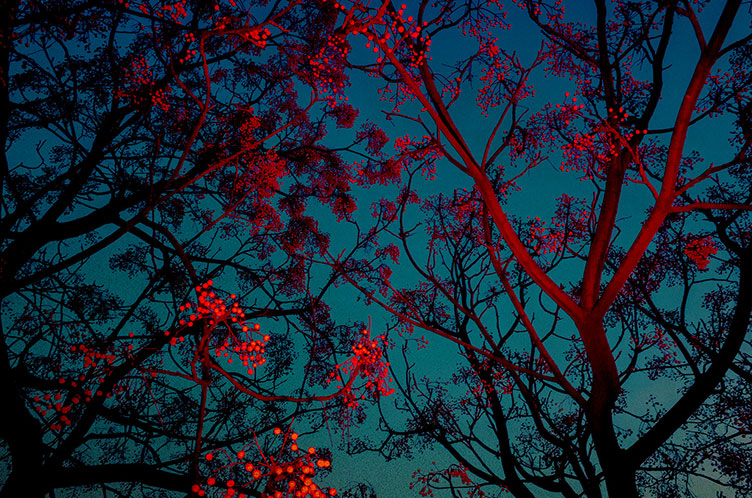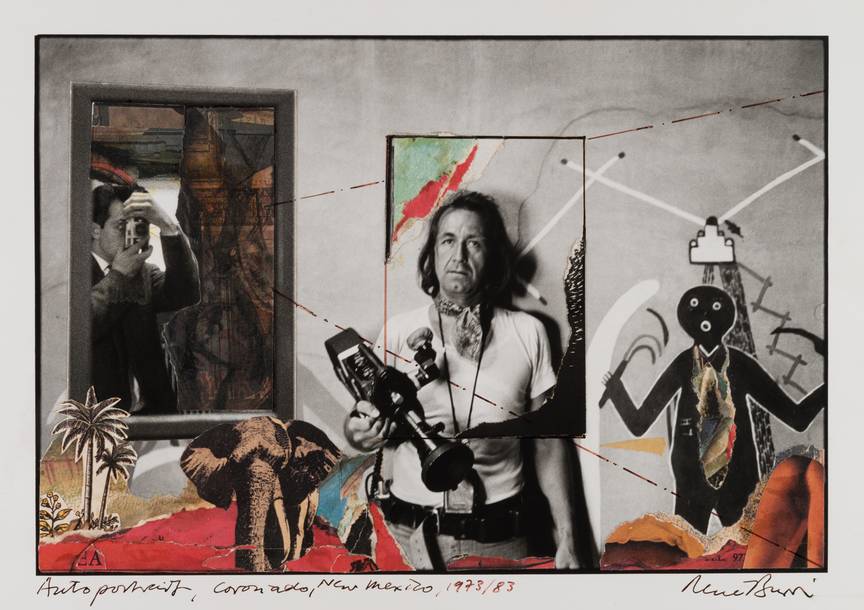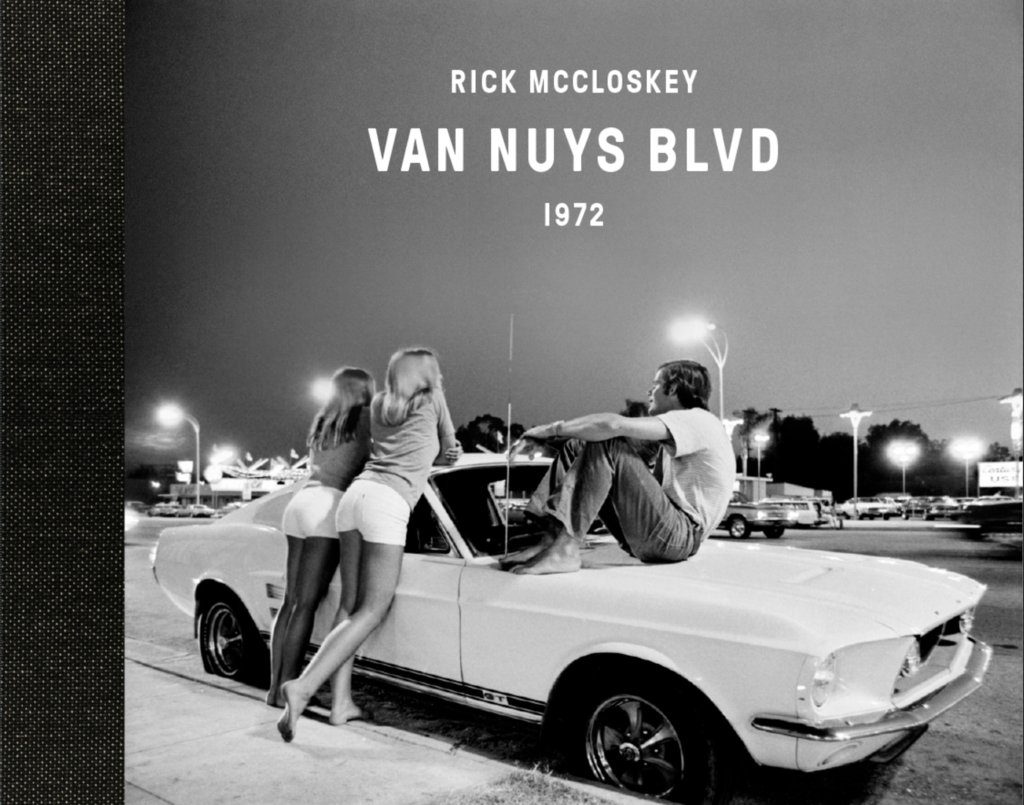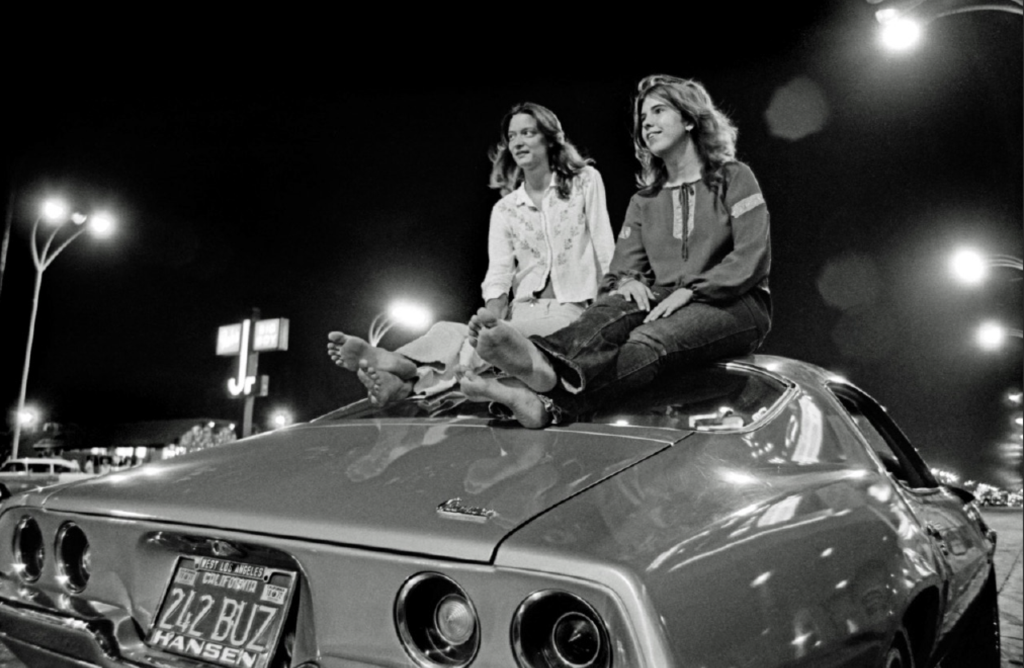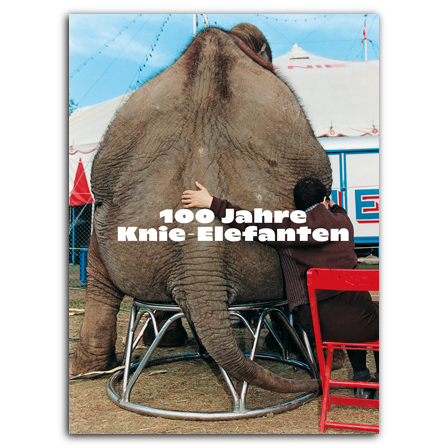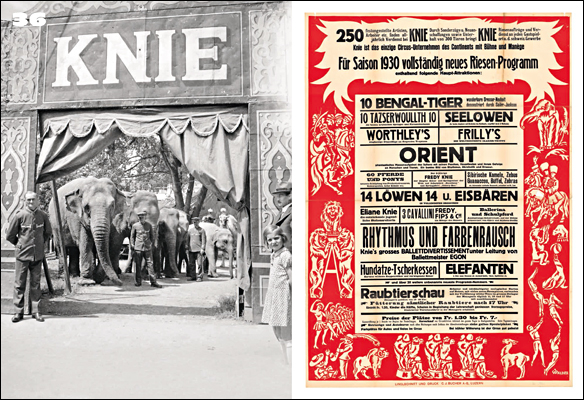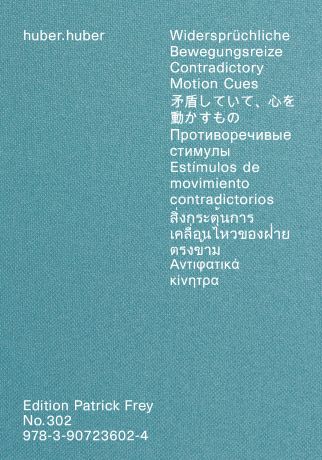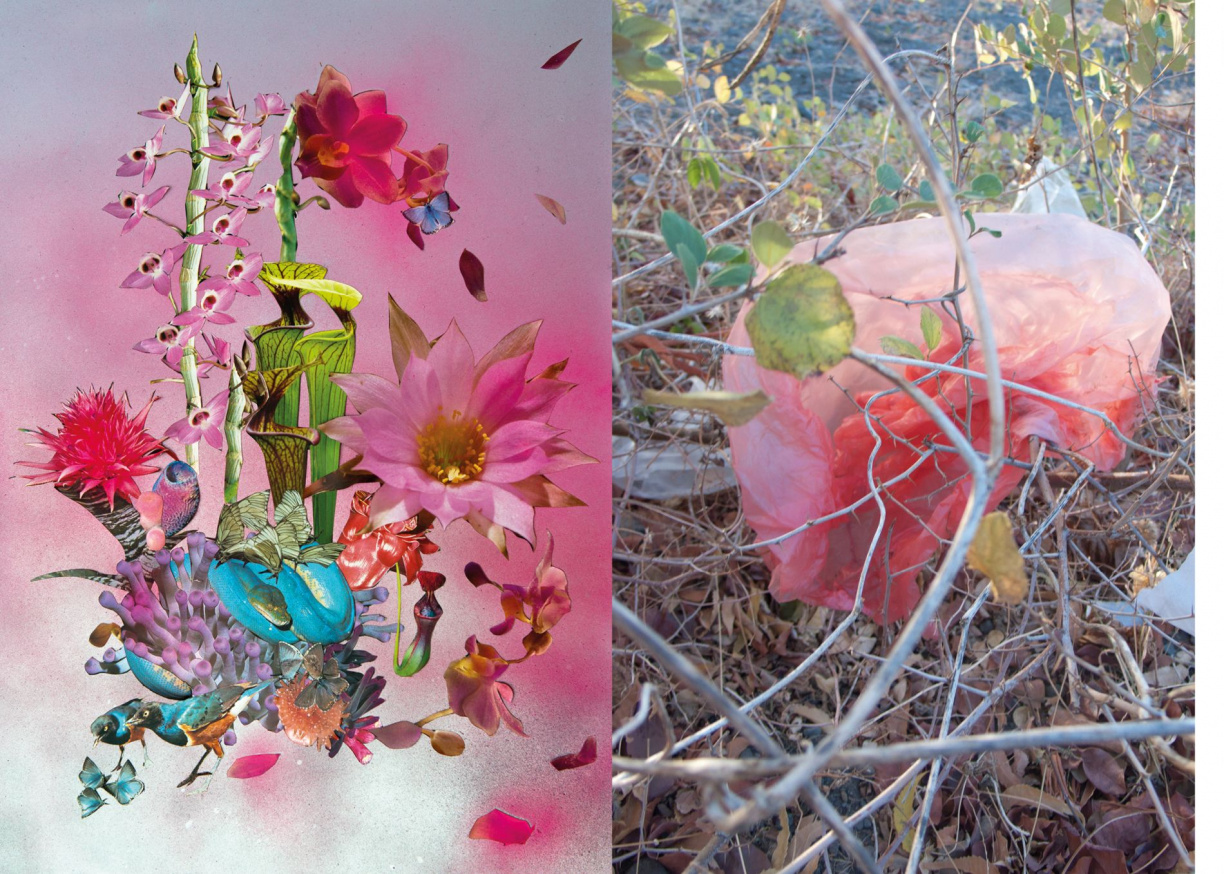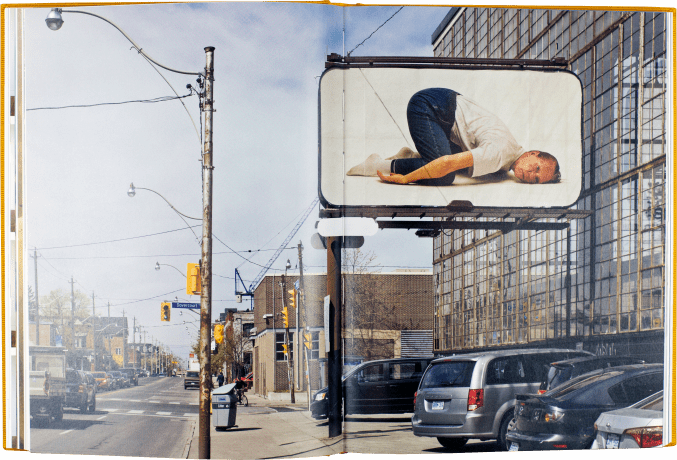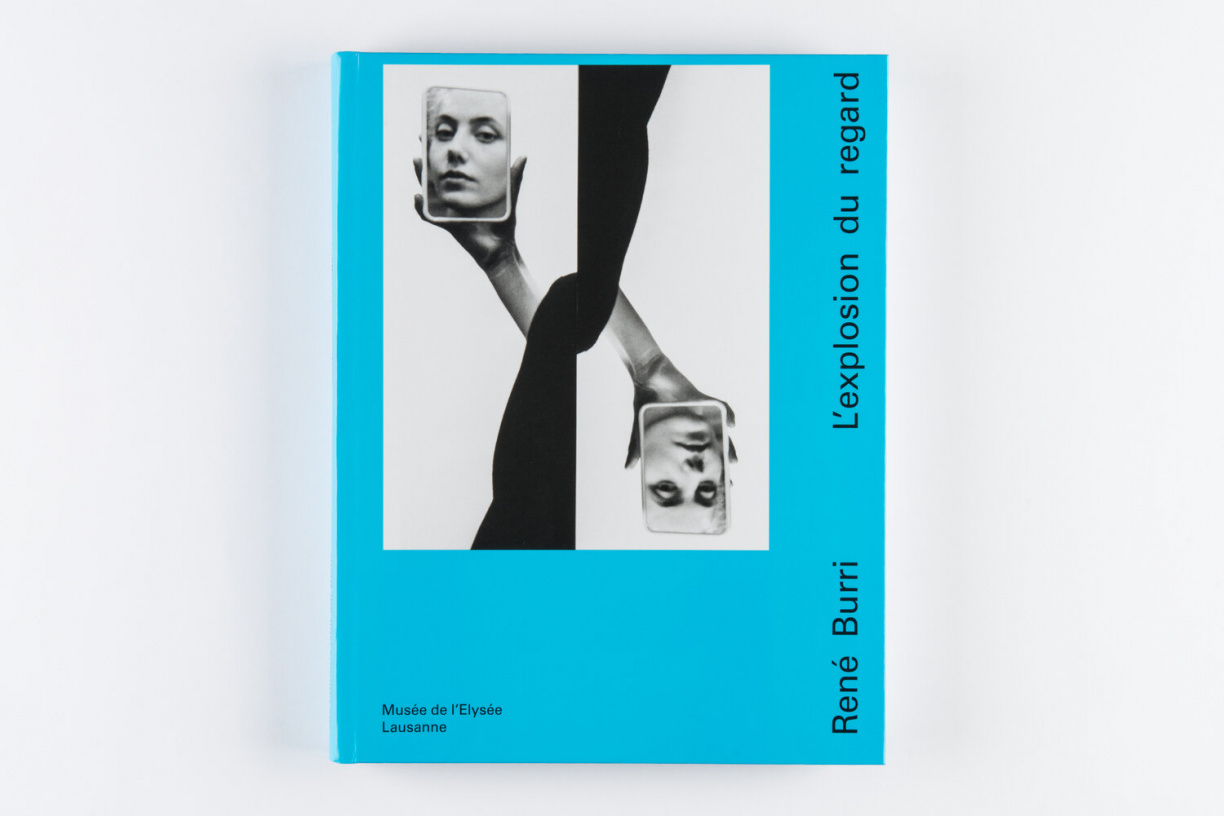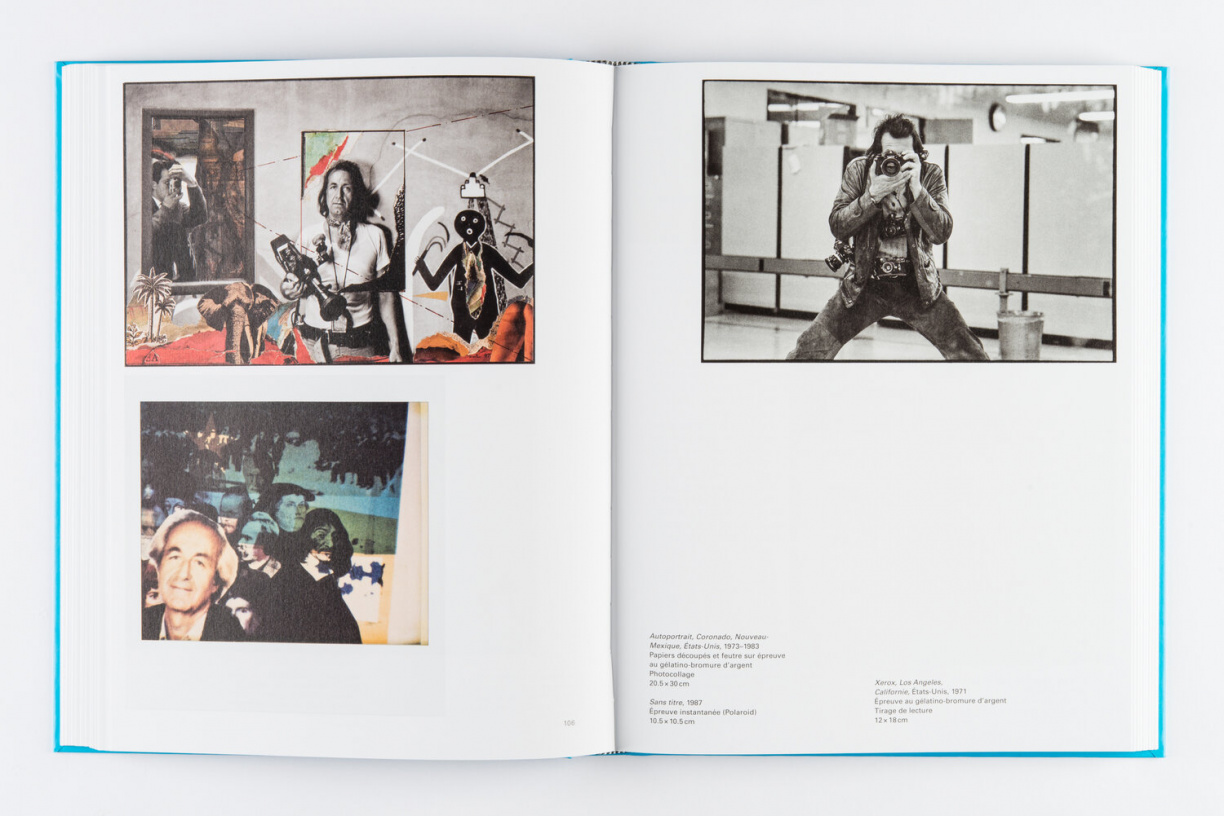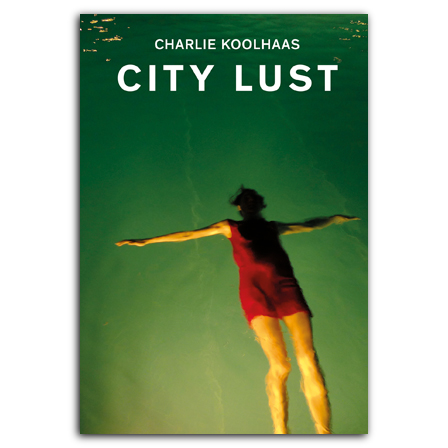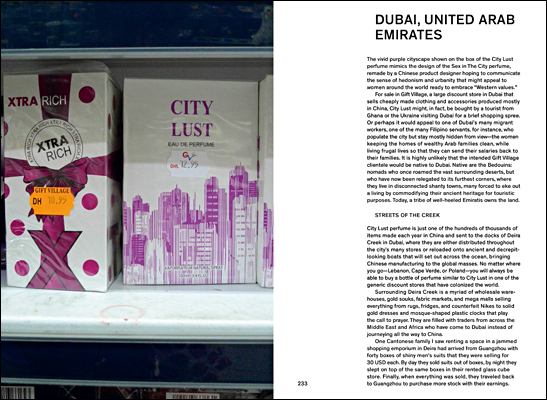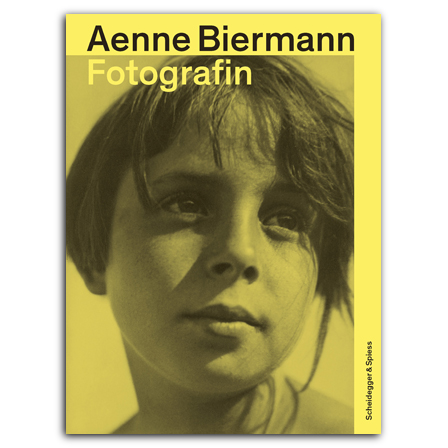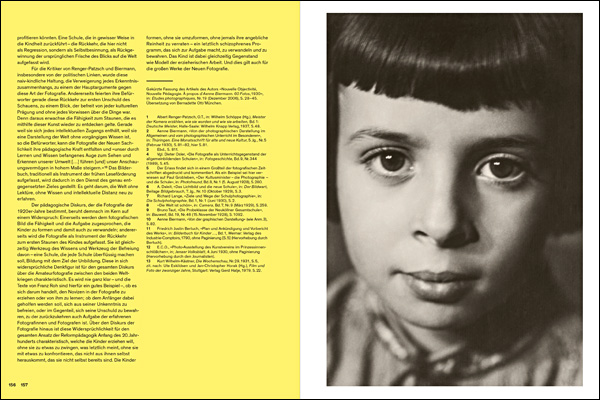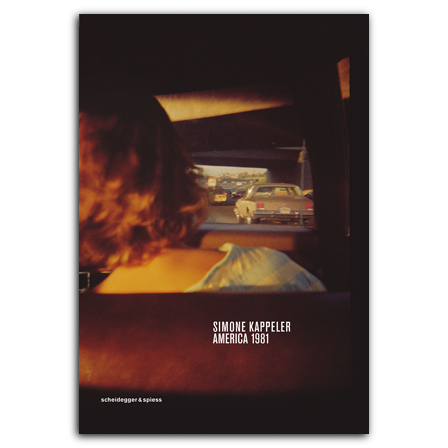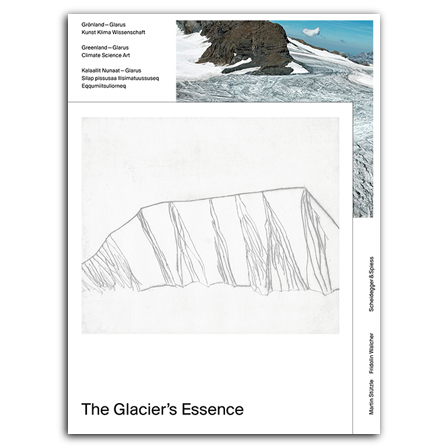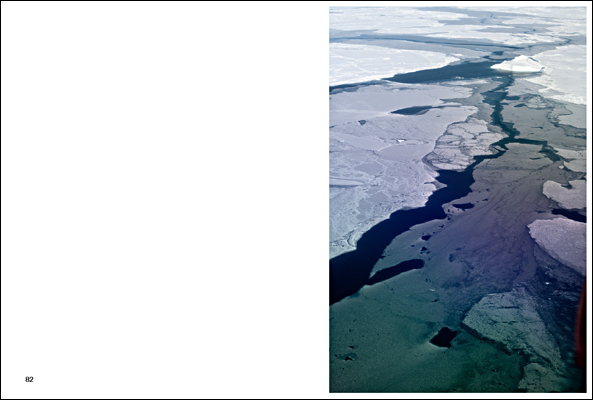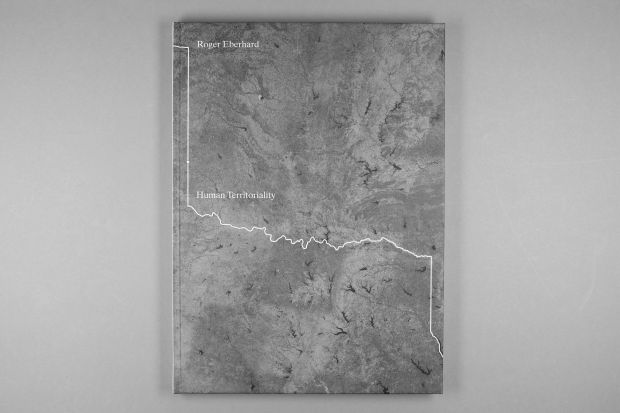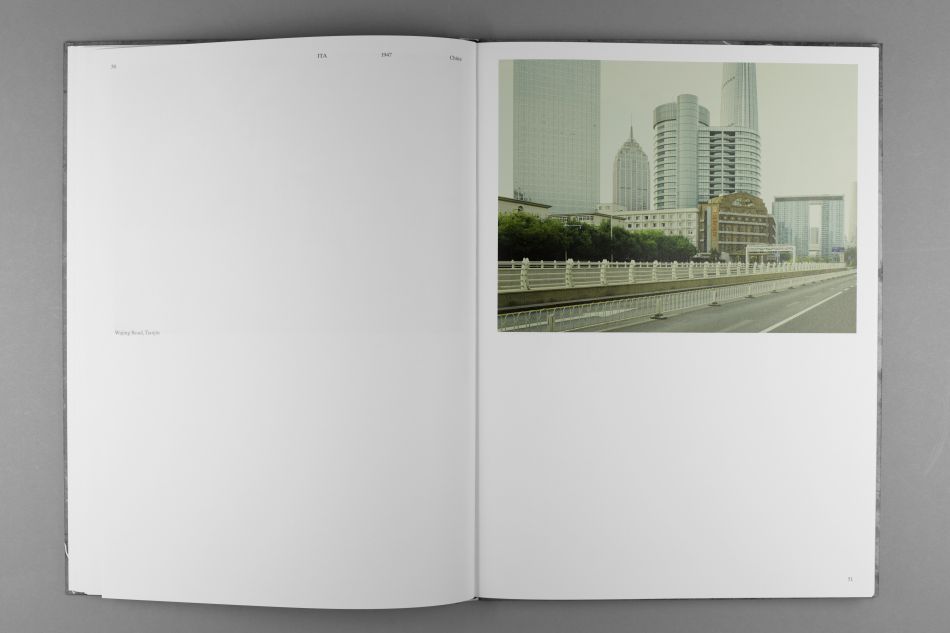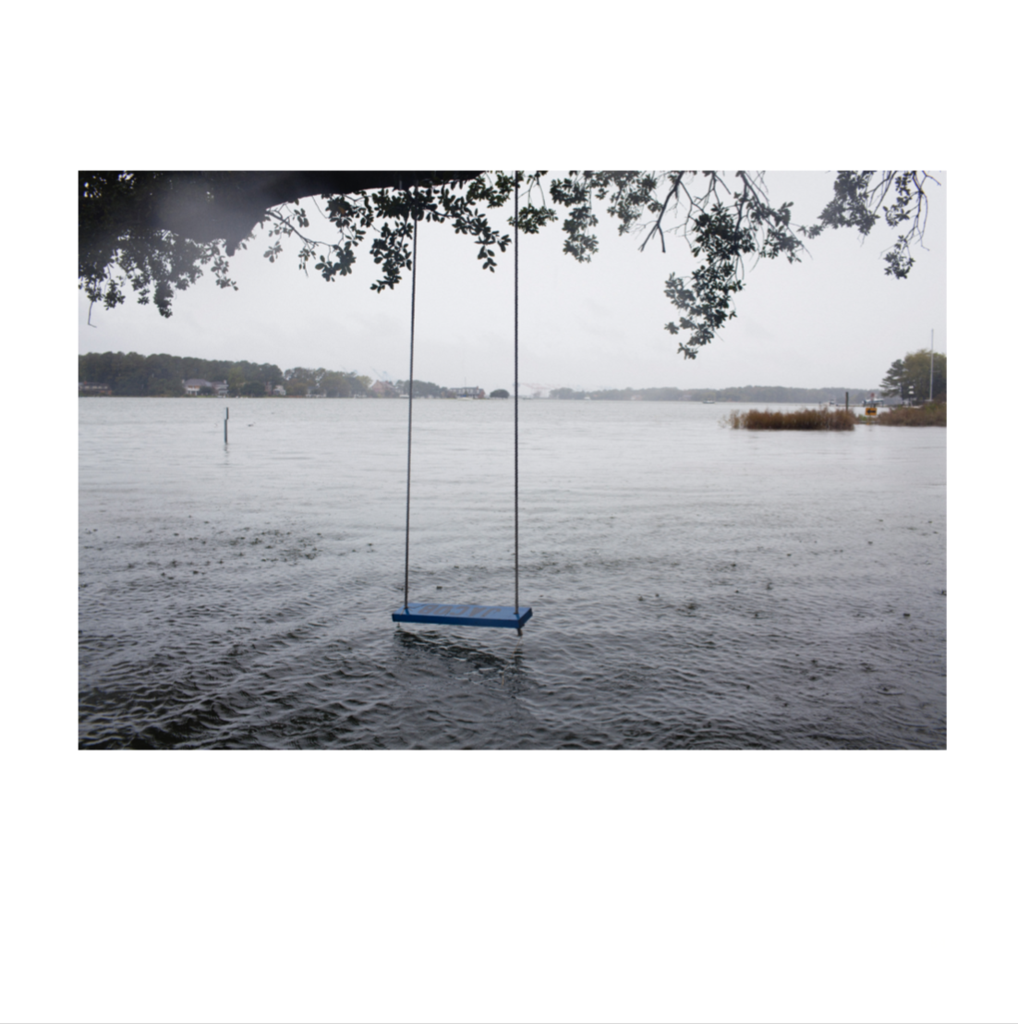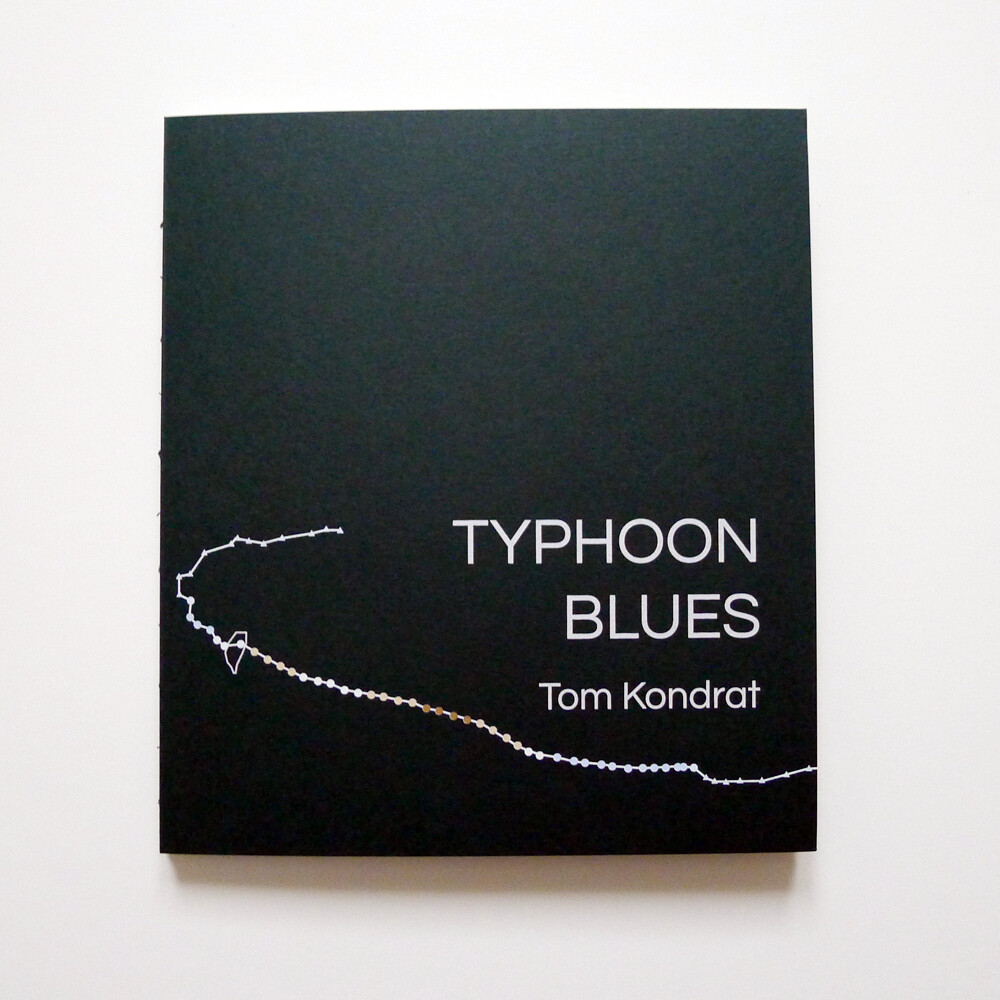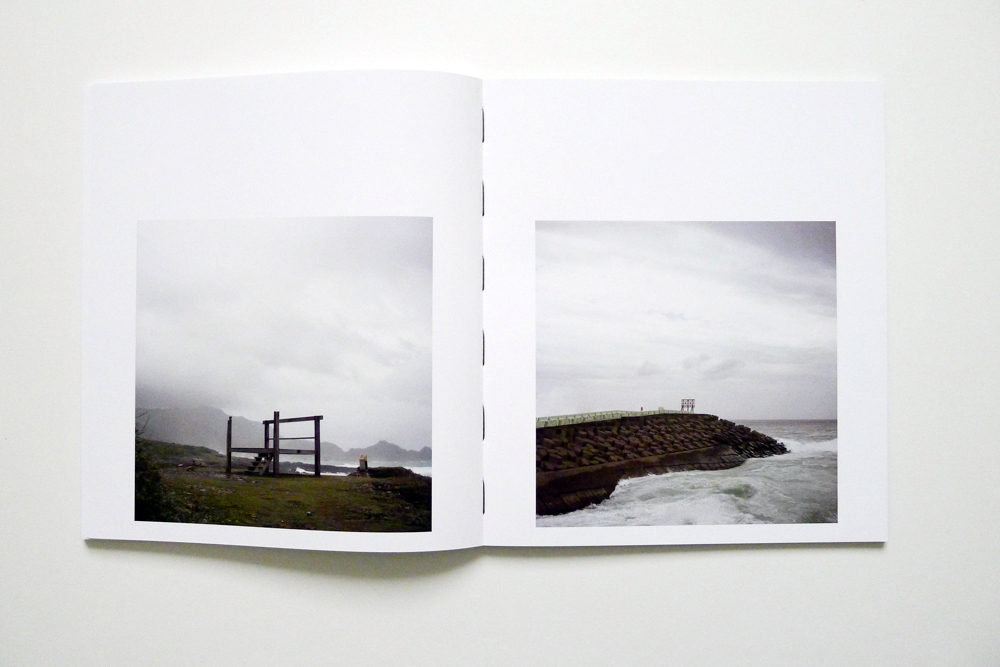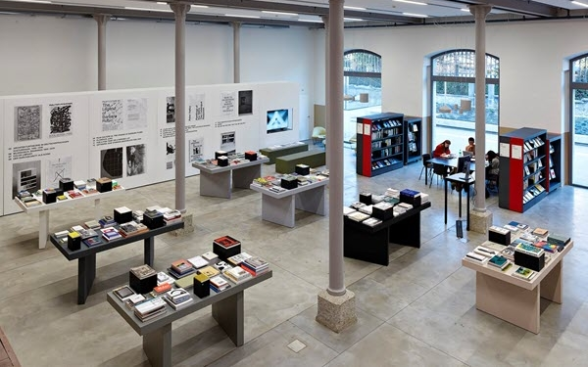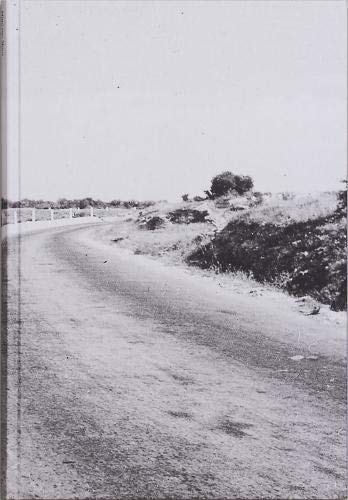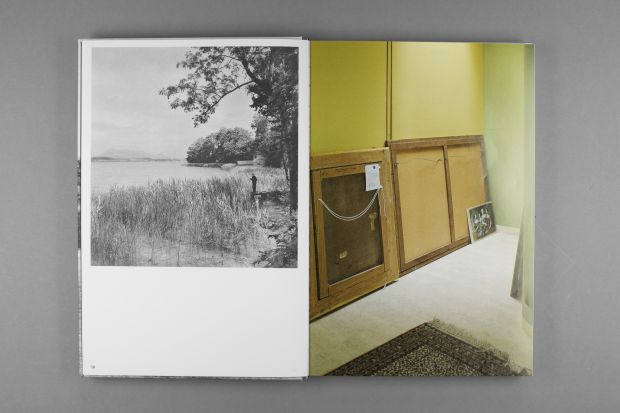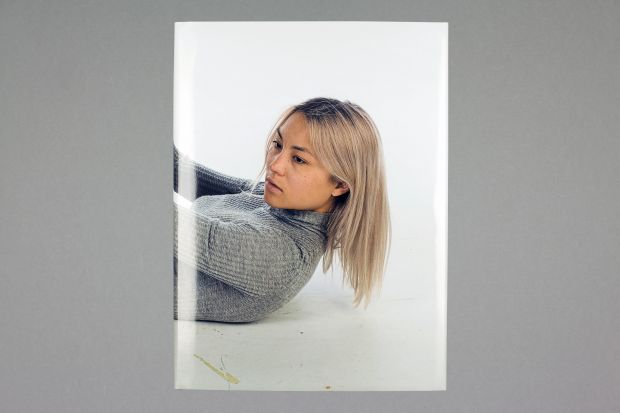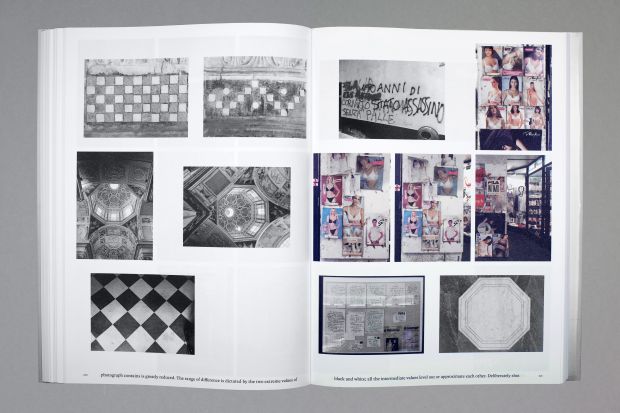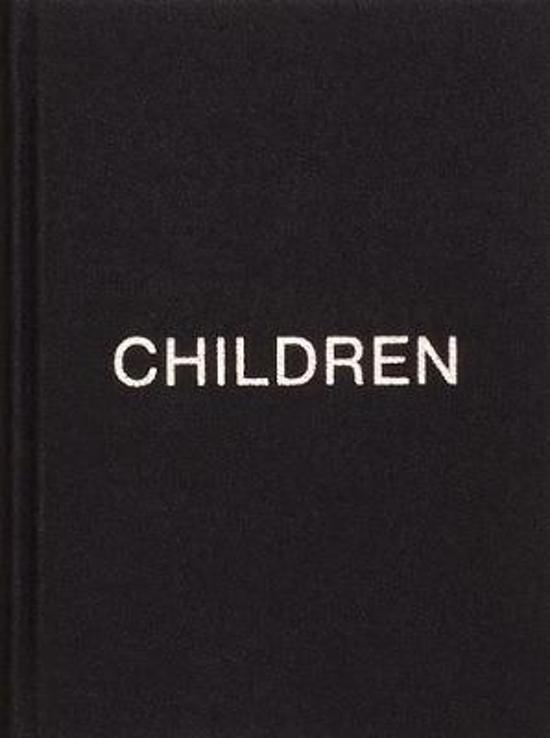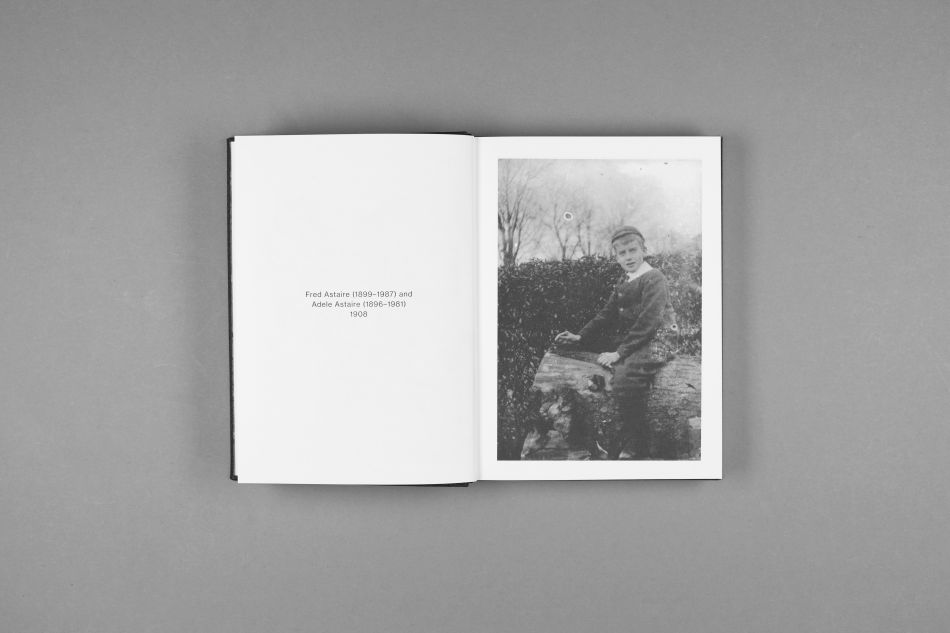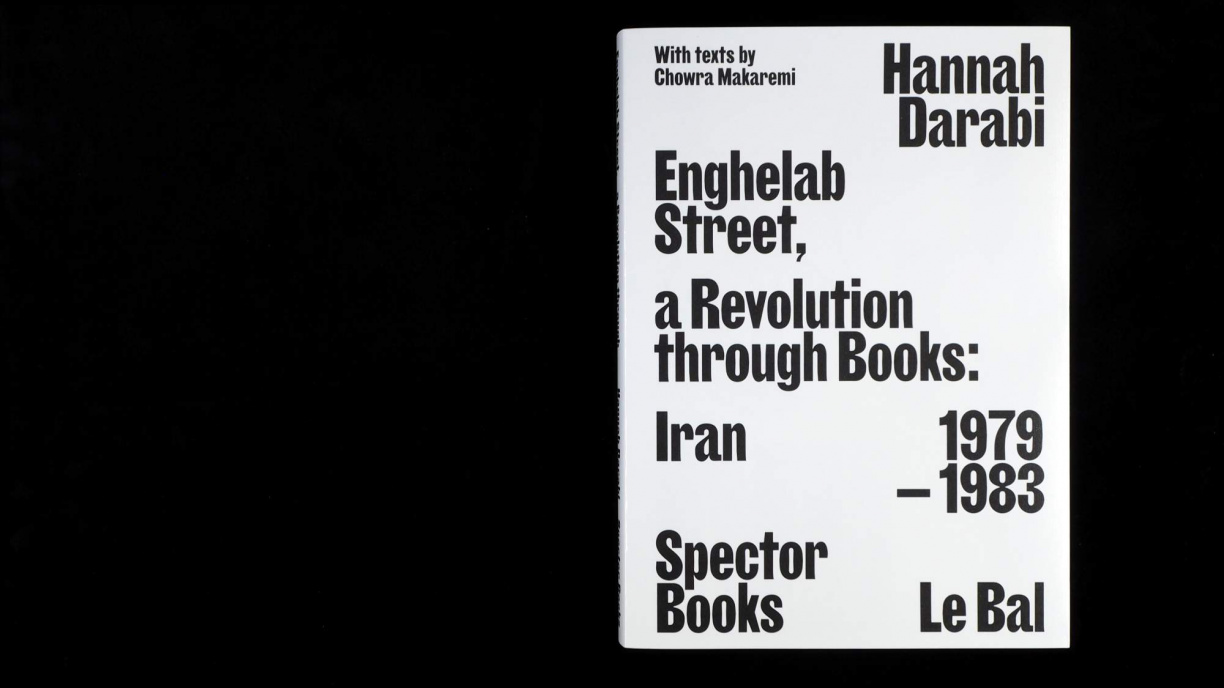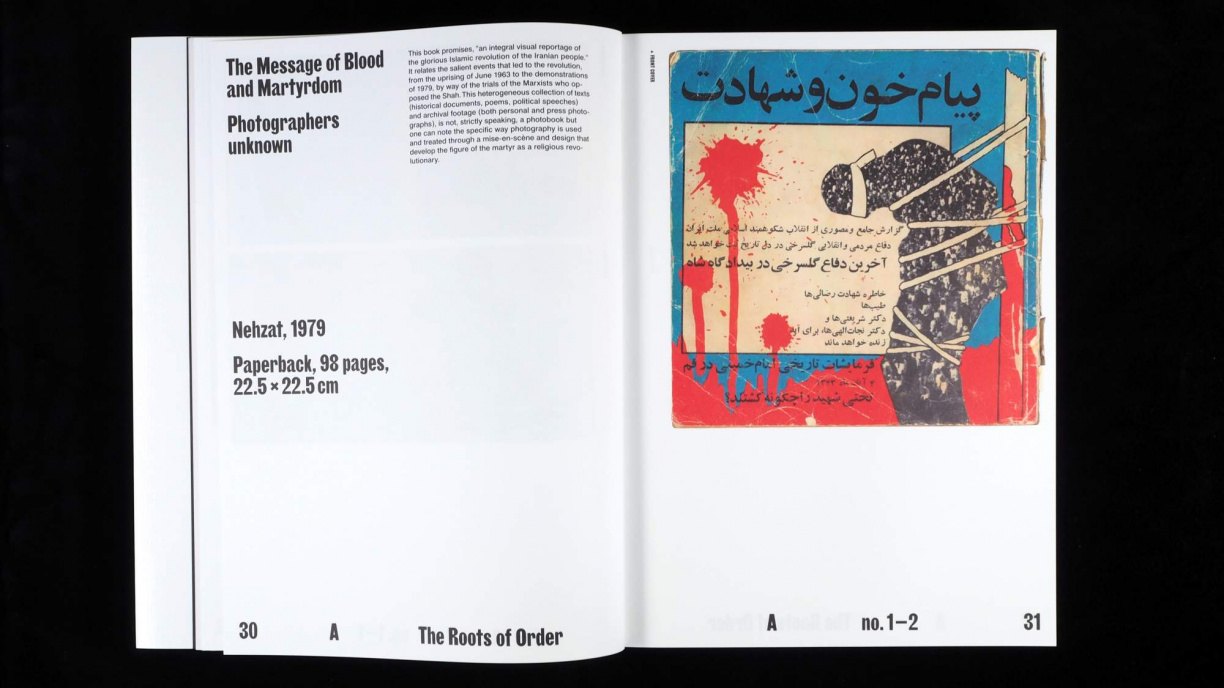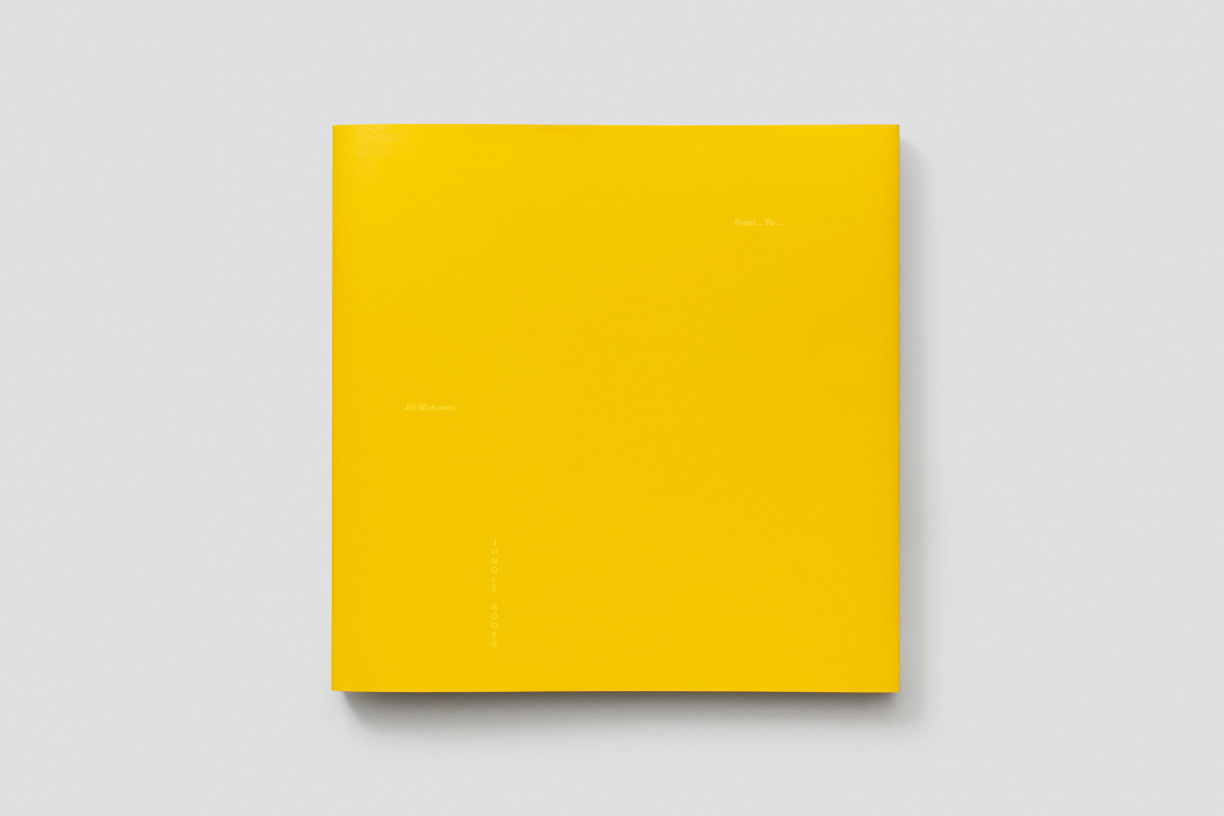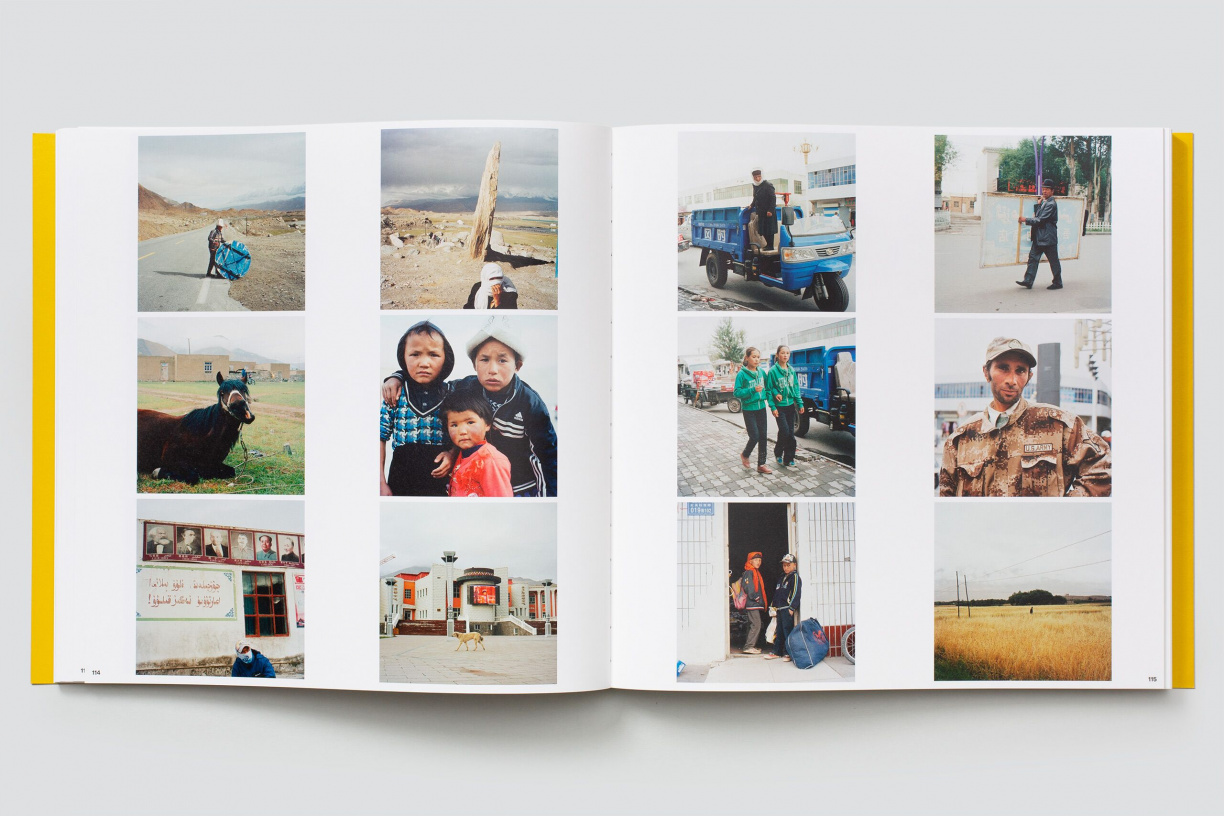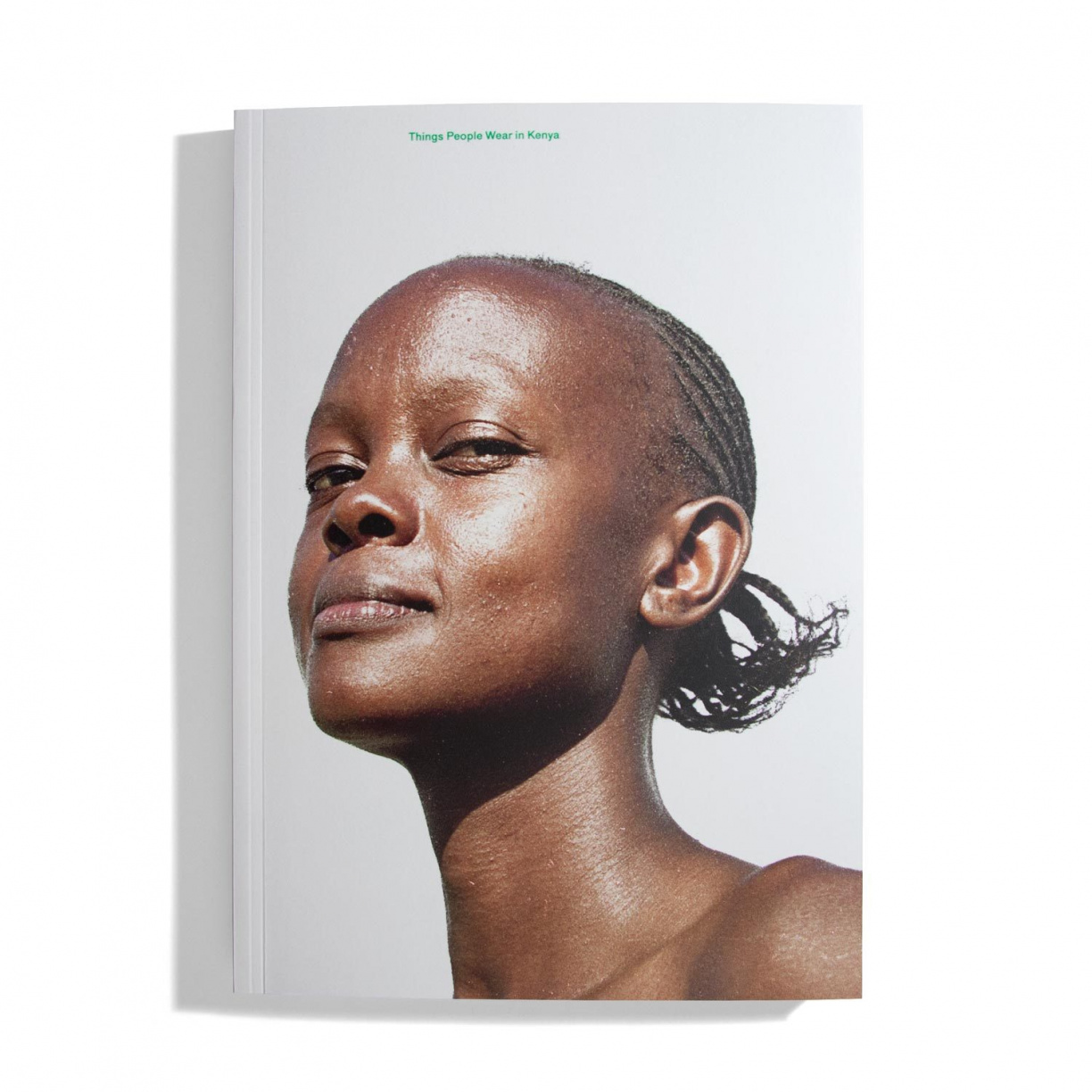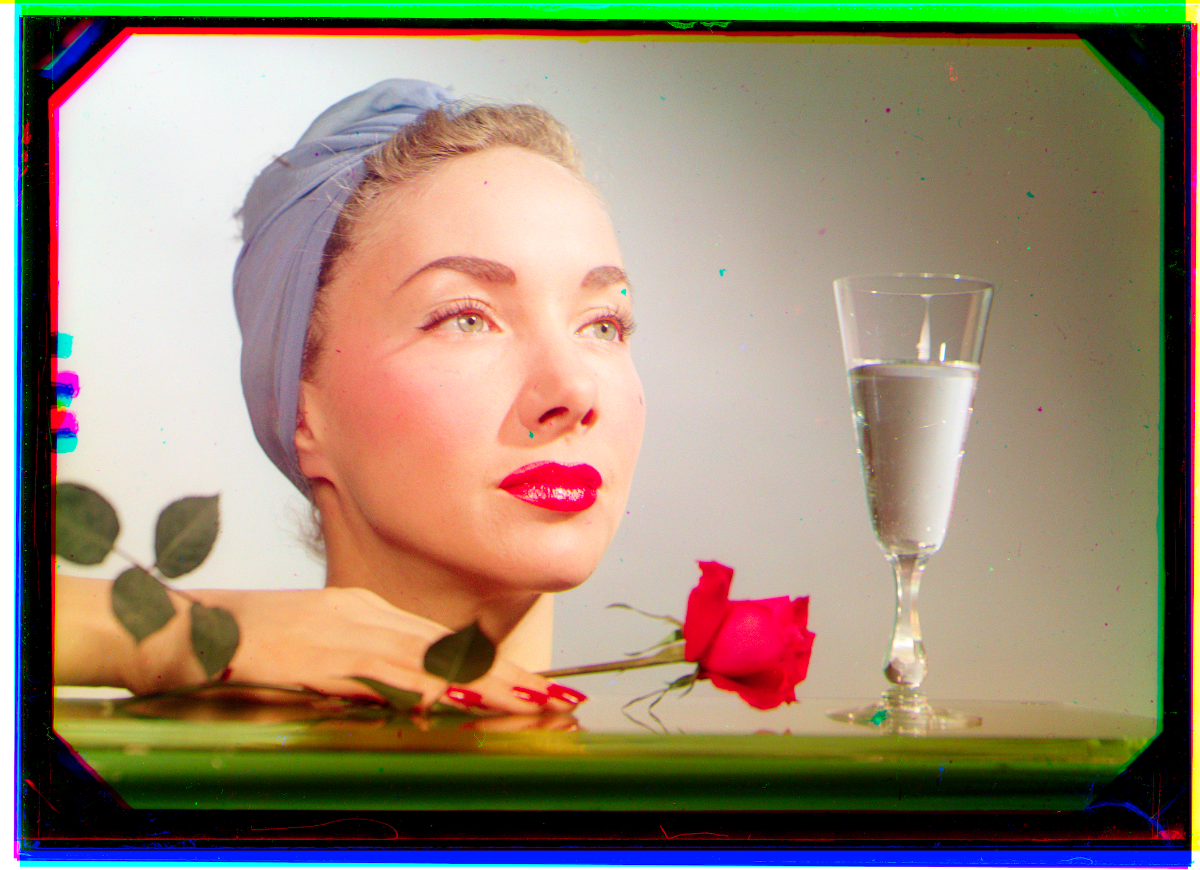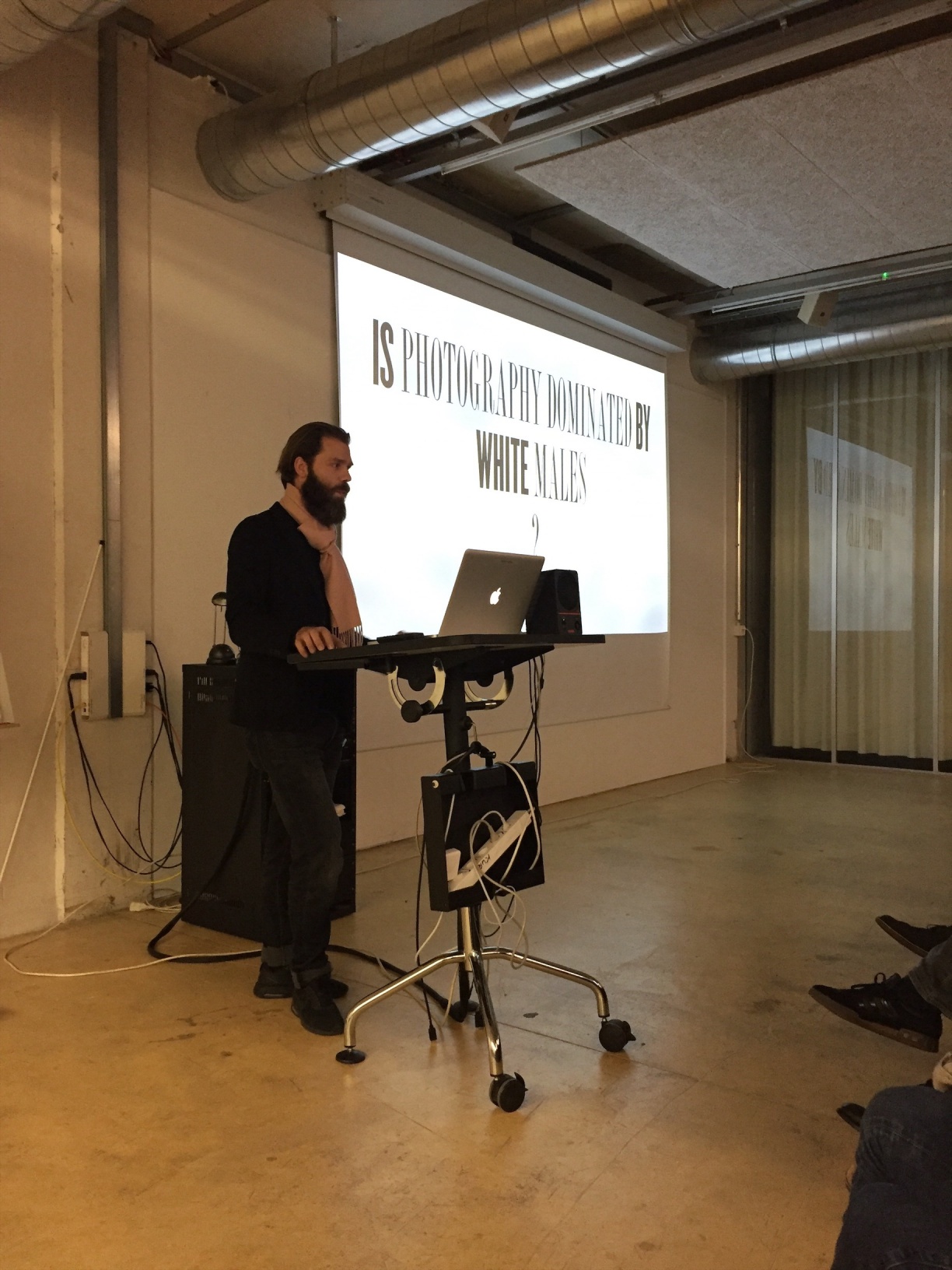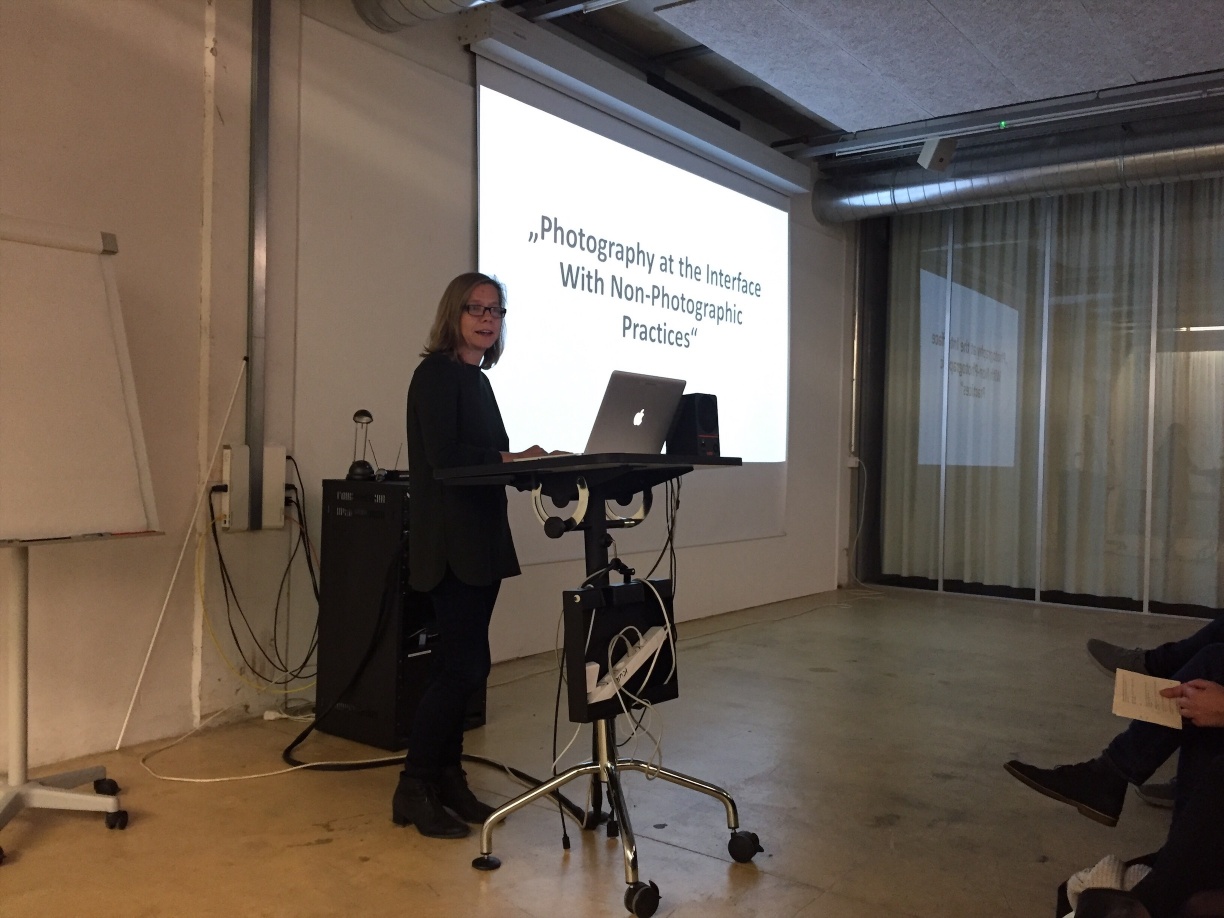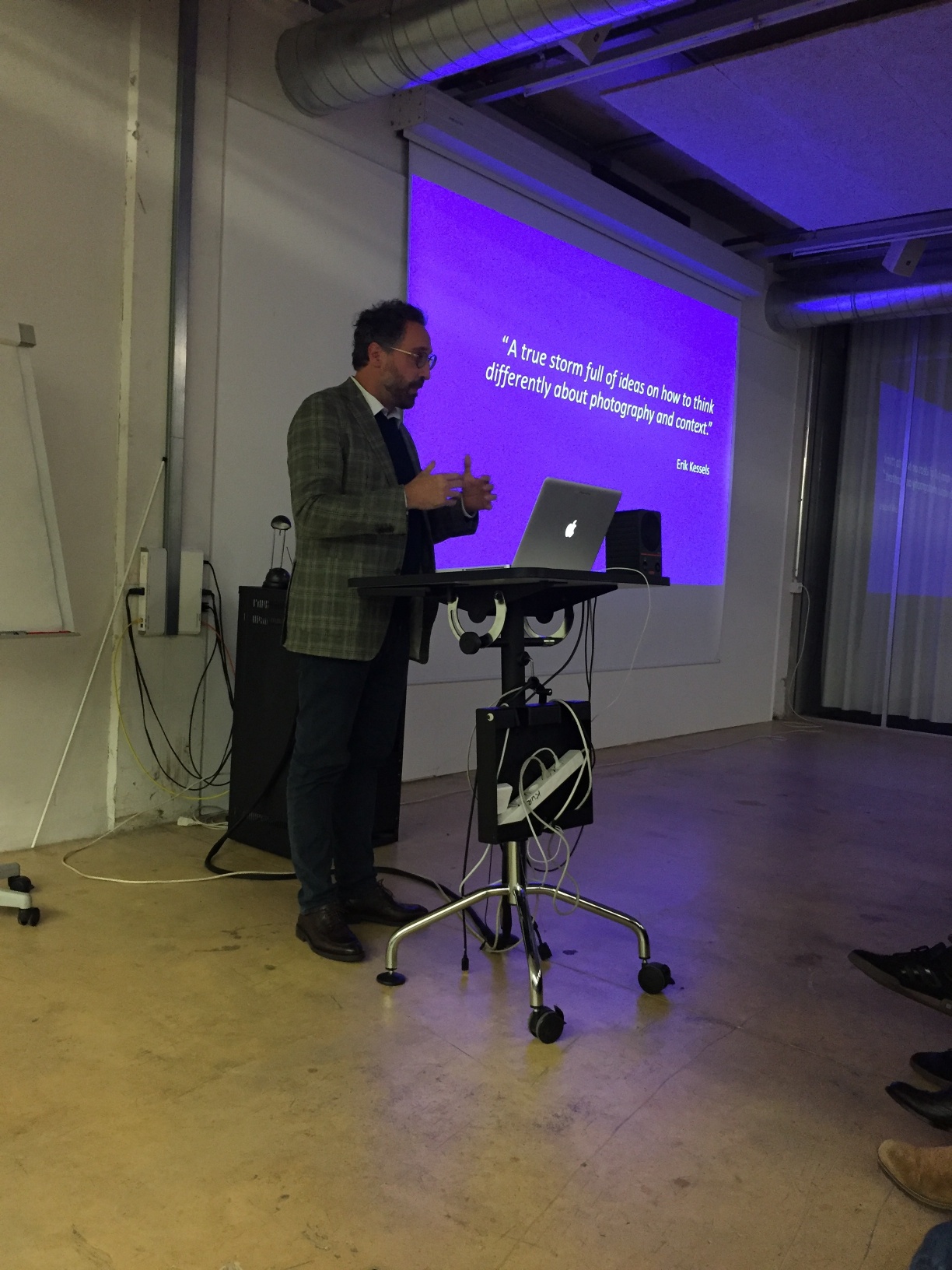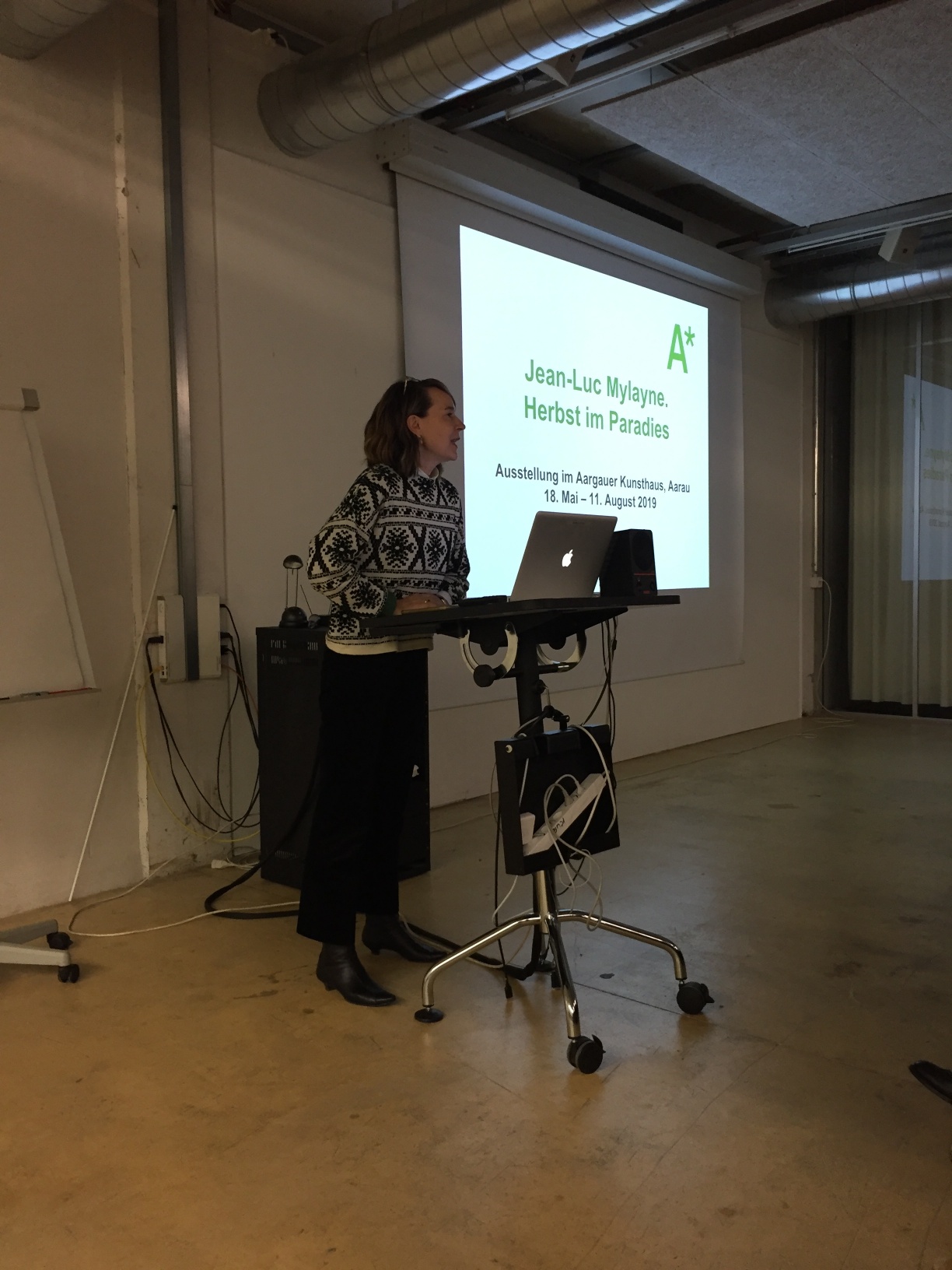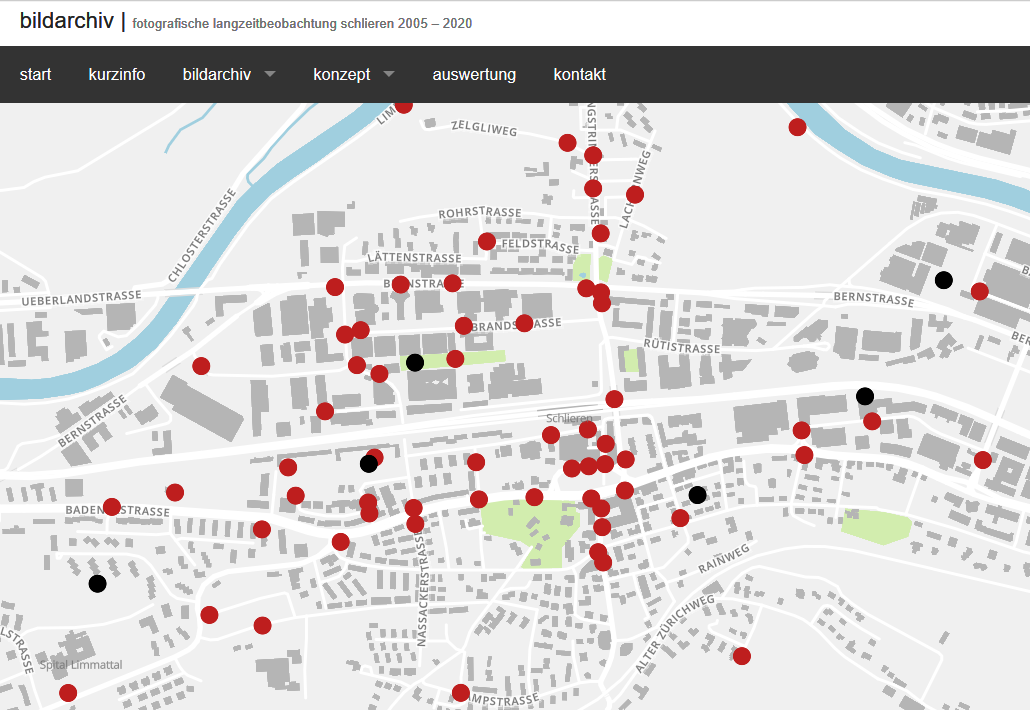Friday, 21 November 2025, 10.00– ca. 18.00 at Fotomuseum Winterthur and Fotostiftung Schweiz
PROGRAMME
10.00 – 11.00: Tour of the exhibitions (Poulomi Basu - Phantasmagoria and Roger Humbert - Fotografien für den geistigen Gebrauch)
11.00 – 12.30: General Assembly (Fotomuseum Winterthur)
12.30 – 14.00: Lunch (Bistro George)
14.00 – 17.00: What’s Next 2026 (open to the public, Fotomuseum Winterthur)
from 17.00: Apéro
Registrations are mandatory and open until 7 November 2025: Register here
The programme may be subject to change.
If you have to cancel your registration for any reason, please let us know as soon as possible.
CALL FOR PROJECTS: WHAT'S NEXT
Friday, 21 November 2025, 14.00 at Fotomuseum Winterthur
Submission deadline: Friday, 31 October 2025
We invite all our collective and individual members to submit a unique, important, and exciting project that is in their program for 2026. It can be an exhibition, an archive project, a publication, a research project, an event, an online presentation, or an educational project dealing with photography. Spectrum will make a selection from the submissions. The selected projects will be presented in person by each institution or individual member at the event. We ask our members that the presentations are made by one or two persons directly involved in the project. The presentations can include both images and text and will last 7 minutes each (time slots are strictly managed).
What's Next 2026 is designed to strengthen the network within the Swiss photography field and aims to promote an active dialogue about current projects taking place in Switzerland. The event is public and addressed to everyone interested in photography.
How to submit a project: send a brief description of the project (max 150 words) as well as one image (jpg) to give an impression of the project. Submissions must be sent by email by 31 October to spectrum@photography-in-switzerland.ch. You will hear from us by 7 November if your project is part of the presentations.
We are very excited to invite you to join us for our annual photobook presentation as part of Paris Photo 2025, hosted by Pro Helvetia and Spectrum - Photography in Switzerland.
When:
Thursday, 13 November 2025, 16.00-20.00
Where:
31 Rue de Turenne
75003 Paris
RSVP:
Please confirm your attendance via this link by 7 November 2025.
On this occasion, eight publications selected by Spectrum from all those recently funded by Pro Helvetia will be presented in the presence of the artists:
Nathalie Bissig, 'Thunder', Vexer Verlag
Olga Cafiero, 'Ephemeris', Editions Noir sur Blanc
Cortis & Sonderegger, 'STUDIO', Scheidegger & Spiess
Sara De Brito Faustino, 'A Home With No Roof', Ciao Press
Ruth Erdt, 'K12 / Schwamendingen, ein Randbezirk', Steidl Verlag
Sophie Huguenot, 'Television. A photographic essay on the staging of the news', Spector Books
Charlotte Krieger, 'Spare No Expense', Jungle Books
Emilio Nasser, 'Shipwreck of Dreams', Artphilein Editions
This initiative is part of Pro Helvetia's strategy to support photographic publications and aims to enable selected artists to participate in events organised during Paris Photo, while fostering exchanges within a network of cultural professionals dedicated to photography.
The event is organized in collaboration with Eurostandard, for the design and scenography, and with the help of the Centre culturel suisse.
Il Mese svizzero della fotografia 2025 è un festival nazionale organizzato da Spectrum – Photography in Switzerland. La sua seconda edizione si terrà dal 29 agosto al 5 ottobre 2025.
Maggiori informazioni e il programma completo sono disponibili sul sito www.swissphotomonth.ch.
Friday / Vendredi / Freitag, 16 May 2024, 11.15 - 14.00 at Zentrum Pasquart
The 28th edition of the Biel/Bienne Festival of Photography (03.-25.05.2025) presents new horizons and contemporary perspectives that offer new ways of representing landscape.
PROGRAMM (DE)
11.15
Treffen im Foyer des Zentrum Pasquart (Seevorstadt 71, Biel): Führung mit Sarah Girard, Direktorin
13.15 - 14.00
Getränke + Sandwiches offeriert
PROGRAMME (FR)
11.15
Rendez-vous au Foyer du Centre Pasquart (Faubourg du Lac 71, Bienne): Visite guidée avec Sarah Girard, directrice
13.15 - 14.00
Boissons + Sandwiches offerts
To join, please register at contact@jouph.ch.
We are delighted to invite our members to the Spectrum Day 2025, on 2 May in Bern!
PROGRAMME
10.30
Welcome & visit of dukab Fotolabor & -Atelier with Rafael Buess
Freiburgstrasse 251, 3018 Bern
12.00
Short walk to the next location
12.30
Lunch at leBeizli
Könizstrasse 161, 3097 Liebefeld
14.00
Visit of Atelier Reding
Könizstrasse 161, 3097 Liebefeld
16.30
Apéro
18.00
Suggested: Visit of the opening of the Biel/Bienne Festival of photography
(train at 17.16 from Bern to Biel).
In the morning we visit the photo laboratory and studio of Rafael Buess, who was Balthasar Burkhard's assistant. This collaboration had a significant influence on Buess' own photographic development. During his time as an assistant, Buess was able to gain valuable experience in photography, particularly in the field of large enlargements and the technical precision that characterised Burkhard's work.
The proximity to Burkhard enabled Buess to immerse himself in the world of professional photography and learn from one of Switzerland's most important photographers.
After lunch, we visit Nadine Reding's photo restoration studio, which offers a fascinating insight into the restoration, photo retouching and digitisation of photographs. The studio combines traditional craftsmanship with current restoration methods for almost all photographic materials including the digitisation of positives and negatives. The visit shows how photographs are preserved and conserved for future generations.
Those who would like to visit the opening of the Biel/Bienne Festival of photography following the Spectrum Day, can take the train at 17.16 from Bern to Biel.
The main programme will be held in German with translation options to French and English.
The transfer to and from Bern/Biel is not included.
Please register until 13 April 2025 via spectrum@photography-in-switzerland.ch and let us know about any dietary restrictions.
We hope to see you soon!
This year's General Assembly and the event What's Next 2025 will take place on 29 November 2024 at the Musée des Beaux-Arts Le Locle (MBAL).
Registrations for the event are mandatory and open until 3 November 2024: Register here
If you have to cancel your registration, please let us know as soon as possible.
PROGRAMME:
10h00 – 11h30 : General Assembly
11h30 – 12h30 : Guided Tour through the exhibition Pr³ : Prison, Protest, Print, with Federica Chiocchetti and Laurence Rasti
12h30 - 14h00 : lunch
14h00 - 17h00 (incl. break) : What’s Next 2025 (open to the public)
from 17h00 : Apéro
WHAT'S NEXT 2025 – CALL FOR PROJECTS
Submission deadline: Sunday, 3 November 2024
We invite all our collective and individual members to submit a unique, important, and exciting project that is in their program for 2025. It can be an exhibition, an archive project, a publication, a research project, an event, an online presentation, or an educational project dealing with photography. Spectrum will make a selection from the submissions. The selected projects will be presented in person by each institution or individual member at the event. We ask our members that the presentations are made by one or two persons directly involved in the project. The presentations can include both images and text and will last 7 minutes each (time slots are strictly managed). The presentation can be held in a national language of choice or English.
What's Next 2025 is designed to strengthen the network within the Swiss photography field and aims to promote an active dialogue about current projects taking place in Switzerland. The event is public and addressed to everyone interested in photography.
How to submit a project: send a brief description of the project (max 150 words) as well as one image (jpg) to give an impression of the project. Submissions must be sent by email by 3 November to spectrum@photography-in-switzerland.ch . You will hear from us by 8 November if your project is part of the presentations.
We are looking forward to receiving your projects!
We are delighted to share with you the first edition of the Swiss Photomonth which will take place from 30 August to 6 October 2024!
The Swiss Photomonth is a new initiative by the association Spectrum – Photography in Switzerland. It acts as a loudspeaker for the many compelling photography events happening across the country from the end of August to the beginning of October. It aims to firmly bring the spotlight on the Swiss photography scene in its entirety, to foster new initiatives and collaborations, and to inspire the public to discover new venues and events.
We are lucky in Switzerland to have a strong and dynamic photography scene, with many actors, small and large, across the country: museums, galleries, festivals, libraries, bookshops, schools, and more. The Swiss Photomonth relies on our collaborative and creative spirit to uplift each other and increase the visibility and interest of the public for photography.
The project is still being developed and Spectrum will regularly announce the new steps of the project in the lead up to the first edition.
What exactly is the Swiss Photomonth? Is it a new festival?
The Swiss Photomonth is not a separate manifestation or festival: it is a joining of force of the photography scene to increase the visibility and attendance of existing events, while encouraging photography actors and broader cultural actors to propose new photography events at that time.
Who can participate?
Each member of Spectrum can propose their events as part of the programme, but non-members can also propose events to be part of the official programme. Applications will be reviewed to ensure the quality and professionalism of the programme.
What type of events will there be?
Any type of event related to photography happening in Switzerland between 30 August and 6 October can be part of the Swiss Photomonth: exhibitions, lab tours, performances, talks and conferences, book launches, archive & collection tours, studio visits, workshops, etc. Some will be part of the regular programming of art venues, and others will be proposed specifically for the Swiss Photomonth.
How will it be communicated to the public?
The Swiss Photomonth will have a specific visual identity, and communicate using dedicated digital communication channels (website, newsletter, social media channels) and printed material. Each participant will be encouraged to share information about the Swiss Photomonth, and a specific press campaign will also be run.
Who organises the Swiss Photomonth?
The Swiss Photomonth is initiated and organised by the association Spectrum – Photography in Switzerland.
The coordinator of the Swiss Photomonth is Rahel Christen. The Spectrum board has formed a working group for the project which consists of Danaé Panchaud, Alfio Tommasini, Nadine Wietlisbach, and Rahel Christen.
The first edition of the Swiss Photomonth is supported by Pro Helvetia.
How can I get further information about it?
If you are interested in participating or want more information, visit www.swissphotomonth.ch or reach out to spectrum@photography-in-switzerland.ch.
Wednesday, 12 June 2014, 10.30 at Volkshaus Basel
photo basel would like to invite the members of Spectrum to their annual event «Curators, Coffee & Croissants».
Before the opening hours, photo basel opens its doors to give an exclusive tour through the fair.
In order to attend, please RSVP until Monday, 27 May 2024: alessa@photo-basel.com
PROGRAMME
10.30
Welcome with Coffee & Croissants
11.00
Introduction by director Sven Eisenhut followed by a guided tour through the fair with artistic director Alessa Widmer. Gallerists as well as a selection of artists will be present.
12.30
Individual visit of photo basel or transit to other events and fairs in Basel with the photo basel vip shuttle.
photo basel is Switzerland's first and only art fair dedicated to photography-based art. photo basel brings together galleries from around the world in a unique, authentic setting. For its collectors, visitors or buyers, photo basel is an active platform which fosters the dialog between all actors of the photography community and beyond. Taking place during Art Basel week at Volkshaus Basel from 10 to 16 June 2024, photo basel's 9th edition welcomes 41 international exhibitors coming from 15 different countries.
For more information about photo basel, visit www.photo-basel.com
Biel/Bienne Festival of Photography and Fotofestival Lenzburg are inviting Spectrum members to spend a day at both festivals on Friday, 24 May 2024, 11.30h - 19.30h.
The program consists of private tours of the festivals, including an exclusive preview of Fotofestival Lenzburg, and an apéro at the end of the day. You can find all details below.
Please register by April 30th at contact@jouph.ch and specify if you come to both Biel and Lenzburg (for sandwiches and apéro).
The event is free of charge. Transportation between Biel and Lenzburg is not included.
We are looking forward to seeing you there!
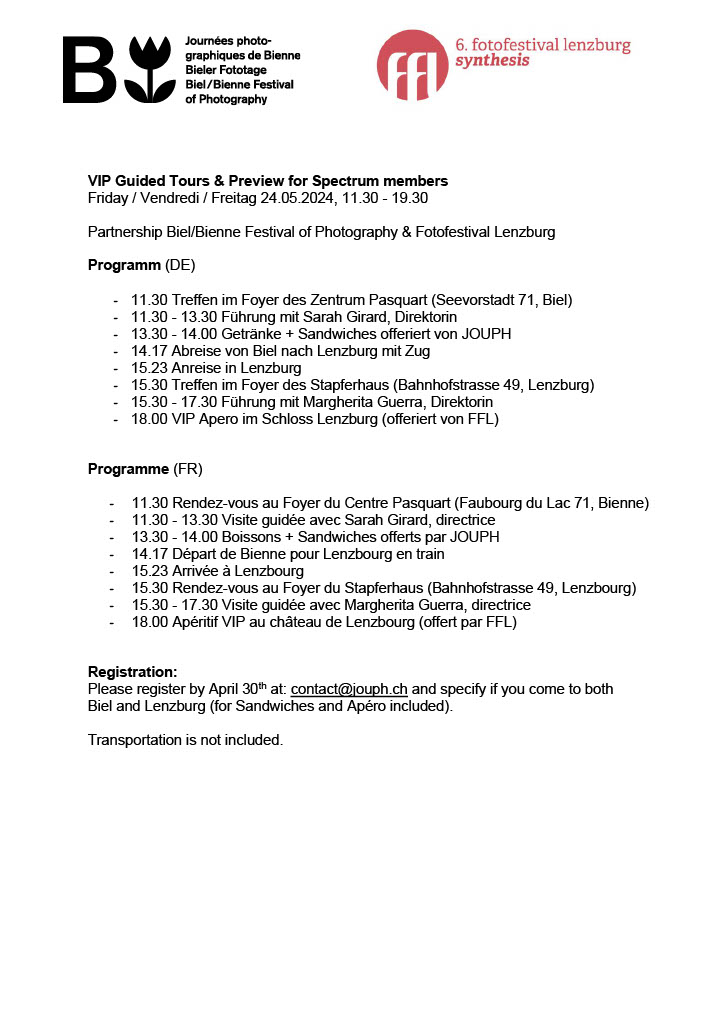
Friday, 1 December 2023, 10.45-18.00 at HEK (House of Electronic Arts) Basel
GENERAL ASSEMBLY
All Sepctrum members are invited to our annual General Assembly, which will take place on Friday, 1st December 2023, 10.45-12.30, followed by a lunch at HEK (House of Electronic Arts) Basel.
We will look at the Spectrum year 2023 and welcome our new members. This event is for Spectrum members only. Registration is mandatory. You can find the link to register in the September Spectrum Newsletter.
WHAT'S NEXT 2024
What's Next 2024 takes place from 13:30-16:00 at HEK Basel.
Spectrum members will present 20 projects in their program for 2024. The event is designed to strengthen the network within the Swiss photography field and aims to promote an active dialogue about current projects taking place in Switzerland. The event is public and addressed to everyone interested in photography.
You can find the projects presented below.
If you would like to attend What's Next 2024, please register here until Sunday, 12th November 2023.
PROGRAM
10.45 - 12.30: General Assembly
12.30 - 13.30: Lunch
13.30 - 16.00: What's Next 2024
16.00 : Apéro
17.00 - 17.45: Guided Tour through the exhibition "Regionale 24"
HOW TO GET THERE
After arriving at Basel SBB, take the tram number 11 in the direction of "Aesch Dorf" (platform G) and get off at "Freilager". Cross the tram tracks, and you will see the HEK building at the other side of the Freilager square. You regonise it by a big mushroom sculpture on the roof.
Address:
HEK (Haus der Elektronischen Künste) Basel
Freilager-Platz 9
4142 Münchenstein
We are looking forward to seeing you in Basel!

Spectrum – Photography in Switzerland and the International Photo Festival Olten (IPFO) are delighted to invite all Spectrum members to a private visit of the festival.
Before the actual opening hours, IPFO gives an exclusive preview tour through the festival on Wednesday, 23 August 2023, 17.00 – 19.00.
Please register for the event until 20 August at christoph@ipfo.ch
PROGRAM
17.00:
Welcome
17.30:
Introduction by Director Remo Buess followed by a guided tour through the fair with curator Miriam Edmunds.
18.30:
Individual visits at the festival or get together at the festival bar for chats and drinks
All participants receive the exhibition pass which grants access to all exhibitions during the whole festival
19.00:
Participation at the opening ceremony of the festival
ABOUT THE FESTIVAL
IPFO is this year organizing the 4th edition of it international photo festival as a biennale. Apart of numerous seminars and workshops it will this year also showcase more than 10 exhibitions (indoor and outdoor), various evening speeches and a vast cultural mediation program. The festival tent brings the photography industry together for discussions, networking, laughter and drinks!
In addition, the IPFO is running the Haus der Fotografie in Olten, showing international photography exhibitions since 2020. Currently we show Martin Parr´s PARRATHON which will also run during the festival.
PRACTICAL INFORMATION
Wednesday, 23 August 2023
From 17.00 to 19.00
International Photo Festival Olten, Kirchgasse 2, 4600 Olten
Meeting point at the festival tent.
Participation is for Spectrum members only and free of charge.
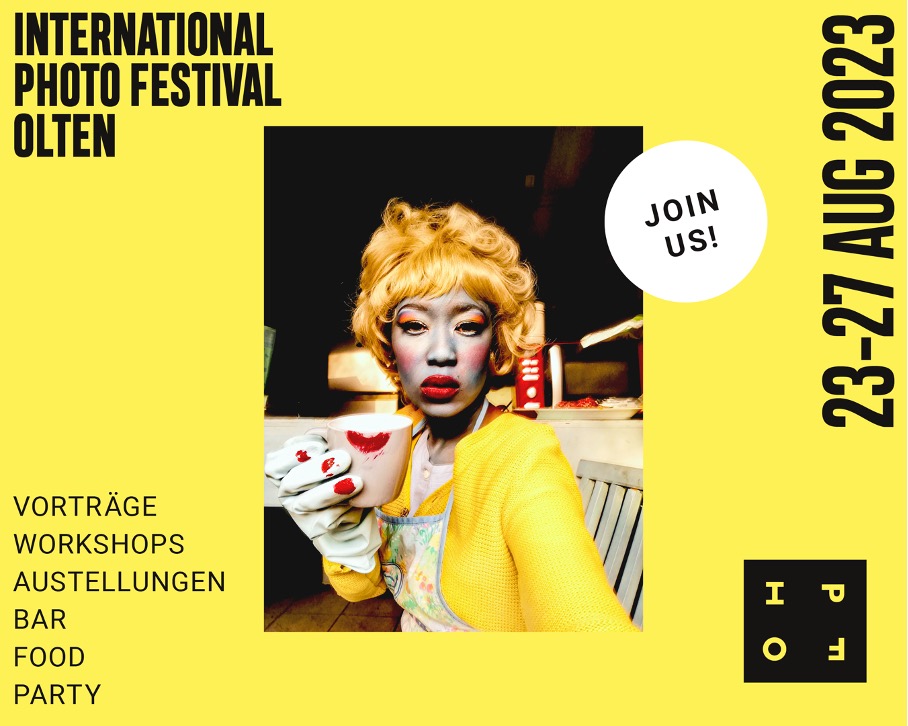
Spectrum – Photography in Switzerland and photo basel are delighted to invite all Spectrum members to a private visit of the fair.
Before the actual opening hours, photo basel opens its doors at Volkshaus Basel to give an exclusive tour through the fair on Wednesday, 14 June 2023, 10.30 am – 12.30 pm.
Please register for the event until 15 May at alessa@photo-basel.com.
Program
10.30:
Welcome with Coffee & Croissants
11.00:
Introduction by Director Sven Eisenhut followed by a guided tour through the fair with Artistic Director Alessa Widmer. Gallerists as well as a selection of artists will be present.
12.30:
Individual visit of photo basel or transit to other events and fairs in Basel with the photo basel vip shuttle.
About the fair
photo basel is Switzerland's first and only art fair dedicated to photography-based art and brings together galleries from around the world in a unique, authentic setting. For its collectors, visitors or buyers – photo basel is an active platform which fosters the dialogue between all actors of the photography community and beyond. Taking place during Art Basel week from 12 – 18 June, photo basel is delighted to have 40 international galleries participating.
In addition, photo basel is thrilled to announce a varied supporting program including two special exhibitions at this year’s 8th edition:
Pure Photography. 20th Century Floral Masterworks with works by Ansel Adams, Wynn Bullock, Imogen Cunningham, Edward Weston and others. In collaboration with WBB Gallery (Zürich).
Alex Kayser. In collaboration with Galerie Esther Woerdehoff (Genève & Paris) and the Alex Kayser Foundation.
Practical information
Wednesday, 14 June 2023
From 10.30 am to 12.30 pm
photo basel
Volkshaus Basel, Rebgasse 12-14, 4058 Basel
Meeting point at the entrance of the fair.
The event is reserved for Spectrum members only.
Participation is free of charge.

The Spectrum Weekend 2023 will take place from Thursday, 20. to Saturday, 22. April 2023 in Lucerne and is reserved for Spectrum members only.
Due to the extensive programme, there is a registration fee of CHF 100 for the entire Weekend, covering all expenses except for dinner on Thursday evening and Saturday evening. Participants must also organise their own travel and accommodation.
Registrations are open until 17 March 2023.
PROGRAMME
Thursday 20 April 2023
16.00: Welcome Apéro at Camera Arts Atelier.
With Prof. Dr. Jacqueline Holzer (Director of the HSLU Department of Design & Art).
17.30: Public opening of the exhibition Transmedia Storytelling / Visual Narratives,including a guided tour through the exhibitions.
19.30: Dinner in a restaurant in Lucerne (optional).
Friday 21 April 2023
10.30: Welcome and coffee at Camera Art Atelier.
With Martin Wiedmer (Vice Dean, Head of Research HSLU Design & Art) and Prof. Dr. Orlando Budelacci (Vice Dean, Head of Bachelor's and
Master's Programmes HSLU Design & Art).
10.45: Presentation of Camera Arts & short presentations of their work by studentsof the programme.
12.00: Lunch at Nylon (at HSLU).
13.00: Performative & participative workshop on book/zine design and making withBrian Paul Lamotte and Salvatore Vitale.
18.00: Apero and performative dinner cooked at Camera Arts.
Saturday 22 April 2023
10.30: Coffee and welcome at Museum im Bellpark in Kriens, followed by a guidedtour by Hilar Stadler, director of the museum.
12.00: Lunch in a restaurant in Lucerne.
13.30: Visit of the artist run space Ahoi!
15.00: Boat trip on Lake Lucerne accompanied by a reading (tbc), with a short hikeor coffee before the return trip.
19.00: Arrival in Lucerne.
20.00: Dinner in a restaurant in Lucerne (optional).
In order to avoid spending money on meals & reservations for no shows, Spectrum has set up the following cancellation policy:
Cancellation up to 7 days before the event: no registration fee due
Cancellation less than 7 days before the event: registration fee due
No show: registration fee due as well expenses incurred by the association for meals.
Thursday, 1 December at 11:30
All Spectrum members are warmly invited to register for the General Assembly starting from 11:30 on 1 December at MASI Lugano. We will look at the Spectrum year 2022 and welcome our new members. For required registration, please register via this link until 13 November 2022.
Thursday, 1 December, 14:15-17:45 at MASI-LAC, Piazza Bernardino Luini 6, Lugano
We invite all of our collective and individual members to submit a unique, important, and exciting project that is on their programme for 2023. It can be an exhibition, archive project, publication, a research project, an event, an online presentation, or an educational project dealing with photography. Spectrum will select the 20 most interesting projects from the submissions. The selected projects will be presented in person by each institution or individual member at the event. We ask our members that the presentations are made by one or two persons directly involved in the project. The presentations can include both images and text, and will last precisely 7 minutes each.
What's Next 2023 is designed to strengthen the network within the Swiss photography field and aims to promote an active dialogue about current projects taking place in Switzerland. The event is public and addressed to everyone interested in photography.
The event will be open to everyone. For attending What's Next, please register by 13 November via this link.
Wednesday 30 November at 13:30
Meeting point at MASI Lugano, where we start the tour of the museum's exhibitions, afterwards transfer by private minibus to Bruzella and return to Lugano at 19:30.
For anyone happening to be in Ticino or wanting to arrive a bit earlier before the General Assembly, we invite you to attend a private guided tour of MASI Lugano's exhibitions as well as the exhibition “Philip Rolla - where I came from” at Fondazione Rolla in Bruzella on Wednesday, 30 November 2022.
To register for the guided tours, please register here until 13 November 2022.
Spectrum invites its members to a Spectrum Day at Photo Elysée in Lausanne. It will be an opportunity to discover the new buidling inaugurated in June 2022, to visit its inaugural exhibitions, to discuss in-depth with its curatorial team the challenges linked to the conception and construction of a new museum, and of course to meet in person after two years of primarily digital events.
Programme
10.00: Welcome by Nathalie Herschdorfer, director of Photo Elysée
10.15–12.15: Tour of the temporary exhibitions and collection exhibition with Marc Donnadieu, curator in chief, Lars Willumeit, curator, and Manuel Sigrist, Head of Web and Digital Affairs (in 2 groups, tours in French and German)
12.30–14.15: Lunch
14.30: Visit of the museum's storerooms and of the conservation/restoration workshop under construction with Nora Mathys, Head of Collections
15.00: Discussion with the conservation and restoration team on the challenges of the creation of a new museum, with Nora Mathys, Head of Collections, Nadine Reding, Restorer and Simira Raebsamen, Head of Museography and Logistic
16.30: Apero
Practical information
Friday 16 September from 10.00 to 17.30
Photo Elysée, Lausanne
Reserved for Spectrum members
Registration necessary at spectrum@photography-in-switzerland.ch until 9 September
Participation is free of charge
Spectrum – Photography in Switzerland and the Swiss Arts Council Pro Helvetia invite the professionals working in the field of photography in Switzerland to an exchange about Pro Helvetia’s existing support for photography and future perspectives. This hybrid event (in presence and via zoom) is an opportunity to reflect on future possibilities for specific support to photography in Switzerland and to allow professionals in the field to express their reflections/and questions.
This invitation is not reserved to Spectrum members: the access is open to any professional working with photography (photographer, publisher, curator, critic, researcher, etc.) and welcomes both individuals, institutions, and organizations.
The board of Spectrum looks forward to this event and this important opportunity to exchange with Pro Helvetia, and warmly invite all professionals engaged with photography to attend and participate in the discussion. This invitation can be forwarded to any professional working with photography in Switzerland.
PROGRAMME
17:30–18:00
Welcome Drink
18:00–18:15
Introduction by Spectrum – Photography in Switzerland by Danaé Panchaud
Presentation by Pro Helvetia with Philippe Bischof, director, Aline Juchler, Deputy Head of Visual Arts, and Ascanio Cecco, visual art specialist responsible for photography
18:15–19:15
Discussion round
PRACTICAL INFORMATION
DATE
Thursday 5 May 2022
HOW TO ATTEND
In presence: welcome at 17:30 at Pro Helvetia’s Headquarter, Hirschengraben 22, 8024 Zurich.
Limited space (40 persons), granted after RSVP on a first come, first served basis.
Online: Login at 18:00 through a Zoom link, which will be provided after RSVP.
Online attendees will be able to address questions through the chat function.
REGISTRATION MANDATORY
Registration is mandatory for both in presence and online participation.
RSVP to: Ascanio Cecco, acecco@prohelvetia.ch
LANGUAGES
The presentations will take place in English. Questions and comments can be asked and answered in Italian, French, German and English.
Date: December 3, 2021, 1:30 to 6:30 pm
Venue: CPG, Centre de la photographie Genève
SPECTRUM – Photography in Switzerland and CPG call for your best/most interesting/ most special project in 2022!
We invite all photo institutions or organizations working with photography in Switzerland (museums, galleries, collections, archives, libraries, universities, etc.) as well all individual members of Spectrum (curators, critics, restorers, publisher etc.) to submit a unique, important, and exciting project that is on your programme for 2022. This can be an exhibition, archive project, publication, research project, an event, an online presentation, or an educational project addressing photography in some way.
SPECTRUM will select the 20 most interesting projects from the submissions. The selected projects will be presented personally by each institution, by each individual member on Friday, December 3, 2021, 1:30 to 6:30 pm at CPG, Genève. The presentations will include both image and text, and last precisely 7 minutes each.
What’s Next 2022! is to strengthen the network in the Swiss photography field and aims to promote an active dialogue about the activities taking place here. The event is public and addresses everyone interested in photography.
Submission deadline: November 5, 2021
A summary of the project is to submit by November 5, 2021. Please submit a brief description along with an image, to give us an impression of the project. Online submissions only: title and description of the project, max. 150 words (Word document for further use), 1 image (jpg.)
Please send your proposal to: spectrum@photography-in-switzerland.ch
Le Service de la culture met au concours la 13ème édition de l'Enquête photographique fribourgeoise, qui permet à un ou une photographe professionnel-le suisse de réaliser un reportage artistique en lien avec le canton de Fribourg. L'Enquête fera l'objet d'une publication ainsi que d'une exposition à Fri-Art.
Renseignez-vous sur les conditions pour la soumission des candidatures.
Les candidatures sont à déposer uniquement en ligne, sur le portail myfribourg-culture.
Délai pour la soumission des dossiers : 15 avril 2021.
Das Amt für Kultur schreibt die 13. Ausgabe der «Fotografischen Ermittlung: Thema Freiburg» aus. Diese Ermittlung erlaubt einer professionellen Fotografin oder einem professionellen Fotografen aus der Schweiz eine fotografische Reportage mit Bezug zum Kanton Freiburg zur realisieren. Die fotographische Ermittlung wird Gegenstand einer Publikation sowie einer Ausstellung in der Kunsthalle Freiburg sein.
Informieren Sie sich über die Voraussetzungen für eine Bewerbung.
Die Dossiers müssen nur online über das Online-Portal myfribourg-culture eingegeben werden.
Bewerbungsfrist: 15. April 2021.
Dans le but de documenter le patrimoine cantonal contemporain, de conjuguer mémoire et recherche artistique, d’encourager la création photographique et de permettre à un ou une photographe d’affirmer une démarche originale sur un sujet défini, le Service des affaires culturelles (SERAC) confie, sur concours, à un ou une photographe le soin de réaliser une enquête photographique inédite dont le thème devra être en relation avec une ou plusieurs traditions vivantes inscrites au patrimoine immatériel du Canton de Vaud.
Les enquêtes photographiques vaudoises consistent en un mandat d’une année attribué par un jury et rétribué à hauteur de 20'000 francs. Ce montant comprend les honoraires du ou de la photographe, les frais liés à l’enquête, les frais de déplacement ainsi que les frais des tirages et du matériel numérique à remettre au terme de l’enquête.
Choix du thème
Le ou la photographe peut choisir une ou plusieurs traditions recensées dans l’inventaire du patrimoine immatériel vaudois et développer un thème, soit à l’interface de plusieurs traditions (par ex. en lien au lac ou aux fêtes), soit en mettant en relation le passé et le présent, la tradition et l’innovation
Candidatures pour l'année 2021
Le dossier de candidature devra être déposé au plus tard le 31 janvier 2021.
L’enquête photographique devra être réalisée durant l’année 2021 et les documents (tirages et fichiers) devront être remis début 2022.
Vous trouverez de plus amples informations sur les conditions générales de participation et la soumission sur le site officiel du canton de Wallis.
The application for photo basel is open now. Please see photo basel's website.
The application form including the exhibitor prospectus will be send to you, kindly send photo basel an email to: application@photo-basel.com
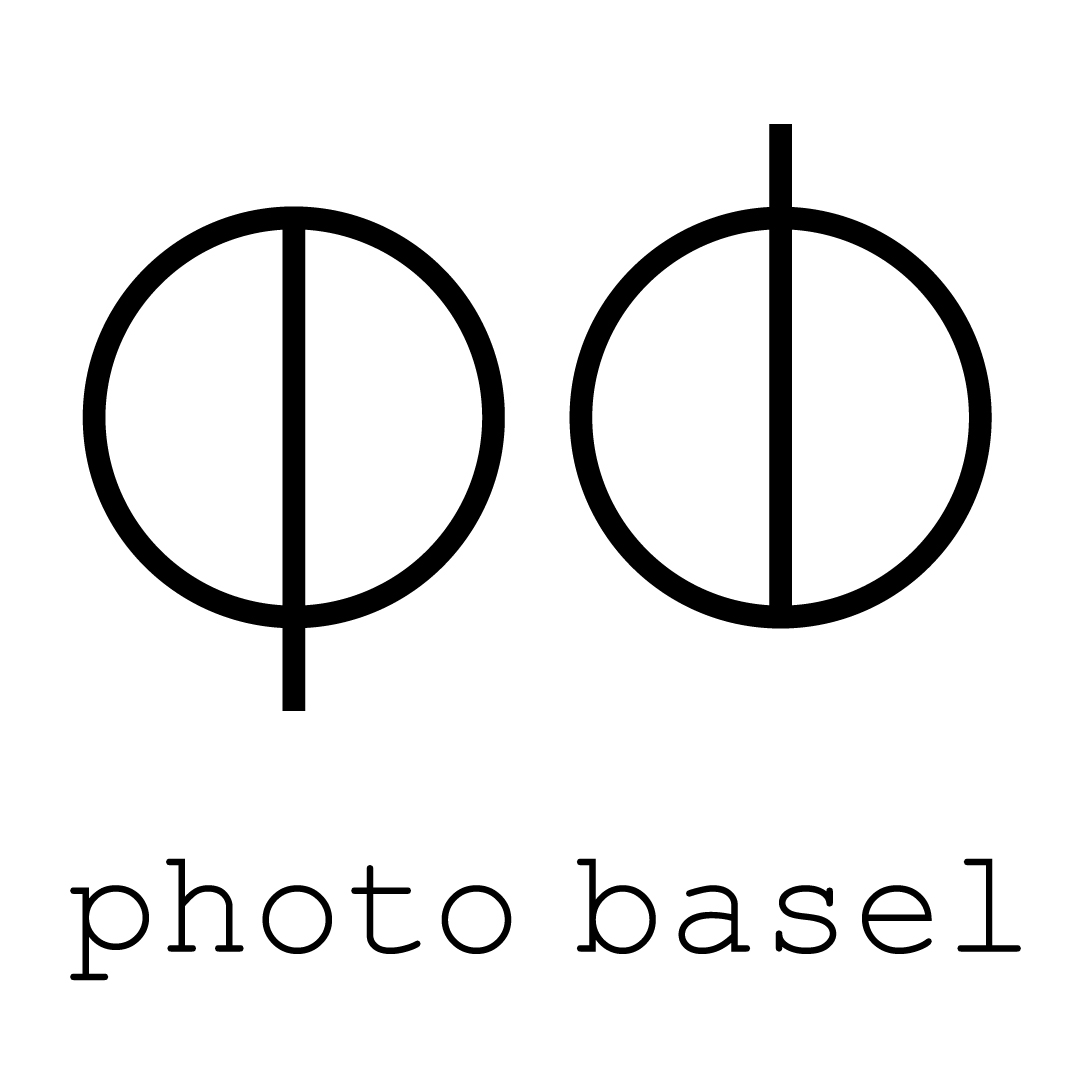
Ulrike Meyer Stump's research on Karl Blossfeldt's photographs' replication in teaching materials, pattern books and art books, and also in the pages of the illustrated press is now published. You will find more information on the monograph Karl Blossfeldt: Variations, published in German and English, on Lars Müller Publishers' website.
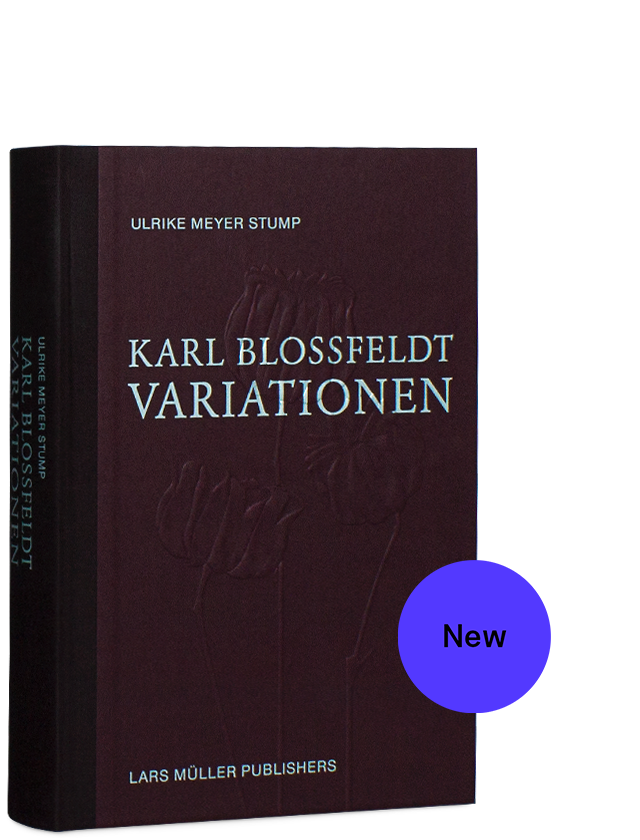
Deane Lawson is the 13th artist and yet the first photographer to receive the biennial accolade, which was established in 1996 to recognize significant achievement in contemporary art. Carrying a stipend of $100,000, the Prize is administered by the Solomon R. Guggenheim Foundation. Lawson’s work will be presented in a solo exhibition at New York's Solomon R. Guggenheim Museum in spring 2021. Please see here the official press release on Deane Lawson being awarded the 2020 Hugo Boss Prize.
Meanwhile, Kunsthalle Basel has held her first presentation in Switzerland and the largest institutional exhibition of her work to date.
In Vogue Italia's October issue, Nathalie Herschdorfer published the article Sono Donne Oggetto, where she reflects on the place given to the photographer Helmut Newton in photography. Here, you will find the original version in French.
L’histoire de la photographie a fait entrer Helmut Newton dans son panthéon alors même que la photographie de mode en tant que genre est longtemps restée reléguée à une sous-catégorie de la photographie commerciale. C’est grâce à son style qui introduit une nouvelle représentation de la féminité, que Newton obtient la reconnaissance. Les années 1970 vont représenter un tournant tremplin dans sa carrière. Alors que le mouvement féministe s’affirme à l’échelle internationale, les magazines de mode s’arrachent Newton. Ses mises en scène semblent en accord parfait avec le nouveau concept de féminité. En plaçant la sexualité des femmes au centre de ses images, il montre que celle-ci peut être un outil d’émancipation. Chez Newton, les femmes ont des désirs et l’affirment, leur attitude dominante et leurs poses provocantes manifestant à la fois sensualité et indépendance. C’est ainsi par des mises en scènes érotiques destinées à choquer les bourgeois-es qu’il obtient une reconnaissance comme artiste. Ses scénarios deviennent sa signature et lui permettent d’opérer un déplacement de ses photographies, qu’il tirait à une échelle monumentale, des pages de Vogue aux murs d’exposition.
A première vue, Newton semble avoir donné le pouvoir aux femmes dans ses récits photographiques. Il le revendiquait en tout cas haut et fort. Mais est-ce vraiment le cas ? Aujourd’hui il convient de se poser la question. Le renversement des rôles opéré dans ses scénarios - l’homme vu en tant qu’objet sexuel d’une femme surpuissante – révolutionne-t-il réellement le regard ? La photographie a pour tradition de célébrer les courbes du corps féminin et de le placer devant la caméra de sorte à exciter le regard des hommes. Newton fait-il autre chose ? Ses héroïnes annoncent certes une ère nouvelle pour les femmes. Les années 1970 inaugure une période où la frontière entre les deux sexes paraît s’estomper, du moins en apparence, et où les identités se métissent. On retrouve ainsi chez Newton des femmes habillés en homme. Mais qu’on ne se méprenne pas, l’image érotisée de la femme n’est ici en aucun cas remise en cause : suffit-il de changer de vêtements pour que la domination d’un genre sur l’autre change ? Rien n’est moins sûr dans le cas de Newton. Même si les hommes sont relégués à l’arrière-plan, leurs relations avec les femmes sont bien au cœur de son travail. Les interactions sont toujours sexuées, et si les jeux de rôle sont repensés, c’est par excès et non par souci d’égalité. Les femmes dépeintes par Newton sont le plus souvent déshabillées, permettant au regard de se focaliser sur les parties les plus sexuées de leur anatomie. Elles restent des objets sexuels offerts au regard du photographe, et par là même à celui du spectateur placé dans le rôle du voyeur. Il ne fait aucun doute que Newton a imaginé ses scénarios en pensant aux mouvements féministes de son époque mais ses images ne libèrent pas les femmes – qu’il choisit pour leur beauté physique – du regard masculin.
Aujourd’hui, il ne s’agit pas de dénoncer ou de disqualifier le travail de Newton, ni de le condamner moralement. Il nous faut porter un regard critique sur son oeuvre, et de prendre conscience que jusqu’à maintenant les grilles de lecture utilisées pour évaluer cette dernière ont été avant tout masculines. En 1979, Susan Sontag, sur un plateau de la télévision française, attaqua Newton en lui disant que son œuvre était misogyne. Un point de vue inaudible à l’époque ! Et pourtant, dans la photographie comme au cinéma, on sait que l’image nous apprend à nous identifier au regard masculin. Ce « male gaze », fruit d’un inconscient patriarcal, se délecte du physique des les femmes. L’objectification de leur corps est présente dans toute l’histoire de la photographie. Simone de Beauvoir disait qu’ « une femme qui n’a pas peur des hommes leur fait peur ». Newton pourrait bien avoir mis en place un instrument de contrôle puissant introduisant sur sa scène de théâtre des mannequins qui n’ont aucun mot à dire sur les scénarios qu’on leur fait jouer. Ses « femmes masculines » ne témoignent d’aucune déviance de genre et les hommes peuvent continuer à afficher leur virilité en toute tranquillité. Même en renversant les rôles, Newton ne conteste pas les rapports de pouvoir et de domination. Il y a peut-être même chez lui une certaine jouissance à faire jouer aux femmes des scènes sexuelles qu’elles n’ont pas écrites. C’est bien là le privilège de la masculinité que de pouvoir imaginer de tels récits. A la lumière des derniers développements du féminisme, il convient de s’interroger sur les jeux voyeuristes et les formes de domination imaginées par le pygmalion Newton qui reproduit des valeurs masculines au cœur des relations qu’il décrit. La femme reste enfermée dans un rôle unique, apparaissant toujours comme le même objet de désir immuable. Les récits de Newton sont faits par un homme et pour les hommes. Il n’y a en aucun cas déplacement du regard vers le féminin.
Ne censurons pas les photographies de Newton mais accompagnons les d’une réflexion nouvelle. Son œuvre, qui a été largement encensée par les critiques – qui étaient pour la plupart des hommes faut-il encore le préciser ? - a constitué une étape importante dans la représentation de l’émancipation féminine. Même si ses images ne nous parlent pas de sexualité féminine ni ne dénoncent la domination violente d’un sexe sur l’autre. Newton a été reconnu comme un grand artiste. Peut-être serait-il temps de se demander de manière générale qui sont ceux qui élisent les artistes au panthéon et selon quels critères ?
Texte commandé par Vogue Italia, publié en octobre 2020
On 4 December from 2 – 5.15 pm, Spectrum – Photography in Switzerland and ECAL/Ecole cantonale d'art de Lausanne are going to held What's Next 2021! on Zoom!
20 INSTITUTIONS (MUSEUMS, GALLERIES, ARCHIVES, PUBLISHERS, MEDIATION) AND INDIVIDUALS PRESENT THEIR MOST IMPORTANT EXHIBITION, BOOK, RESEARCH PROJECT IN PHOTOGRAPHY FOR THE UPCOMING YEAR 2021!
An event organised by Spectrum – Photography in Switzerland and ECAL/Ecole cantonale d’art de Lausanne. Free participation. Registration is required since a link as well as a code are necessary to enter the Zoom-Meeting. No simultaneous translation available, each institution/individual presents their project in English, French, German, or Italian.
You can join us by following this link: https://zoom.us/j/94826217989
An article written by Eileen Kinsella and published by Artnet News delves into the reasons why prices of contemporary German photographs taken of Andreas Gursky, for example, are decreasing.
Follow the link to read the full article: Eileen Kinsella, A Decade Ago, Supersize Images by German Photographers Were Selling for Millions. Now, Prices Have Cratered
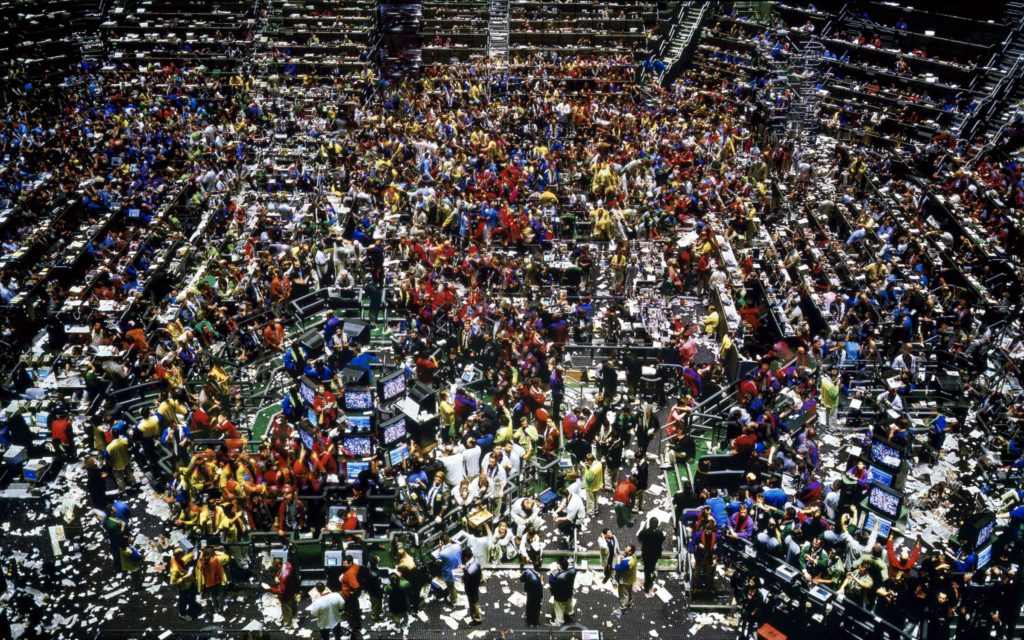
Andreas Gursky, Board of Trade II (1998). Courtesy of Tate Museums.
SPECTRUM – Photography in Switzerland and ECAL call for your best/most interesting/ most special project in 2021!
We invite all Spectrum-members, all photo institutions or organizations working with photography in Switzerland (museums, galleries, collections, archives, libraries, universities, etc.) as well all individual members of Spectrum (curators, critics, restorers, publisher etc.) to submit a unique, important, and exciting project that is on your programme for 2021. This can be an exhibition, archive project, publication, a research project, an event, an online presentation, or an educational project that addresses photography in some way.
SPECTRUM will select the 20 most interesting projects from the submissions. The selected projects will be presented personally by each institution, by each individual member on Friday, December 4, 2020, 1:30 to 6:30 pm at ECAL, Lausanne.
The presentations will include both image and text, and last each precisely 7 minutes each.
What’s Next 2021! is to strengthen the network in the Swiss photography field and aims to promote an active dialogue about the activities taking place here. The event is public and is directed at everyone interested in photography.
Submission deadline: October 30, 2020
A summary of the project must be submitted by October 30, 2020. Please submit a brief description along with an image, to give us an impression of the project. Online submissions only: title and description of the project, max. 150 words (Word document for further use), 1 image (jpg.) Please send your proposal to spectrum@photography-in-switzerland.ch.
We are looking forward to your projects!
Warm regards,
Urs Stahel
President, Spectrum – Photography in Switzerland
Instead of the Spectrum-Weekend, we are organizing a Spectrum-Lunch. On Friday, September 18 during lunchtime, Spectrum-Members will have the opportunity to talk to Philippe Bischof, Director of Pro Helvetia, and to Madeleine Schuppli, Head of the Visual Arts department, in a Zoom-Interview for two hours.
The structure and topics of this interview are still to be announced. Among other things, it will certainly be on the role of photography in Swiss culture and contemporary communication, on the roles of institutions and of lone fighters.
We kindly ask you to submit your questions to Philippe Bischof and Madeleine Schuppli. Five of them will be chosen and presented alongside questions of the Spectrum-Board. Please send your questions to spectrum@photography-in-switzerland.ch until August 28.
We live in strange times in many ways. Most of us have been blocked at home for the past five months. Travels were not possible anymore, most cultural events were cancelled or moved online and assignments disappeared into thin air. If you have experienced, thought or felt something at, with or because of work that you would like to share, feel free to do so. We post your opinions and experiences in your language on Spectrum’s website. You are welcome to submit your contributions until September 1st to spectrum@photography-in-switzerland.ch. Incoming contributions will be uploaded continuously.
Applications open: 25.5 – 10.7.2020
Kick-Off Day: 24.10.2020
Exhibition: 6.12.2020 – 17.1.2021
Professionally active photographers and artists are invited to apply for the Prix Photoforum. Projects in all formats linked to photography – installations, prints, videos, digital works, network and computer art – are welcome.
The competition enables selected photographers to present and discuss their work with professionals of the fields of art, photography, and publishing during the Kick-Off Day, and to present the project in a curated exhibition. One winner also receives a prize money of CHF 5,000.
The applications for the 2020 edition of the Prix Photoforum will be open from 25 May to 10 July 2020.
Please visit Prix Photoforum's website to find more information on the participation conditions, rules as well as the jury members.
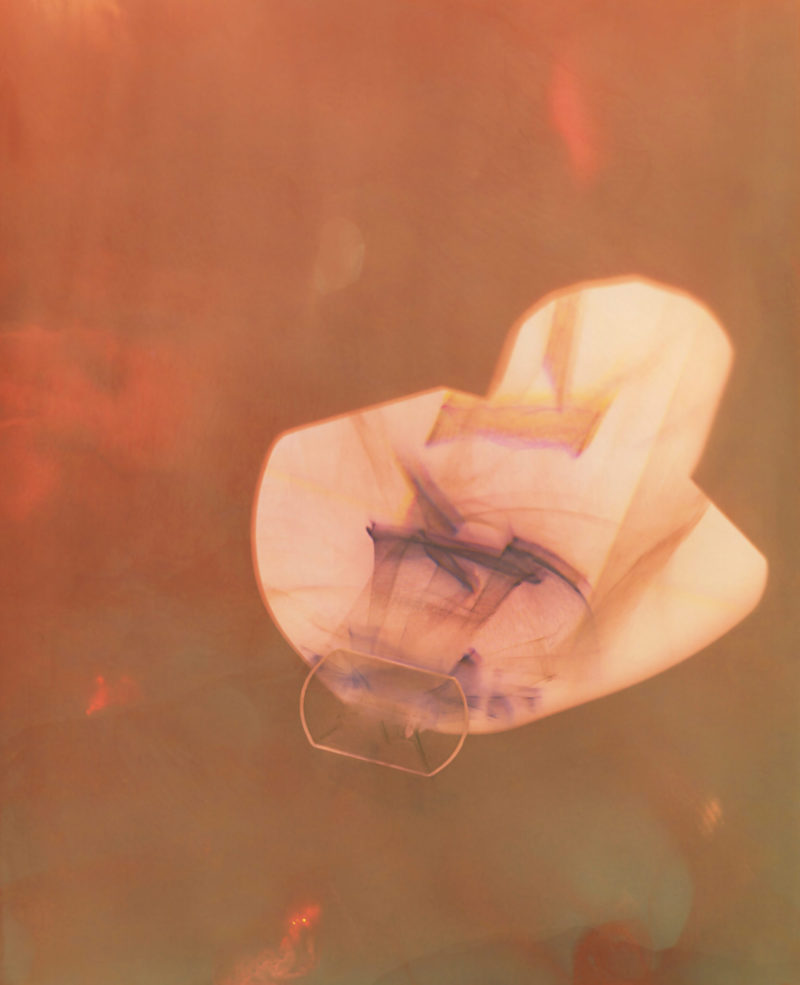
Laureate 2019: Christelle Boulé
The article May: Virtual Highlights presents a selection of virtual exhibitions. Via the image gallery attached you will find more information on the selected information. Also the following link leads to the full article.
The selection made by Hannah Abel-Hirsch and Marigold Warner for this article includes:
- Scotiabank CONTACT Photography Festival, Toronta, Canada
- The Ryerson Image Centre, Toronta, Canada
- If I were … Initiated by the Hauts-de-France Region, in collaboration with Les Rencontres d’Arles
- Lee Miller: A Life On The Frontline. Documentary avaialble through BBC iPlayer until the end of the month
- Kolga Tbilisi Photo 2020. The virtual festival will be going live at 4pm (BST) on 07 May
- Virtual Assembly. Online book fair
1000 Words is an online contemporary photography magazine that commissions and publishes exhibition, photo book reviews, essays and interviews in response to the present visual culture. Founded by Tim Clark in 2008 and released quarterly, 1000 Words is commited to explore the possibilities for the medium, simultaniously stimulating debate around modes of practice, discourses and theory internationally.
In the coming weeks, 1000 Words will feature statements by curators about curating. Curator Conversations #3 is with Danaé Panchaud, Director / Curator of the Photoforum Pasquart in Biel. The following link leads to the full article.
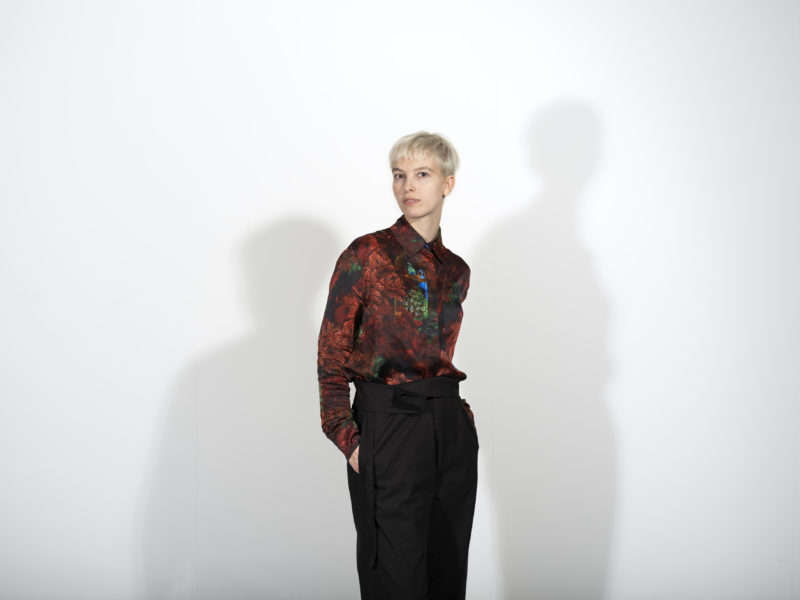
Danaé Panchaud. © Olga Cafiero
The featured 173 galleries as well as publishers of Paris Photo New York are now online available! You will the online catalogue here.
1000 Words is an online contemporary photography magazine that commissions and publishes exhibition, photo book reviews, essays and interviews in response to the present visual culture. Founded by Tim Clark in 2008 and released quarterly, 1000 Words is commited to explore the possibilities for the medium, simultaniously stimulating debate around modes of practice, discourses and theory internationally.
In the coming weeks, 1000 Words will feature statements by curators about curating. An interview with Duncan Wooldridge opens the series. The following link leads to the full article.
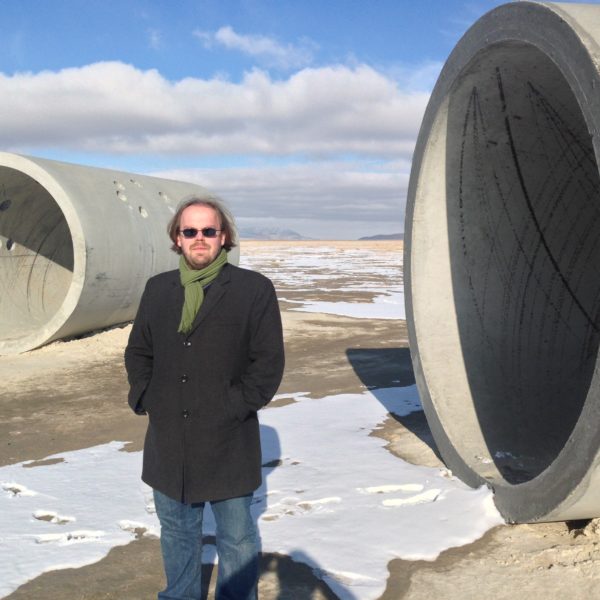
The Biennial of Contemporary Photography, which should have run until April 26, had to be closed shortly after its opening on February 28 due to the virus. However, the Biennial can still be viewed online! All the exhibition sites in Mannheim, Ludwigshafen and Heidelberg are now accessible in virtual tours. Most of the works by the 70 international photo artists are enlarged to full-screen, so that a good idea of the show can be gained.
Among the works are the "Icons" created by the Zurich artist duo Jojakim Cortis & Adrian Sonderegger. For this long-term project, they reconstruct iconic images in three-dimensional detail and photographically record them together with all the relics of the working process.
More information as well as instructions on how to visit the virtual tours are to be found the Biennale's website.
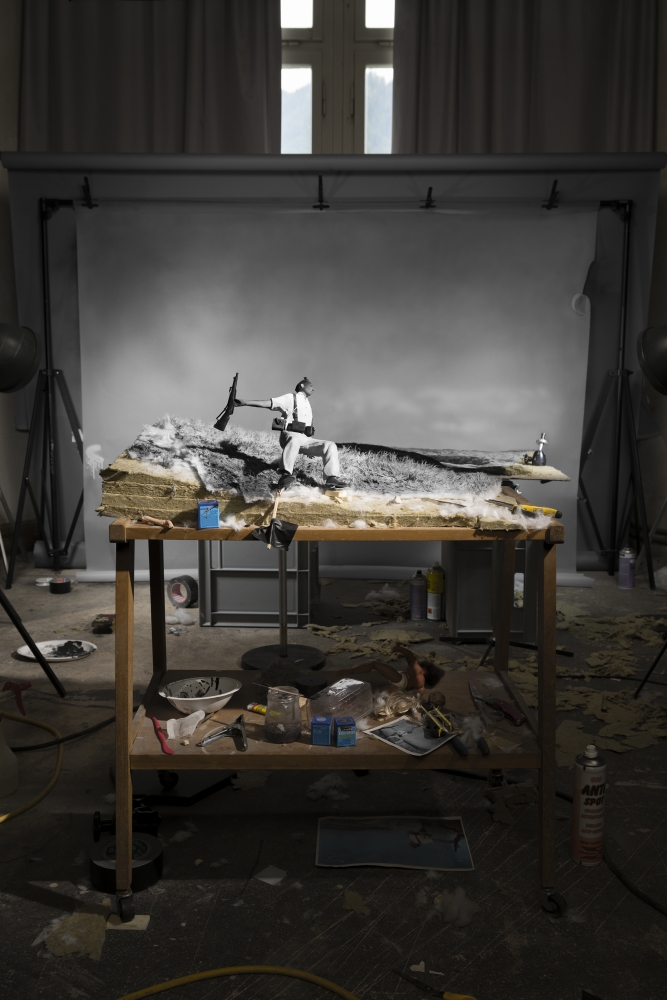
Jojakim Cortis & Adrian Sonderegger, Making of “Death of a Loyalist Militiaman“, Córdoba Front, Spain (by Robert Capa, 1936), 2016, aus der Serie Icons, 2012-heute / Courtesy Sammlung Freunde der Fotostiftung Schweiz, Winterthur.
The vfg Young Talent Award is an opportunity for showcasing your work in Switzerland and abroad. The call for entries for the 24th edition is open until 30 April 2020.
You will find more informaiton on vfg Young Talent Award on its website.
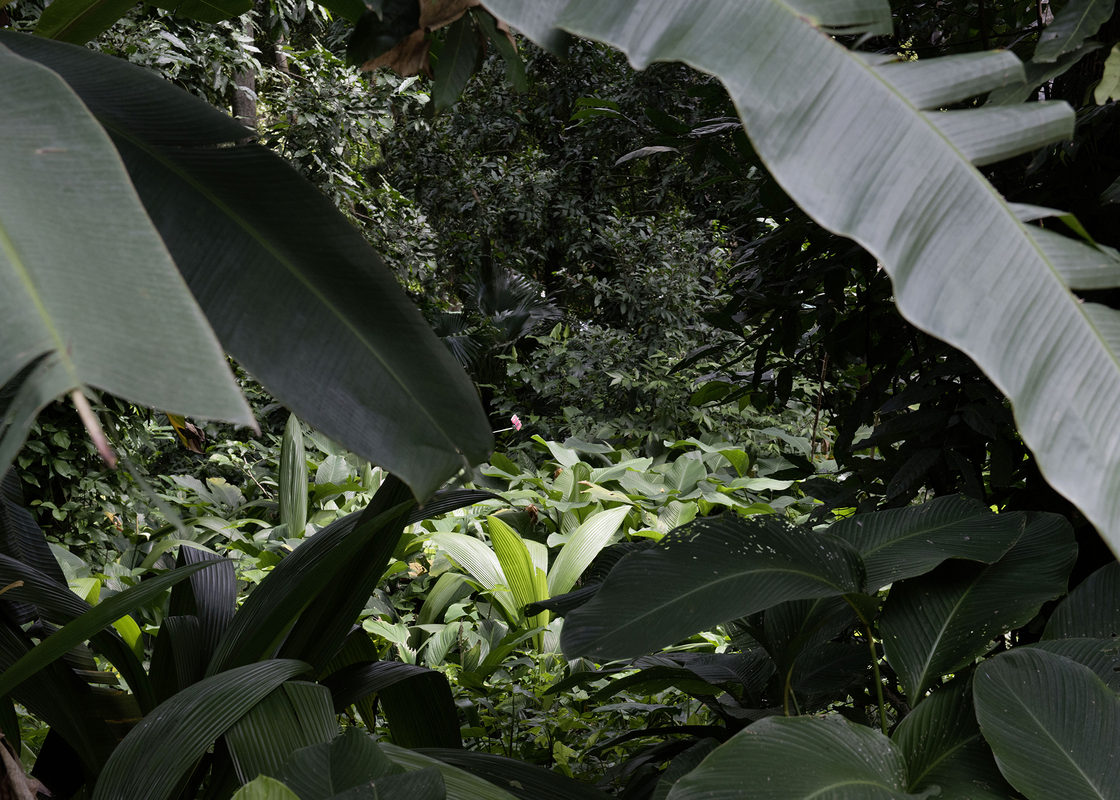
Winner of vfg Young Talent Award in 2016 © Arunà Canevascini
The measurements against the spread of COVID-19 have led to an intensive online presence as well as collaborations between several institutions, galleries, magazines, and artists. Various fairs and galleries are now virtually represented, as museums offer either insight into their currently closed exhibitions on social media or present and promote their already online accessible collections and platforms. Facebook, Instagram, Soundcloud and Youtube became their main sites to produce for and to distribute with, whilst Zoom turned out to be indispensable for online encounters. The following overview represents a selection of exhibitions as well as photo collections, blogs, collaborations and a call for contributions.
The gallery Bildhalle in Zürich leads via a 3D tour through the exhibition René Groebli. The Magic Eye and weekly introduces works of both, René Burri and Paul Cupido, which are selected by the René Burri Estate respectively by Cupido himself.
The retrospective René Burri. Explosions of Sight at the Musée de l’Elysée in Lausanne and its revelation of the photographer’s multiple creative activities is represented online as well. Interviews with Mélanie Bétrisey, Dino Simonett, Werner Jecker and Bruno Barbey to share memories on encounters with Burri as well as a video, are accessible next to other audio-visual online contents on former exhibitions at the museum.
Image and text content of Her Take. (Re) Thinking Masculinity, the present exhibition at Photoforum Pasquart in Biel, are to be found on the institution’s website compiled in a PDF. In addition, Her Take is reflected in the online exhibition space on Medium.
Fotomuseum Winterthur’s SITUATION #198: Visual Research on Networked Activism explores new forms of data circulation, which have both, changed the distribution of audio-visual content and have boosted new protest movements. For the analysis, SITUATION #198 focuses on three examples of control mechanisms found in state, corporations and machines. Marco De Mutiis, the digital curator at the Fotomuseum Winterthur, dedicates his blog Curating the Pandemic Image on contributions by curators regarding the virus. Hereby, he puts together a continuously growing collection of strategies that deal with exhibition under the COVID-19 situation.
More than 28,000 photographs from the holdings of the Fotostiftung Schweiz can be found on ETH Zürich e-Pics. Because of the extensive database, the online collection is suitable for research and for spending time with photographs. Moreover, chosen photographs are introduced on the institution’s blog to give an understanding of their authors as well as production contexts. Furthermore, the blog also includes a site with links to contact points and assistance for individuals in the cultural sector.
In order to support the debates on ways of curating and showing photography, YET magazine’s latest issue entitled Curating Photography, is accessible for free on the magazine’s website. Besides, artists who have already been part of YET were invited to donate one of their works. This collaboration aims to support the WHO COVID-19 Response Fund.
For Walkie Talkie, the Museum im Bellpark in Kriens asked artists to contribute home stories, photographs, soundtracks, video clips and visits into their ateliers to continue the debate on cultural issues on the museum’s website as well as on social media. These works are uploaded regularly.
Last but not least, the virus has led to a call for contributions for photographers. Photoagora.ch uploads photos of reports, staged scenes, snapshots and further genres to its online gallery Suspended Time on a daily basis.
All the best to everyone! Stay safe and healthy!
Recently published photo books are continuously presented under News. In the slideshow below you will find them with the relevant bibliographic information.
Photoagor.ch shares images taken by Photographers in Switzerland and that relate to the topic of COVID-19. Images of report, staged scenes, snapshots, and further more, as testimonies of the times we live in at the moment can be sent to webmaster@photoagora.ch. The images shall be submitted with a caption that might include information on copyright, date, place, as well as a possible descriptive sentence, and be in RGB jpeg of 1900 pixels on the longest side. The images will be published on "Suspended Time" daily.
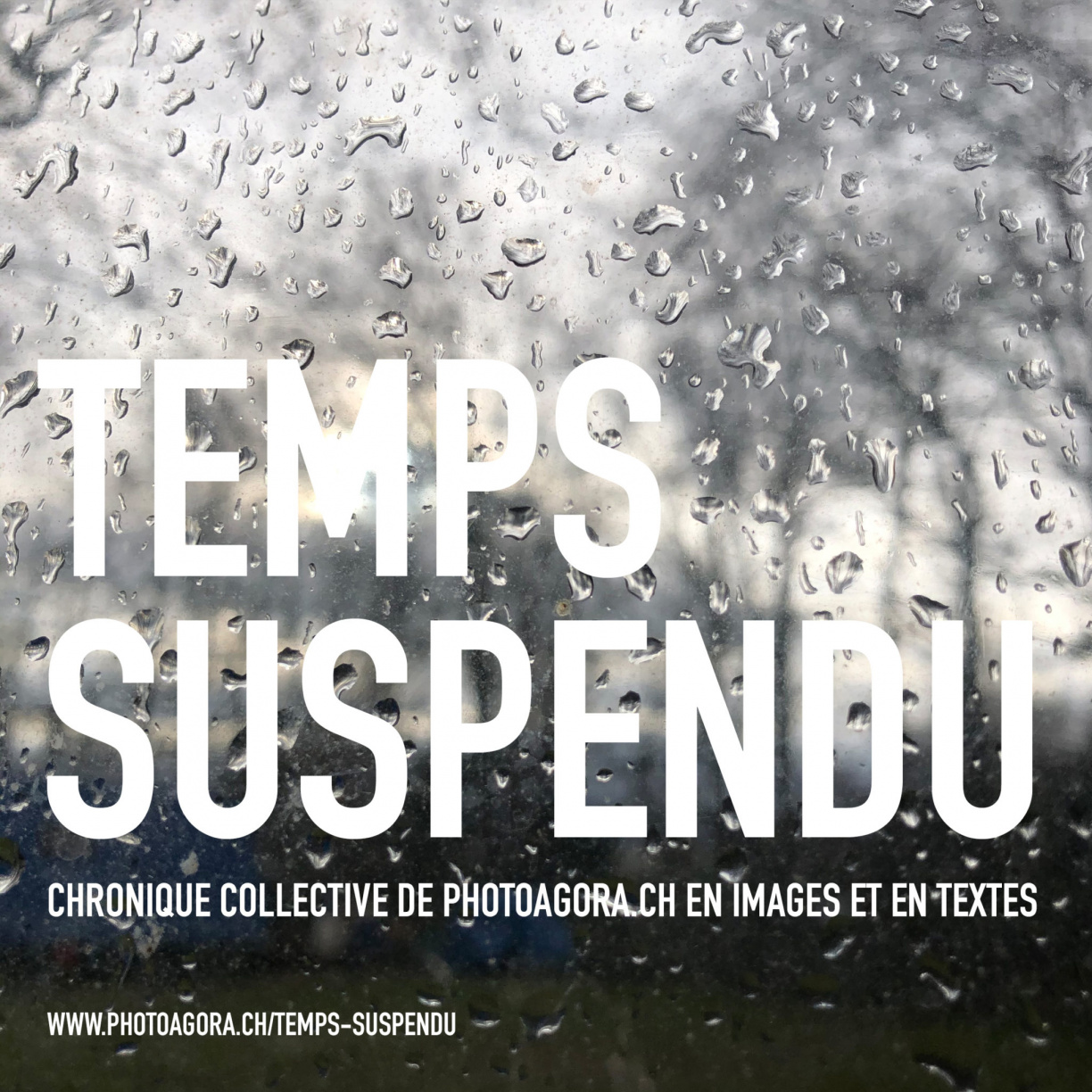
The digital issue of YET on "Curating Photography" is now accessible for free. You will find more information on the magazine YET here as well as the link to download "Curating Photography" here.
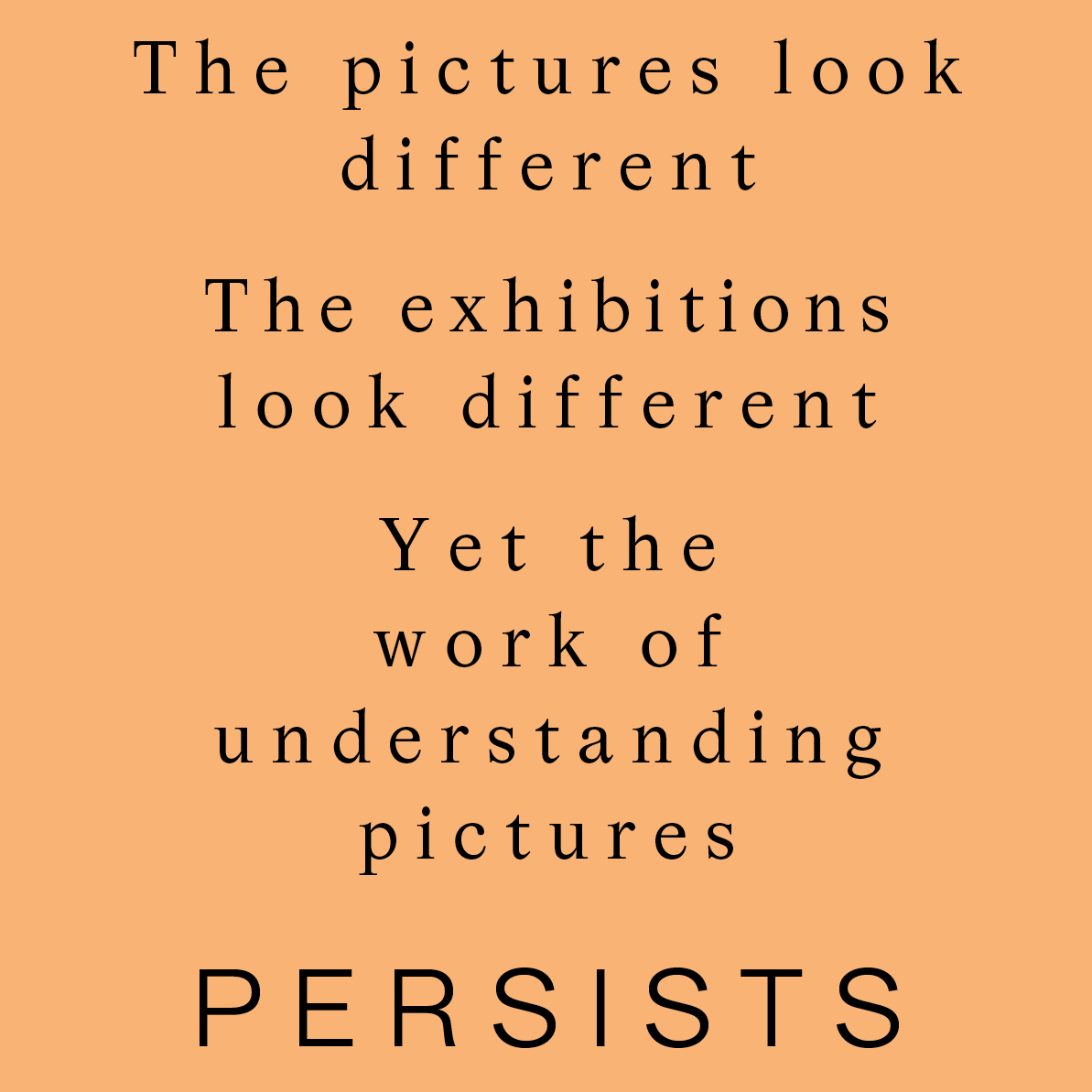
Recently published photo books are continuously presented under News. In the slideshow below you will find them with the relevant bibliographic information.
Il Consiglio federale ha designato Suisseculture Sociale come organo competente per l'aiuto d'emergenza per gli operatori culturali.
Suisseculture Sociale sta attualmente lavorando a pieno ritmo per fornire l'infrastruttura necessaria a far fronte alla prevista corsa delle richieste e informerà su www.suisseculturesociale.ch non appena sarà pronta a ricevere le richieste. Ciò si riferisce in particolare ai criteri da applicare e ai documenti da presentare.
Per informazioni generali sulle misure per attenuare l'impatto economico del Coronavirus nel settore della cultura, vedi il sito web.

The most beautiful Swiss books 2019 were chosen in the end of February! 362 publications were submitted whilst the jury awarded 19 books. In the picture gallery below you will find the awarded photo books and the corresponding details. More information on The Most Beautiful Swiss Books 2019 are on the Federal Office of Culture's website as well as the award's website. The corresponding catalogue to The Most Beautiful Swiss Books 2019 will be published in September 2020 (ISBN 978-3-909928-57-6).
As of today, the website of the Office of Culture of the State of Fribourg has a dedicated page on this subject, which is regularly updated.
In addition, there is going to be held a live Q&A organized by the Office of Culture of Canton of Fribourg during the week from 23 to 27 March on Facebook. You will find more information on its Facebook page.
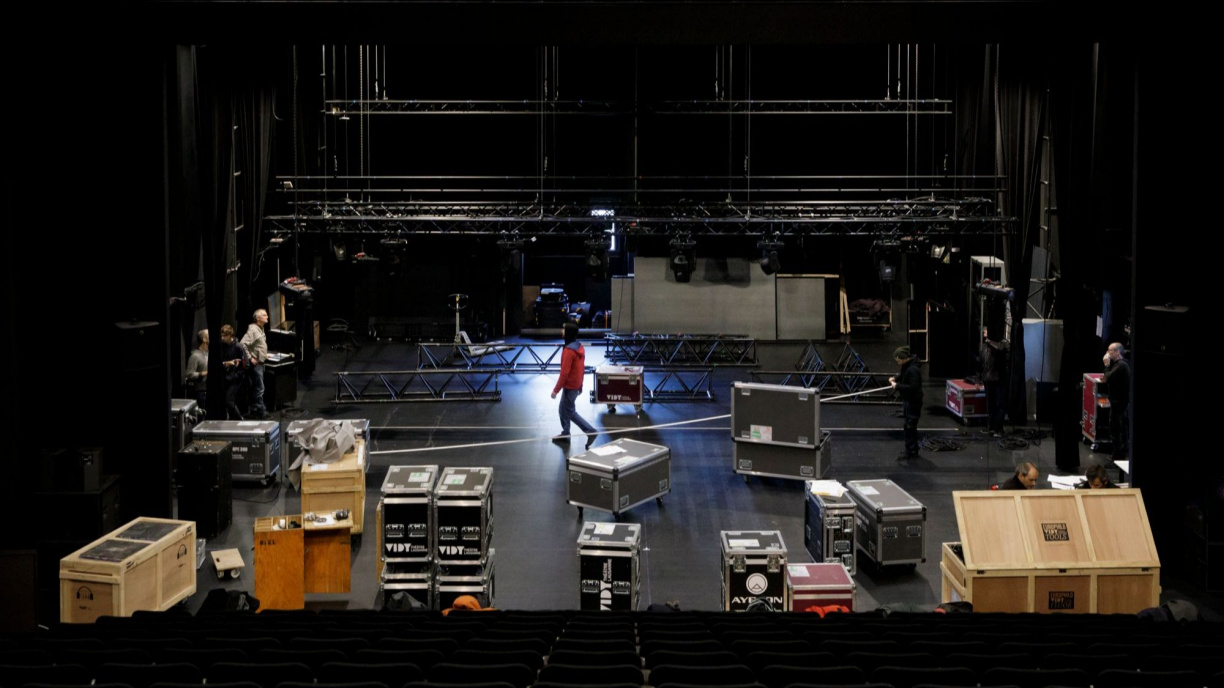
© Nicolas Brodard
Due to the latest federal measures against the coronavirus, museums and some galleries in Switzerland will remain closed from 16 March to at least 19 April.
Institute of Art History
University of Zurich
This spring semester the public lecture series Geography of Photography is focusing on photography in Sweden. Swedish photography and photography-based art in relation to their national and international context will be introduced and investigated. The goal of this series is to identify historical guidelines and contemporary tendencies of the photographic culture and to present current research foci.
Swedish photographers and photography are rather ideal-typical topics for art and culture of the “periphery.” As research on multiple modernities shows, however, inspiration and new narratives came and still come from the periphery with complex connections to the so-called center. Since its beginnings, the new medium of photography was exceptionally popular in the Scandinavian cultural realm. Simultaneously and in contact with trends in Europe and the United States, various image traditions emerged, which, moving in fields of tension between utopia and reality, contributed greatly to the self-image of the country in the 19th and 20th century. After 1950, both “de Unga” (the youth) and the photographers Sune Jonsson and Christer Strömholm helped initiate a breakthrough for humanist photography. In the 1960s Lennart Nilssons photographs of fetuses became famous worldwide, an exceptional achievement in the field of scientific object photography, whereas the next generation critically documented the dark side of the welfare state and the role of women. Only since the 1990s Swedish photo-based art has received international recognition. With the postmodern and digital revolution, a growing number of artists have shifted the focus of their work to intermedial hybrids, thereby questioning requirements and constructions of the photographic image as well as gender stereotypes. This is carried to the limit in the contemporary works of Arvida Byström with her feminist online self-staging.
In the ongoing lecture series Geography of Photography, art historians, cultural historians, museum experts and artists talk about photographic culture and research in specific countries and regions in and outside of Europe. The objective of this series is to promote culture-comparative photographic research through a historical and theoretical perspective. National narratives are analyzed critically and through a historiographical perspective, whilst claims and legend formation of photography as a “global” medium are critically examined. On the whole, “classics” of the theory and history of the medium will be reevaluated in an international context, and photographic cultures beyond the canon will be explored.
More information on the programme Geography of Photography are here, on the website of the UZH-chair Geschichte der Bildenden Kunst.
And here are further information on the lecture series, dates, as well as venue: Geography of Photography: Sweden - Photography and Photographers.
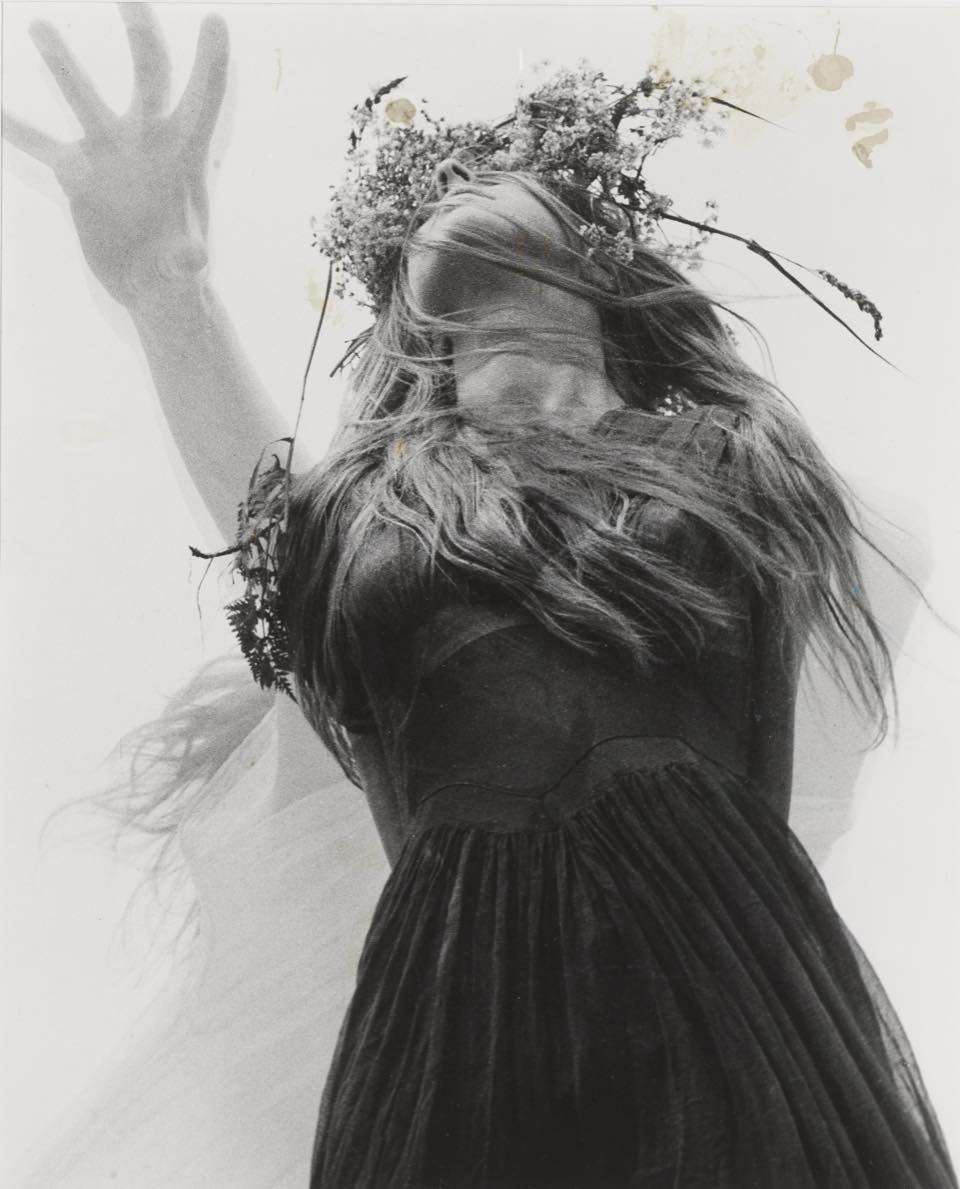
Agneta Ekman, No title. From the series Tall-Maja, 1967,
Gelatin silver print © Agneta Ekman.
Registrations extended until the 15th of March 2020
"Nera di Verzasca" Prize
Submission to the main annual contest of Verzasca Foto Festival is open.
Prizes
1st place
2’000 SWISS FRANCS
- solo exhibition at Verzasca Foto 2020
- projection of work at Verzasca Foto 2020
- board and lodging for 4 days (3-6 Sept) during the Festival
All finalists (2nd- 10th place)
Projection of your work at Verzasca Foto 2020
- board and lodging for 4 days during the Festival
Contest theme and submission conditions
The choice of the theme is free. Every participant can submit a personal photo story with minimum 3 and maximum 10 images.
The format of the images must be: JPEG, colour or monochrome. The dimension of the longer side must be 2000 pixel.
No limitation of when the photo has been taken.
Both analogical (scanned from negative or slide) and digital images are allowed. Participants must own the original files.
In order to confirm your registration, you must enter a title and a short description for the group of photos.
Eligibility
The contest is open to all people who have reached the age of 18 by the 22nd January 2020, regardless of nationality or residence. Excluded from the competition are the staffs of: Verzasca Foto Association, sponsors, jury members, and all family members related to every listed category.
Duration
Contests opens on 22nd January 2020 at midday (UTC). Deadline will be the 29th February 2020 at 23:59:59 (UTC). The deadline could be extended. The winners will be announced in Summer 2020.
For more information on the jury, the contest rules, submission, and last year's winner Ana Zibelnik please visit Verzasca Foto Festival's website.
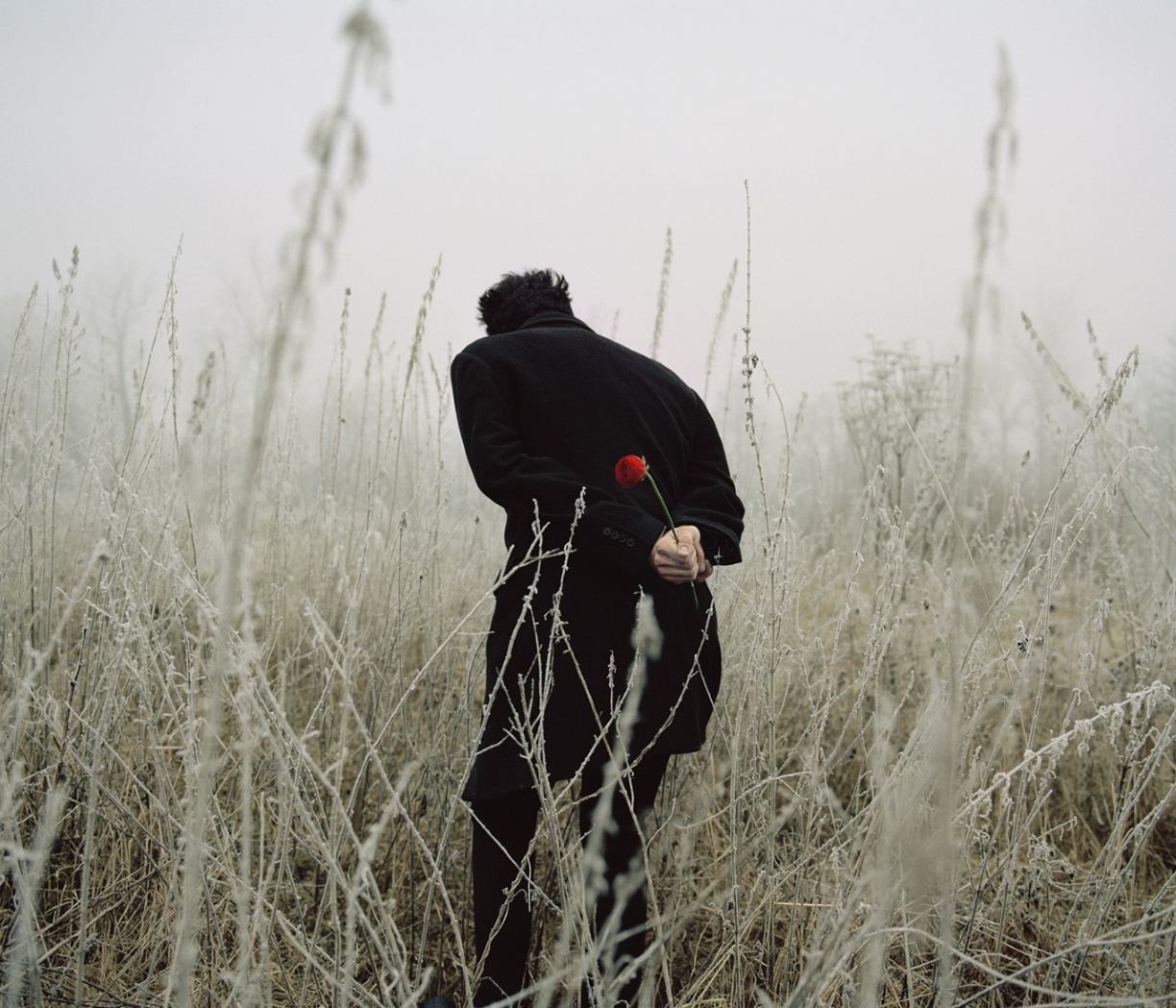
Ana Zibelnik, We are the ones turning, Winner 2019 © Ana Zibelnik
The Prix Elysée is open to promising photographers or artists using photography, regardless of nationality, who have already enjoyed their first exhibitions and publications. Photographers must be recommended by a reputed professional in the fields of photography, contemporary art, cinema, fashion, journalism or publishing. There is no imposed theme or preference for any particular photographic genre or technique.
The Musée de l’Elysée will select eight nominees upon their entry portfolios. Each will receive a contribution of CHF5’000 towards the initial presentation of an original and new project in the nominees’ book, published for the occasion. This book will accompany the nominees’ complete portfolios in the final consideration before the jury of experts. The winner will receive CHF80’000 to be divided between the completion of the proposed project and the publication of the accompanying book within one year. A curator from the Musée de l’Elysée will advise the winner throughout this process. Both the project and book will be presented at one of the Museum’s most important events. The nominees’ and the winner’s books will be printed by one of the Sandoz Family Foundation printing companies.
The eight nominees and the winner of the Prix Elysée will all benefit from important exposure and the Museum’s expert guidance. The next call for applications will take place from January 1, 2020 until March 9, 2020. The fourth edition of the Prix Elysée concludes in June 2022.
For more information please visit Prix Elysée's website.
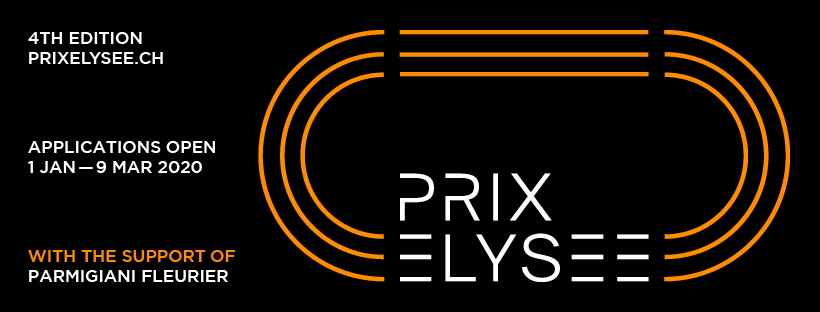
Contemporary Algeria
5 July 2020 – 6 September 2020
This exhibition aims to present contemporary Algerian photography in its plurality. This project stems from the realisation that the Algerian photography scene is rich and diversified, but still little known outside its borders, apart from images linked to major political events and disseminated mainly by the press. It also takes as its starting point the observation that the most widely disseminated and best-known images of Algeria in the history of photography have been produced by Western photographers, and that many of these images are linked to colonisation.
While some of the photographers in the exhibition are already known, the Photoforum Pasquart would like to discover other photographers and their work. For this reason, in the context of this exhibition, the Photoforum Pasquart is launching a call for photography projects for Algerian and/or Algerian-based photographers, with no imposed theme. It is organised in collaboration with photographer Abdo Shanan, member of collective 2020.
Deadline: 15 March 2020
Download the call for projects in English or in French.
Contact: Danaé Panchaud, director and curator: algerie@photoforumpasquart.ch.
For more information on Photoforum Pasquart and this call for projects please visit it's website.

© Abdo Shanan
8th edition
11–27 October
LuganoPhotoDays was born in early 2012 from an idea of Marco Cortesi.
After visiting several European festivals, and having established a network of contacts in the world of photography – as a photographer but mostly as a passionate –, Marco Cortesi felt the need to created a venue in his hometown to further spread this mean of communication and expression.
The festival materializes in just a few months also thanks to the support of Fabrizio Biaggi.
LuganoPhotoDays’ objective is to organize a yearly international photography festival in Lugano that will insert itself among the ones that already exist in other European cities.
LuganoPhotoDays is a 360 degrees festival, which offers exhibitions, conferences, workshopsand everything that is available in large festivals.
In order to position LuganoPhotoDays at the highest level since its first edition, it has been decided to invite worldwide famous photographers such as Alex Majoli (photographer and president for Magnum Photos) and Nikos Economopoulos (Magnum Photos).
As of its second edition already the festival has shown that the event is growing exponentially offering a larger program and expanding its team.
LuganoPhotoDays is organized by the non-profit association of the same name based in Lugano (Switzerland).
For further information please visit LuganoPhotoDays's website.
CRASH – a clash, an accident, a fall, a collision, a permanent fracture. CRASH is a thrill, an emotion, fear, pain, death and panic. Having to start over from square one. CRASH is rebirth, hope, liberation, revolution, desire and the stimulus to continue to grow. CRASH is trauma, depression, defeat, a black hole, slipping downwards, into the darkness. CRASH is destruction and construction, stasis and dynamicity, contrast, friction, between past and present, between concreteness and abstraction, spirit and matter. CRASH is made up of bodies, planets, towns, firms, vehicles, cultures, religions, ideas and images. CRASH razes everything to the ground, but then from that blackish, calcified surface, a timid, innocent blade of grass pokes through. A symbol of the desperate need for undying life. And the new fields, bushes and then forest that grow there will wipe out the memory of what was there before in the blink of an eye.
For us, CRASH is an obstacle course, a scenario in constant evolution, one in which with every gaze we may pickout something new while something else disappears. It’s a metamorphic and metaphoric landscape, an unforeseeable sequence of thunder rolls and lightning bolts, a pyrotechnical game spinning out of control. CRASH is a bad dream that turns into reality but then evaporates in a crimson cloud with the onset of dusk.
CRASH is a gust of wind on your face, one which suddenly turns into a raging storm, halting you in your tracks, making you march on the spot. It forces you to reflect, and at times, that might not be a bad thing. CRASH shows you places where you never thought to look; it makes you turn your head and forces you to step back and take in the view of the whole, beckoning you closer to grasp the tiniest of details. It lifts you up above the clouds only to then plunge you down into the deep icy waters of the unconscious mind.
CRASH is Arnold Odermatt in his flawless police uniform. CRASH is Boris Mikhailov climbing over the gates of the great abandoned crematory in Kiev. CRASH is the young utopians of the ECAL who discover the truth about utopia on Monte Verità. CRASH is all the others, along with their images, be they still or moving, single or multiple, in black and white or in colour. With their spot-on projects, their reasoning perhaps still a little confused yet which will soon become clear.
CRASH is a flow of ideas that runs no risk of drying up, one that skids, brakes but then sets off again even faster than before. It’s a fragile yet flexible construction, within which everyone may find their own place and their own point of view. CRASH is photographs, films, words, Polaroids and photographic novels. Time, places, appointments, times and programmes. Two years squeezed into two months. Most of all, CRASH is people who want to express themselves, communicate, speak out, shout out and freak out. Because with CRASH anything can happen, although everyone keeps wondering what kind of world it would be without CRASH.
Antonio Mariotti
Comitato
ABi – Associazione Biennale dell’immagine
Please visit Bi11 Biennale dell'immagine – Crash's website for more information. Here you will find the full programme.
On 1 November from 7 p.m. the fotonacht in Bern invites you into the world of photography! Interested visitors can have their pictures taken on the moon, watch how an exhibition is created and view various projects. The event offers many more opportunities to get involved with photography. In addition, works by Roshan Adhihetty, Akosua Viktoria Adu-Sanyah, Werner Bischof, Corinne Futterlieb, Brigitte Gaggl, Tobias Gambaro, Andreas Greber, Denise Haschke, Julia Hintermüller, Olivier Jeannin, Hennric Jokeit, Tom Kummer, Brigitte Lustenberger, Ursula Müller, Elisa Murcia Artengo, Severin Nowacki, Florian Spring, Remo & Lisa Ubezio, Simon von Gunten will be presented.
Translated with www.DeepL.com/Translator
Das Amt für Kultur schreibt einen Aufenthalt vom 1. September 2020 bis zum 31. August 2021 im Pariser Künstleratelier «Jean Tinguely» aus. Dieser Aufenthalt ermöglicht es einer professionellen Künstlerin oder einem professionellen Künstler, ein künstlerisches Schaffensprojekt, das einen Aufenthalt in Paris rechtfertigt, insbesondere in den Sparten bildende Kunst (einschliesslich Fotografie, Video oder Film), Musik oder Literatur zu realisieren.
Informieren Sie sich hier über die Voraussetzungen für eine Bewerbung.
Die Dossiers müssen online über das Webportal myfribourg-culture eingegeben werden.
Bewerbungsfrist: 31. Dezember 2019.
Mit Nanni Baltzer, die am 21. September viel zu früh verstorben ist, haben wir eine unserer begabtesten Stimmen in Forschung und Lehre verloren. Die junge Zürcher Kunsthistorikerin, von Beginn an Mitglied bei Spectrum, war nicht nur eine bedeutende und umsichtige wie international vernetzte Vertreterin der Schweizer Kultur- und Fotoszene: zuallererst war Nanni Baltzer eine äusserst liebenswürdige Kollegin, die stets um einen fairen und freundschaftlich sachlichen Austausch bemüht und mit ihrer begeisternden Entdeckerfreude und unprätentiösen Herzlichkeit höchst motivierend war. Auch ihren Studierenden an der Universität Zürich (UZH) bot sie sich als initiierende Begleiterin und Unterstützerin auf dem beruflichen Weg.
Nanni Baltzer hatte ganz entscheidenden Anteil an der Etablierung der akademischen Fotoforschung in Zürich. Ja sie war mit ihrer fachlichen Kompetenz und Leidenschaft seit 2007 ohne Zweifel das Herz und die Seele der neuen Lehr- und Forschungsstelle Theorie und Geschichte der Fotografie an der UZH; hier und in Berlin hatte sie selbst Kunst- und Filmwissenschaft studiert. Baltzer koordinierte das noch bis in diesem Jahr beim Kunsthistorischen Institut (Lehrstuhl Prof. Dr. Bettina Gockel) als eigenständiges Ausbildungsangebot geführte Studienprogramm wie auch das Doktoratsprogramm Mediengeschichte der Künste, sie (co-)konzipierte und organisierte schon zu Beginn das internationale Symposium "Weltenbilder. Fotografie und Raum" (2007; mit Prof. Dr. Wolfgang Kersten)[1], weiter Workshops, Sommerschulen, Exkursionen, Gastdozenturen, Visiting Artists und die Vortragsreihe "Geography of Photography". All dies wurde durch die Dr. Carlo Fleischmann-Stiftung ermöglicht, deren Stiftungsrat Nanni Baltzer ebenfalls gemanagt hat. Wenn sie bei der Kulturförderungskommission des Kantons Zürich, der sie seit 2011 angehörte, ganz selbstverständlich "Öisi Nanni" genannt wurde, zeigt das nur, wie willkommen ihr Urteil auch dort war.
Zur Fotografie war Nanni Baltzer schon früh gekommen. Sie hatte noch vor dem Studium 1990–91 Fotokurse bei der gaf (Gruppe autonomer FotografInnen) in Zürich besucht und erste eigene Reportageversuche unternommen. So portraitierte sie zum Beispiel Elias Canetti, François Bondy, Marcel Marceau, Merce Cunningham oder John Cage, als er 1991 zu den Junifestwochen in Zürich war; sie sprach Cage einfach an einer Tramhaltestelle an, woraufhin sie einen Tag lang mit ihm durch die Stadt ziehen durfte. Gemeinsam mit Thomas Gasser, ihrem späteren Ehemann, versuchte sie sich damals sogar an einer erfundenen Bild-/Textrecherche über das polnische Stahlwerk Nowa Huta.
Und die Fotografie war keineswegs alles für Nanni Baltzer. Auf kaum einer Reise liess sie sich die Gelegenheit entgehen, Schlüsselwerke oder entlegene Bauten von Le Corbusier aufzusuchen. Zu ihren Interessengebieten gehörten auch Architekturgeschichte und -theorie (wie naturgemäss Architekturfotografie), sie hatte Assistenzen am Institut für Geschichte und Theorie der Architektur, gta/ETH (1996–99), am Canadian Center for Architecturein Montreal (Kanada) (2000–01) und an der Accademia di Architettura, Università della Svizzera Italiana, Mendrisio (2001-02; alle bei Prof. Dr. Kurt W. Forster).[2] 2003–04 kuratierte Nanni Baltzer die Foto-Sektion "Morphing Lights, Floating Shadows" für die IX Mostra Internazionale di Architettura in Venedig.[3] Sie arbeitete an Ausstellungen über Andrea Palladio und Carlo Scarpa mit und war 2006 Co-Kuratorin von "Hans Finsler und die Schweizer Fotokultur" am Museum für Gestaltung Zürich.
Ihre tiefste Passion aber galt Italien. Immer wieder hat sie das Land bereist, konsequent mit der Bahn und dem ÖV, und man konnte Nanni kaum eine grössere Freude machen, als sie vor Ort zu bewirten oder ihr sizilianische Fichi d'India, apulische Taralli und Babà aus Neapel mitzubringen; natürlich kochte sie selbst auch fein italienisch! In Venedig und Rom (2002/03) verbrachte sie Studienaufenthalte am Istituto Svizzero; 2003–05 konnte Nanni Baltzer dann für ihre Dissertation über die Fotomontage im Kontext faschistischer Propaganda[4] weiter in Rom forschen, wohin sie jedes Jahr liebend gern zurückkehrte. Schon zuvor hatte sie bei Prof. Dr. Stanislaus von Moos ihre Lizentiatsarbeit über ein Thema zu Italien geschrieben. Italienische Fotografie, Fotomontage und -grafik[5] sowie die Kunstgeschichte der frühen Moderne waren Schwerpunktthemen ihrer Lehre und der vielen Publikationen, sie schrieb aber auch unter anderem über Kurt Blum, Gotthard Schuh, Paul Senn oder den Kunsthistoriker Heinrich Wölfflin.
Die Lebendigkeit von 'öisere Nanni' fehlt uns schon heute schmerzlich!
Thilo Koenig
mit Nadine Jirka, Stella Jungmann und Patrizia Munforte
- Nanni Baltzer/Wolfgang Kersten (Hg.), Weltenbilder, Berlin, Akademie Verlag 2011 (Studies in Theory and History of Photography, Vol. 1).
- Nanni Baltzer/Jacqueline Burckhard/Marie Theres Stauffer/Philip Ursprung (Hg.), Art History on the Move. Hommage an Kurt W. Forster, Zürich, Diaphanes 2010.
- Nanni Baltzer/Kurt W. Forster (Hg.), Metamorph. 9th International Architecture Exhibition, Ausst.-Kat. Venedig, La Biennale di Venezia, New York, Rizzoli 2004.
- Nanni Baltzer, Die Fotomontage im faschistischen Italien. Aspekte der Propaganda unter Mussolini, Berlin/Boston, De Gruyter 2015 (Studies in Theory and History of Photography, Vol. 3).
- Nanni Baltzer/Martino Stierli (Hg.), Before Publication. Montage in Art, Architecture and Book Design, Zürich, Park Books 2016.
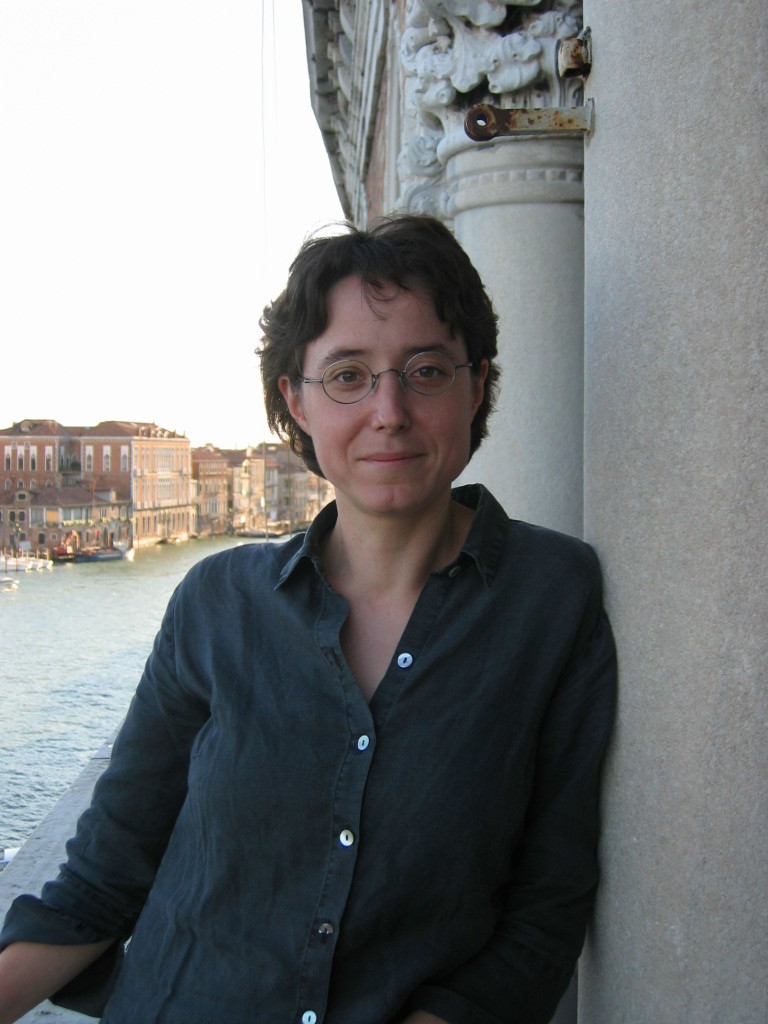
Nanni Baltzer (1971 – 2019), Venedig 2003 [Fotograf unbekannt]
Sehr geehrter Herr Bundesrat Berset
Sehr geehrte Frau Direktorin Chassot
Sehr geehrter Herr Zimmermann
Sehr geehrte Damen und Herren
Der Verein Spectrum – Photography in Switzerland (photography-in-switzerland.ch) ist eine nationale Organisation, in der sich die wichtigsten Institutionen und Vermittler von Fotografie in der Schweiz zusammengeschlossen haben. Er vereinigt mehr als 50 Fotomuseen, Archive, Sammlungen, Bildungsinstitutionen, Bibliotheken, Galerien und zahlreiche individuelle VermittlerInnen – KuratorInnen, ForscherInnen, RestauratorInnen und Medienschaffende –, die sich professionell mit der Vermittlung des Mediums Fotografie in der Schweiz befassen.
Spectrum – Photography in Switzerland ist die Nachfolgeorganisation von ASIP (Association Suisse des Institutions pour la Photographie). Wir bedauern, dass der Verein Spectrum – Photography in Switzerland im Gegensatz zur ASIP nicht offiziell zu einer Stellungnahme aufgefordert worden ist. Der Vorstand von Spectrum – Photography in Switzerland hat sich dennoch mit der Kulturbotschaft zur Förderung der Kultur in den Jahren 2021-2024 befasst und gibt zu folgenden fünf Punkten eine Stellungnahme / einen Kommentar ab:
1.4.2 Botschaftsentwurf: Kulturpolitik des Bundes
Der Verein Spectrum – Photography in Switzerland begrüsst die Betonung der Digitalisierung in der Kulturbotschaft. Sie hat sich im vergangenen Jahrzehnt bereits als sehr wirkmächtig erwiesen und wird das in Zukunft noch weit mehr tun. Es scheint uns hingegen wichtig zu betonen, dass die Bedeutung der Digitalisierung nicht nur in den Bereichen Film, Musik und interaktive Medien zugenommen hat, sondern auch und besonders im Bereich Bild und Fotografie, im Bereich des elektronisch erstellten und elektronisch verbreiteten Bildes. Das gilt es jetzt zu erkennen und die Auseinandersetzung damit zu fördern (siehe auch den Punkt zur «Bildkompetenz»).
Wir bedauern, dass in der Botschaft die Memopolitik in Bezug auf das audiovisuelle Kulturerbe und insbesondere in Bezug auf die Fotografie keine Erwähnung findet. Neben der Kulturförderung sollte die Erhaltung der Fotografie mittels einer austarierten Memopolitik aus der Sicht von Spectrum ein wichtiger Bestandteil der Kulturpolitik des Bundes sein.
2.3.1./2.1.1. Fotografie in ihrer gesamten Breite fördern
Wir unterstützen das neue Bestreben, «Fotografie in ihrer gesamten Breite zu fördern … so dass verstärkt auch Projekte aus dem Bereich der Dokumentar- und Angewandten Fotografie gefördert werden können.» Fotografie ist ein schwach kodiertes Bildsystem. Es ist nie eindeutig lesbar, ist ambivalent, deshalb kann es heute in allen Bereichen, in den sozialen Medien in fast beliebig jeden neuen Kontext verschoben werden und da immer wieder von neuem wahrhaftig, glaubwürdig – wie «mit den eigenen Augen gesehen» – auftreten. Die Fotografie gleitet wie ein Chamäleon durch die verschiedensten Medienkontexte und passt sich an, spiegelt gleichsam den je neuen Kontext. Und das mit eindrücklicher visueller Kraft. Dieser Kraft kann man – inhaltlich und förderungstechnisch – nur gerecht werden, wenn man sie in ihrer gesamten Bandbreite betrachtet, fördert und als zentrales Erinnerungs-, Kultur- und Kommunikationsinstrument versteht.
2.4. Erhaltung, Erforschung und Vermittlung des kulturellen Erbes & 2.1.3. Kunstvermittlung
Wir unterstützen stark den Entscheid, die Kunstvermittlung zu fördern. Wir erkennen aber zwischen der Absicht, die Kunstvermittlung als kritische Reflexion des zeitgenössischen Kunstschaffens zu erkennen und zu fördern, und dem eher traditionellen Verständnis der Kunst- und Kulturorte, vor allem der Museen, und hier auch der auf Fotografie basierten Museen, eine Diskrepanz. Das zeitgenössische Museum ist zu einem Denkort, Debattierort, Spekulationsort und Entwurfsort geworden, an dem Kultur und Gesellschaft im weiteren Sinne verhandelt, begutachtet und diskutiert werden. Es ist von unserer Seite her deutlich zu machen, dass die Museen (besonders auch fotografische, mediale Museen), Kunsthallen, Off Spaces, Kulturorte auch zu «Denkanstalten» geworden sind: für die Verbindung von Vergangenheit, Gegenwart und Zukunft ganz allgemein, vor allem aber als Schnittstellen von Kunst, Technolo-gie und Wissenschaft und ebenso von Technologien und ihren politischen Herausforderungen für unsere Demokratie gerade in heutiger Zeit. Das gilt es aus unserer Sicht schnell zu erkennen und zu fördern.
2.4.2.3 Betriebsbeiträge an Netzwerke Dritter
Der Verein Spectrum – Photography in Switzerland unterstützt alle in der Kulturbotschaft enthaltenen Punkte zur Stärkung der Fotostiftung Schweiz (Schweizerische Stiftung für die Photographie). Auch wenn die Sammlungs- und Archivlandschaft der Fotografie in der Schweiz stark über ein Netzwerk vieler verschiedener Institutionen abgedeckt ist, kommt der Fotostiftung Schweiz seit ihrer Gründung Anfang der 1970er Jahre eine besondere Rolle bezüglich der Bewahrung und Aufarbeitung der Fotografie in der Schweiz zu. Die anstehenden Aufgaben – neue Nachlässe, Erweiterung der Räumlichkeiten – erfordern eindeutig eine zusätzliche Unterstützung der Fotostiftung Schweiz.
Wir betonen aber gleichzeitig, dass in der Schweizer Kulturlandschaft grundsätzlich zu wenig Finanzmittel zur Verfügung stehen, um die Aufbewahrung, Aufarbeitung und Auseinander-setzung mit der Fotografie genügend breit und genügend tief zu gewährleisten. So werden in den Kapiteln 2.4.2.3 und 4.1.2. etwa neue Aufgaben und Herausforderungen für die Erhaltung des audiovisuellen Kulturguts formuliert, worunter auch die Fotografie fällt, gleichzeitig wird aber unter dem Begriff der «Budgeneutralität» die Plafonierung der Mittel gefordert, die dafür bereitgestellt werden («Betriebsbeiträge an die Netzwerke Dritter»). Die zusätzlichen Aufgaben der Netzwerke Dritter – wozu auch eine so wichtige Organisation wie Memoriav gehört – können unseres Erachtens nur durch eine Aufstockung des Budgets in diesem Bereich bewältigt werden. Es ist daran zu erinnern, dass die von Memoriav verwalteten Gelder für zahlreiche Gedächtnisinstitutionen (Bibliotheken, Archive, Museen), die sich für den Erhalt der Fotografie als visuelles Gedächtnis einsetzen, essentiell sind.
Langfristig muss deshalb aus der Sicht von Spectrum – Photography in Switzerland insgesamt ein Nettozuwachs an Finanzmitteln für die Fotografie in die Wege geleitet werden, sonst wird die Schweiz in diesem Bereich auch international mit der Entwicklung nicht mithalten können. Dazu gehört auch die unter 2.3.1. angesprochene Förderung von kuratorischer Arbeit. Ja, das ist eine zentrale Herausforderung, da die sorgfältige, wissenschaftliche, diskursive Erarbeitung von Themenfeldern durch freie KuratorInnen im schweizerischen Kontext finanziell bisher weit unterbezahlt ist.
2.6.1 Kulturelle Teilhabe, Leseförderung, Bildkompetenz
In diesem Kapitel wird ausdrücklich und ausführlich die Leseförderung erörtert. Das ist richtig so. Es fällt aber auf, dass Leseförderung hier ausschliesslich das Lesen von Sprache meint. Die digitalen Gesellschaften sind aber in wenigen Jahren sehr stark zu Bildgesellschaften geworden. Neue Generationen kommunizieren fast ebenso häufig mit Bildern – explizit mit Fotografie, Minivideos, Emojis – wie mit Sprache. Es ist deshalb fast zwingend zu fordern, dass jetzt in dieser Kulturbotschaft der Begriff und die Vorstellung von «Bildkompetenz» als zentrales Thema eingebaut und diskutiert wird. Das Lesen und Verstehen, das Kommunizieren mit Bildern ist dringend zu analysieren und zu fördern. Es ist eine elementare Notwendigkeit, auf allen Alters- und Ausbildungsstufen, in der Laien- wie in der professionellen Kultur.
Mit freundlichen Grüssen
Urs Stahel
Spectrum-Präsident
Im Namen des Vorstands von Spectrum – Photography in Switzerland
Zürich, 16.9.2019
Der Vorstand des Vereins Spectrum – Photography in Switzerland
Präsident: Urs Stahel, Kurator MAST (Bologna), Autor und Berater (stahel@ursstahel.ch)
Vizepräsidentin: Nora Mathys, leitende Sammlungskuratorin, Musée de l’Elysée, Lausanne
Kassier: Christophe Brandt, Direktor Institut suisse pour la conservation de la photographie, Neuenburg
Mitglieder:
Nathalie Herschdorfer, Direktorin Musée des Beaux-Arts, Le Locle Danaé Panchaud, Direktorin Photoforum Pasquart, Biel/Bienne
Peter Pfrunder, Direktor Fotostiftung Schweiz, Winterthur
Barbara Spalinger, M.A. Konservierung-Restaurierung / Wissenschaftliche Mitarbeiterin Hochschule der Künste Bern, Studiengang Konservierung und Restaurierung
Nadine Wietlisbach, Direktorin Fotomuseum Winterthur
Lars Willumeit, Leitung Fachklasse Fotografie EFZ/BM, selbständiger Kurator
Einzel- und Kollektivmitglieder des Vereins Spectrum:
https://photography-in-switzerland.ch/about-spectrum
Photography and Audience Development (moderated by Sascha Renner, curator Fotostiftung Schweiz): How do we think about museum structures and the number of audiences in museums today?
Insights from the discussion and survey prior to the session:
(1) Audiences in Swiss photo exhibitions are stable at best or shrinking
(2) Museums have become more dependent on visitors numbers and more accountable to politics and sponsors
(3) Little is known about audience segments and how they have changed over the last years. However, some museums observe an increase in younger audiences, largely visiting during big events (openings, parties) and not during regular museums hours.
Statements:
“We live in times where you need to sell through events. Only superlatives generate an audience. It's not just a neoliberal need, but if I show an interesting artist, I want to present him with an audience.”
« Il y a pleins de photographies partout et surtout online. Par contre, nous, on peut présenter une experience physique dans nos espaces. On est un lieu physique. C'est sur cela que nous devrions nous appuyer. »
“Audience development comes from a neoliberal marking perspective. We should oppose this quantitative approach as much as we can. Rather, we should think these places as artists' development places.”
« On a trop d'événements. On a moins le temps, la curiosité et la capacité de visiter. Le danger c'est de beaucoup crier, des slogans publicitaires, de crier plus fort que l'autre. »
Photography and Money (moderated by Joerg Bader, director Centre de la Photographie Genève): The private sectors in Switzerland are changing dramatically which influences financial issues for museums.
The Swiss photo institution scene is very diverse, not only from an artistic but also from a financial point of view. The highest annual budget is CHF 6 million, the lowest CHF 100,000.
The two largest institutions, the Musée de l'Élysée and the Fotomuseum Winterthur, have to raise 50 to 65 % of their annual budget outside the public funds of the communes or cantons.
A small plug-in: the Confederation once had a budget of CHF 700,000 available for institutional photo projects (exhibitions, catalogues, etc.). This amount was redistributed from the BAK to Pro Helvetia. Today, however, only around CHF 250,000 is available for photography (and no longer for the institutions, but for the photographers). The other 450,000 CHF have disappeared into thin air.
On the one hand, we have institutions such as the Musée de l'appareil photographique in Vevey, 95% of which are financed by the municipality, but which are in danger of losing a ninth of the subsidy next year. On the other hand, it is becoming increasingly difficult for large institutions to raise the necessary substantial sums (from CHF 250,000 to CHF 1 million) in the private sector.
Public money should be used for areas that the private sector cannot guarantee (for ideological reasons or because the targed public is not interesting or large enough to be appealing for private donors.
Photography and the Archive (moderated by Nora Mathys, curator head of collection, Musée de l’Elysée): How much of an archive has to be accessible to do an online exhibition? How to deal with vast amount of data within and for the institution that are related to archival structures?
Insights of the introduction and the discussion:
Museums collect no longer only single (art) pieces, but are asked to conserve whole archives of photographers. One of the main aspects of these archives is the mass character of photography. Museums nowadays have to deal with large collections and archives. Are they as whole archives part of the collection or just a selection of it?
Statements:
“You don’t just take these archives to save them but to make them accessible. That doesn’t mean that every single piece has to be digitized, but a summary access for large archives is fine.”
“There is a wave of analog archives coming in the next years. We have to decide which we want to save. We can’t save everything.”
“It’s better to take an archive over when the photographer is still a live so that you can discuss it with him.”
New models of presenting photography in museums (moderated by Urs Stahel, freelance curator): Are photography and the museum connected forever? Do we urgently need to look for other forms or is the museum, the exhibition site still the contemplative place, the place of thought of art and photography? How does the museum change so that it continues to be the place of thought for photography in the future? Does photography still need the museum? How much does the perception of photography change through Instagram, WhatsApp, Snapchat – which in return affects the image in the museum? Do we need to curate directly the net, interfer where the images of today are?
Remarks from the plenum:
The MAST in Bologna is a good example to think about. However, the MAST is an exception that cannot contribute much to the basic structural questions (followed by an explanation of how the MAST proceeds in the exhibition "Anthropocene").
Statements on the subject of "Instagrammer le monde", on the way in which the world moves towards the picture, how it is built for the picture. Selfie Museum in Budapest.
Reference to the many small museums and their archives, which perform an enormous achievement.
Reference to Moti, Museum of the Image, in the Netherlands and in Sweden. Here they look at the image in the widest sense. But it is still a niche.
Issues in Swiss Study Programmes which are on Theory and History of Photography (moderated by Melisa Arslan, MA Leiden University): A consequence of Bologna 2020 is the inclusion of the study programme “Theory and History of Photography” at University of Zurich into the major “Art History”. What does the landscape of Swiss study programmes on an academic level look like in general? What are those study programmes mediating?
The discussion moderated by Melisa Arslan focused on university master programmes on photography in Switzerland. The introduction has shown that courses on photography are provided by University of Lausanne, University of Basel, as well as University of Zurich. At University of Lausanne the specialisation in Theories and Practices of Cinemaat the Centre d’études cinématographiquesfollows the analysis of cinema amongst others in relation to its intermediality, i.e. photography, television, cartoons, and video games.
At University of Basel within two master programmes courses are offered on photography. These study programmes are Kunstgeschichteand Kunstgeschichte und Bildtheorie, whereas one of the latters specialisation called Bildtheorie und Bildgeschichteaims to investigate the many functions of images in historical, cultural, and scientific contexts in close cooperation with eikones – Zentrum für die Theorie und Geschichte des Bildes.
The study programme Theorie und Geschichte der Fotografieat University of Zurich was the only programme dedicated to the history and theory of photography on an academic level in Switzerland. With Bologna 2020, from September 2019 on its courses are going to be included in the study programme Kunstgeschichte, where they are going to be offered on a regular basis.
Insights from the discussion:
(1) Interdisciplinarity: Photography on a university level in Switzerland is mainly found in relation to other, traditional study programmes such as Art History for example. However, the analysis of theories and histories of photography in relation to other media on university level is in general common in Europe. Nevertheless, photography shall not only be seen in relation to Art History or as an art form, but as pictures and images that function on several levels within society. In order to provide the most comprehensive approach towards photography and its intermediate relations, a professorship on images shall be sought.
(2) Cooperation: A comparison of the lecture timetables reveals supplementary courses on photography for students in Switzerland. In order to maintain the awareness for the different disciplinary approaches but also working methods on and with photography, cooperation between institutions and universities should be promoted. Through the Swiss University Program, students can attend courses at other Swiss universities.
(3) Language: More courses on photography at university level shall be offered in English. Language can be used to differentiate between different academic traditions. Nevertheless, in the context of cooperation, a wider range of courses in English should be considered. Students from abroad thus gain an easier insight into the Swiss photographic landscape in general. In addition, the language practice at the universities can firstly help to facilitate cooperation between international art students at Swiss art academies as well as facilitate academic exchange between national and international students.
Lucerne University of Applied Sciences and Arts
14–15 Nov 2019
Deadline: 31 Aug 2019
Previous post-photographic discourses have primarily focused on the transformations of photographic images. In the framework of our research on post-photographic practices, we invite academics and practitioners to adopt a different approach here and assume that photography is not primarily a technique to produce images, but rather an entanglement with a specific kind of apparatus. Against the background of growing complexity of media practices, our question is: has the very apparatus as much as our conception of it changed?
The workshop wants to address this question from three perspectives: technologically, the digitization of cameras has turned them into computers with attached sensors, and former functions of the hardware are increasingly simulated by software. The construction of a camera nowadays requires less domain knowledge, which has enabled companies from different fields to introduce new camera models and disrupt a previously relatively stable ecosystem. At the same time, many artists have questioned the tool of their photographic practices by turning self-created cameras into artworks in their own rights. Artists like Trevor Paglen (“seeing machines”), Hito Steyerl (“proxy politics”), Aïm Deüelle Lüski (“threshold as place”) and David Claerbout (“dark optics”) have also been driving forces in the discussion of post-photographic cameras. Finally, a theoretical critique of modernism (of which traditional photography has been an integral part), along with posthumanistic understandings of agency and technology (Karen Barad, Donna Haraway, Bruno Latour), have helped to blur what used to be the separate concepts of the camera, photographer and image. Hence, cameras can no longer be understood as black boxes/cameras obscuras. We need to re-assess them as nodes in larger media ecological networks.
We welcome papers by researchers and artists on topics including, but not limited to:
- Artistic practices involving camera constructions, modifications or dissolutions
- New camera concepts and photographic practices in everyday life
- Media archaeologies of the camera
- The photographer’s body as a counterpart to the camera
- The camera in posthuman photography
- Theoretical approaches to the changing concepts of medium and authorship
The workshop is organized by the SNSF research group Post-photography at the Lucerne University of Applied Sciences and Arts. The conference language is English. Paper proposals (abstract of up to 300 words and CV) for 20-minute talks should be sent to birk.weiberg[at]hslu.ch by 31 Aug 2019. Accommodation and travel allowance will be provided.
For any inquiries, please contact:
Birk Weiberg, birk.weiberg[at]hslu.ch
Wolfgang Brückle, wolfgang.brueckle[at]hslu.ch
For further information on Post-photography: Apparatus, Images, Practices in Art and Everyday Culture please visit its website.
With the idea of developing additional support for the association’s photographers, near.launches the near. prize, an annual award aimed at providing a financial incentive to encourage production and foster new ideas. Each year, a specific theme is chosen by the committee. This year’s theme is under the notion of «balance».
Participation in the near. prize is reserved exclusively for photographers who are members of the association. All near. photographers are therefore invited to apply.
The jury for the near. prize consists of three members of the near. family chosen each year by the committee. The composition of the jury this year is: Lydia Dorner, Curator Assistant at the Musée de l’Elysée, Nathalie Herschdorfer, Director of the Museum of Fine Arts Le Locle and Salvatore Vitale, Editor in Chief of YET magazine.
The winner of the near. prize 2019 will be awarded 1000 CHF in cash to support his/her work, the publication of the awarded project in the next issue of YET magazine and a free one-year near. membership.
For further information on near and the open call, please visit near's website.
OSMOSCOSMOS – 50JPG.CH
19.06 — 25.08.2019
The sixth edition of the 50JPG of the Centre de la photographie Genève will be held between 19 June and 25 August 2019. The main exhibition will aim to bring together Eros & Cosmos. Under the title OSMOSCOSMOS, it will highlight the link between these two universes, a connection that has been very little studied in our western cultures, probably too much influenced by monotheistic religions and the feelings of guilt developed in association with Eros, with the purpose of making the individual more subject to the ascendancy of the churches.
With the Participation of more than 100 Artists including : Nobuyoshi Araki, Renate Bertlmann, Nicolas Crispini, Mauricio Dias & Walter Riedweg, Charles & Ray Eames, Hans-Peter Feldmann, Sylvie Fleury, Pierre Keller, Armin Linke, Lee Lozano, Urs Lüthi, Manon, Susan Meiselas, Bjørn Melhus, Boris Mikhailov , Gianni Motti, Jean-Luc Moulène, Peter Piller, Walter Pfeiffer, Thomas Ruff, Gregor Sailer, Viviane Sassen, Lina Scheynius, Jo Spence, Jules Spinatsch, Grazia Toderi & Orhan Pamuk, Patrick Tosani, Christian Waldvogel…
For more information please visit the following websites of Centre de la Photographie Genève and 50JPG.

Mit dem seit 2012 verliehenen Prix Focale – Ville de Nyon sollen verdienstvolle Ansätze im Bereich der Dokumentarfotografie ausgezeichnet werden.
Der Schweizer Preis für Dokumentarfotografie
Die Preisträgerin/der Preisträger erhält einen Betrag von CHF 5’000, um die Werke für eine Ausstellung anzufertigen, die im Dezember in der Galerie Focale stattfinden wird.
Der Prix Focale – Ville de Nyon richtet sich an Fotografinnen und Fotografen, deren Arbeiten die aktuellen Herausforderungen der Gesellschaft und ihres Umfelds nachhaltig hinterfragen und sich dabei einer einprägsamen Bildsprache bedienen.
Die Jury des Prix Focale – Ville de Nyon setzt sich aus zwei Mitgliedern des Vorstands des Vereins Focale, einem Vertreter der Stadt Nyon und zwei Persönlichkeiten aus dem Bereich der Fotografie zusammen. Die beiden letztgenannten Mitglieder der Jury werden jedes Jahr neu benannt, um eine Vielfalt der Betrachtungsweisen zu gewährleisten.
Die Teilnahme am Prix Focale – Ville de Nyon ist kostenlos. Teilnahmeberechtigt sind alle Fotografinnen und Fotografen, ungeachtet ihres Alters und ihrer Nationalität. Eine Postadresse in der Schweiz ist jedoch unerlässlich.
Einsendeschluss für die Dossiers: 08.09.2019
The Taurus Prize for Visual Arts is awarded every two years to a contemporary artist by a selection committee of professionals from within or outside the art world. Dedicated to a geographical area instead of a theme, the prize rejects the imposition of exterior narratives onto territories and promotes relevance and accuracy.
The Area
Every two years, for each edition of the prize, a new area is designated. It can be the size of a street, a region or a country. The selection committee is renewed accordingly and composed of people from the area, or having thorough knowledge about it. All artists, who are familiar with it, who have a project about it or that it inspires, are invited to apply. In 2019, the Foundation chose Lagos mainland.
Visibility
Aside from its financial dimension, the Taurus Prize for Visual Arts (10.000 CHF) aims at supporting its laureates in the long run, and at developing a support system and a conversation about the laureates' projects. It also fosters collaborations and, more specifically, enables a partnership, renewed for each edition of the prize, between a Swiss and a foreign institution.
The award enables the laureate to travel to the area, if he/she/they does not live there, according to his/her/their schedule and to develop the project. The funds may only be used for this purpose.
Lagos - Mainland
For its inaugural edition, the area chosen for the Taurus Prize for Visual Arts is the continental part of Lagos, Nigeria. Victoria Island and Ikoyi (the islands) are therefore excluded from the field of research.
Jury
This year, the Taurus Foundation invited five experts to elect their laureate: Inua Ellams; Azu Nwagbogu; Oluremi C. Onabanjo; Iheanyi Onwuegbucha and Tosin Oshinowo.
Partners
In 2020, the laureate’s work will be exhibited in three world-renowned institutions:
- Bienne Festival of Photography
- Photoforum Pasquart
- LagosPhoto Festival
Application
Application deadline: 1.10.2019
For more information on the application procedure as well as the Taurus Prize for Visual Arts, please visit the following website: Fondation Taurus

2018 LagosPhoto Festival © Benson Ibeabuchi
Saturday, 7 September 2019, 10am to 4pm
MBAL – Musée des Beaux-Arts in Le Locle
Last year, we were fortunate to visit New York based Swiss fashion and still-life photographer Raymond Meier in Soglio and spend a full weekend together, reflecting on questions related to Data & Matter. This year, we decided to offer a day at MBAL in Le Locle. And for 2020, we will prepare again a weekend, altering from year to year between Spectrum Weekend and Spectrum Day.
During this day trip, a presentation of MBAL held by its director Nathalie Herschdorfer is planned in the morning, i.e. a visit of the exhibitions Magnum Photos: Montagnes, Henrik Spohler: Park du Doubs, and of Noémie Goudal: Telluris, followed by a discussion on Magnum’s role nowadays.
In the afternoon, we are going to focus on different issues in the field of photography and museum. We are discussing in plenary institution’s difficulties of financial support, their development structures related to audience’s numbers, and the roles of photographs within different types of museums.
Program Overview of the Spectrum Day in Le Locle
10.00 – 12.00
Presentation of Musée des Beaux-Arts by Nathalie Herschdorfer, director of the museum. Visit of the exhibitions Magnum Photos: Montagnes, Henrik Spohler: Park du Doubs, and Noémie Goudal: Telluris, followed by a discussion on Magnum’s role nowadays, with Melody Gygax, Magnum Photo Switzerland, and all of us
12.00 – 13.00
Lunch Break
13.00 – 14.30
Photography and Museum, discussion in the plenum
14.30 – 15.00
Coffee break
15.00 – 16.30
Photography and Museum, discussion in the plenum
The afternoon discussions focus on these topics:
- Photography and Audience Development (moderated by Sascha Renner, curator Fotostiftung Schweiz):
How do we think about museum structures and the number of audiences in museums today? - Photography and Money (moderated by Joerg Bader, director Centre de la Photographie Genève):
The private sectors in Switzerland are changing dramatically which influences financial issues for museums. - Photography and the Archive (moderated by Nora Mathys, chief conservator, Musée de l’Elysée):
How much of an archive has to be accessible to do an online exhibition? How to deal with vast amount of data within and for the institution that are related to archival structures? - New Models of Presenting Photography in Museums (moderated by Urs Stahel, freelance curator):
Is it still relevant today to think of the medium in a museum? Does it need a specialisation in a museum or not? Is there a new model of the relation of photography in a museum? - Issues in Swiss Study Programs which are on Theory and History of Photography (moderated by Melisa Arslan, MA Leiden University):
A consequence of Bologna 2020 is the inclusion of the study program Theory and History of Photography at University of Zurich into the major Art History. What does the landscape of Swiss study programs on an academic level look like in general? What are those study programs mediating?
Each discussion will take 30 minutes, after being introduced by the moderator for 5 minutes. The discussions are going to be introduced in English. However, contributions can be done in everyone’s first language.
Registration and Costs
Registration is obligatory: To participate at the day trip to Le Locle, please register until 23 August at spectrum@photography-in-switzerland.ch.
No fee for the day will be charged. The lunch is offered by MBAL.
We are very much looking forward to welcoming you in Le Locle!
With my warmest summer wishes!
Urs Stahel
President Spectrum – Photography in Switzerland
The winner of Prix Elysée's third edition is Luis Carlos Tovar. Born in 1979 in Bogotá, Colombia, Tovar now lives and works in France as a visual artist and educator. To Tovar, art is a vessel for reflection, a catalyst for building resilience, and an agent for inner and outer transformation.
“My Father's Garden" is about the silence of his father's existence who was taken hostage by the FARC in Colombia. A photograph which Tovar has never seen, worked as a starting point. However, Tovar acknowledges it as a “proof of life" and finds other traces to refer to him such as the titles of books he read, the turquois butterflies he kept between the books' pages, and the Amazon landscapes he tries to recreate in his garden. By doing so, Trovar finds a way to imagine his father's pain without fully understanding it.
For further information on Luis Carlos Tovar as well as "My Father's Garden" please visit the webiste of Prix Elysée's third edition and his website.
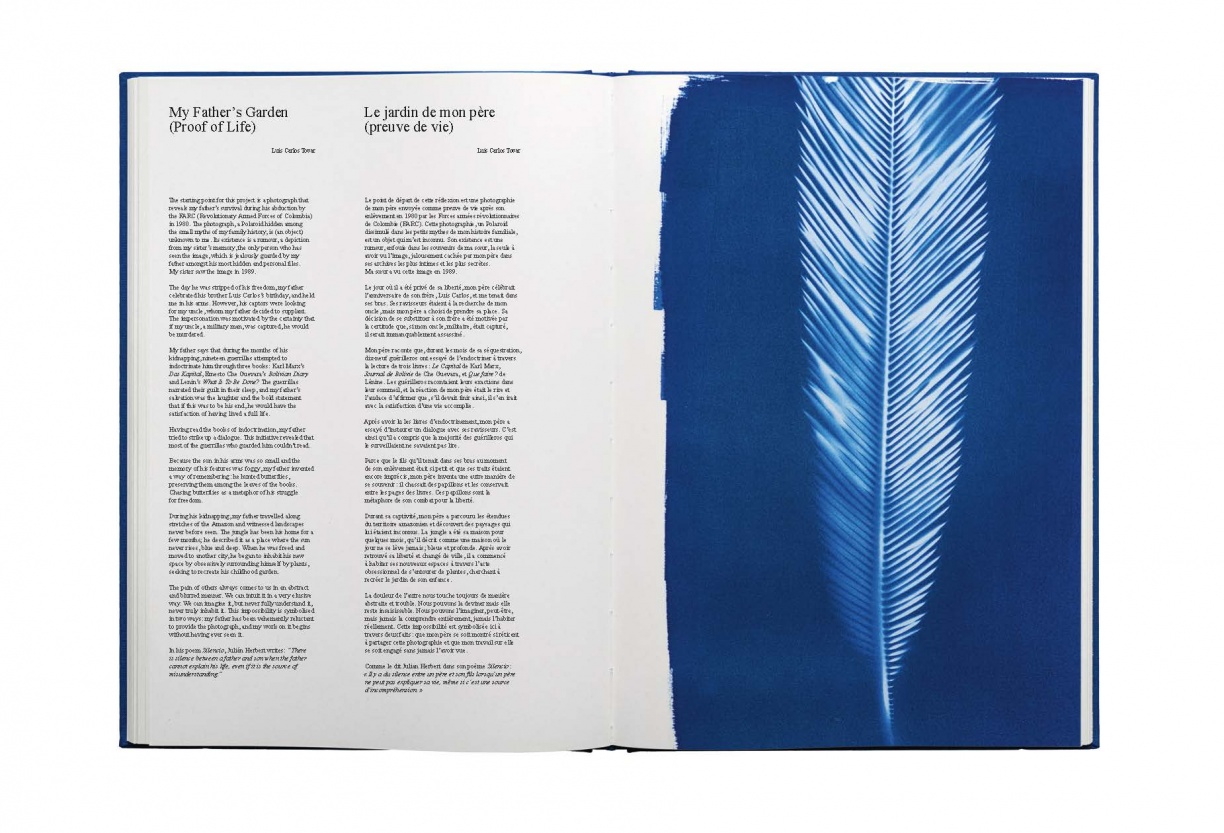
© Luis Carlos Tovar, My Father’s Garden (Proof of Life), 2018 © Musée de l’Elysée, 2018
photo basel, Switzerland’s first and only art fair dedicated to the display and promotion of photography, returns to the Volkshaus Basel for its fifth anniversary edition. Curated by photography expert Daniel Blochwitz, an expert in photography, the fair runs from June 11 - 16, 2019 coinciding with the modern and contemporary art fair, Art Basel. This year the fair will be expanding to span two floors of the Volkshaus Basel for the first time.
photo basel brings together 41 exhibitors from both emerging and established galleries across 15 countries including France, Japan, Israel and the United Kingdom. Newcomers to the fair include Atlas (United Kingdom), Galerie Clairefontaine (Luxembourg), Grob Gallery (Switzerland), Torch (The Netherlands), 29 Arts in Progress (Italy), Benrido (Japan) and Rothamel (Germany). Returning galleries include, Flatland (The Netherlands), Baudoin Lebon (France), Fabian & Claude Walter (Switzerland), Ira Stehmann (Germany), Bildhalle (Switzerland), Carlos Carvalho (Portugal), Galerie Springer (Germany), The Ravestijn Gallery (The Netherlands), Ibasho (Belgium), and Camara Oscura (Spain).
Alongside the main section of the fair, photo basel hosts the ALPA Award held in cooperation with the Swiss camera manufacturer ALPA®, as well as a private Zürich based collector. This was awarded to Yoko Ikeda of Ibasho Gallery, Antwerp in 2018. This year also marks the second iteration of the “Master Cabinet” showcasing specialist vintage prints, curated by Daniel Blochwitz and provided by participating galleries; all of which are for sale.
Other special projects include a collector’s selection of works by Italian photographer Mario Giacomelli and a photo basel / in situ satellite exhibition at Basel based art space Heuberg24. The exhibition ‘i. collection: Poses et passion‘ will be curated by gallerist Baudoin Lebon (in cooperation with La Chapelle de Clairefontaine). photo basel will also host the 2018 PP Aperture Foundation PhotoBook Awards. Founded in 2012, the awards celebrate the photobook’s contribution to the evolving narrative of photography. The exhibition includes 35 shortlisted books drawn from over 1,000 submissions from around the world that illustrate the highly sophisticated nature of photobook production today.
Daniel Blochwitz, curator of photo basel said:
I am excited to work so closely with photo basel for a second year. The fair provides the photographic community with an excellent opportunity to explore important and timely photographic practices, to contemplate interesting emerging and established artistic positions. I look forward to see how exhibitors and visitors will engage with the expanded space and the added features.
For the complete exhibitor list and further information on the venue please visit the following website: Press release 2019.
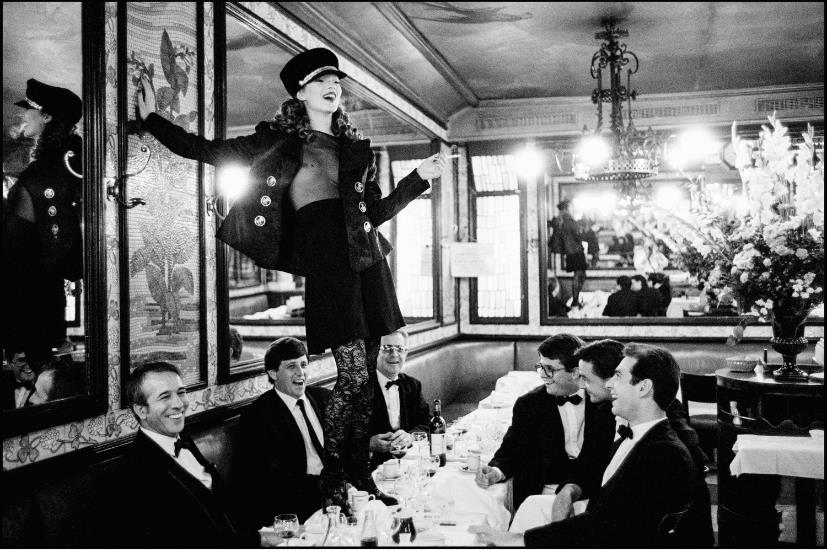
Arthur Elgort, Kate Moss at Cafe Lipp, Paris, Vogue Italia (1993). Image courtesy of the artist and Atlas Gallery
The photography book, which is nowadays the preferred medium of choice for many photographers, is at the heart of Photobooks Switzerland, an event initiated by the photographer Anastasia Mityukova. While the artist’s book has already been discussed more broadly, this is the first event of its kind devoted specifically to the photographic book in Switzerland. Photobooks Switzerland aims to bring the best of independent contemporary photographic publishing to Switzerland. It seeks to open up reflection and discussion about the status and importance of the photo book, as well as to convey new inputs and impressions about the possibility of the medium in the Swiss cultural scene.
Programme
Photobook Fair
Fr 26.4.2019 12.00–19.00 & Sa 27.4.2019 11.00–19.00
Over 20 Swiss and international publishers and art schools present the best of independent publishing: classic, self-published, home-made, conceptual, experimental, documentary photobooks, magazines, zines… Presentations and book signings on the booths of the publishers.
Open tables for independent artists and photographers who want to present and/or sell their books.
To register as a publisher: contact photobooks.switzerland@gmail.com.
To register as an independent photographer: fill the form at https://forms.gle/uJHfEJUkQrCbXBa57.
Panels & Presentations
Photographers, publishers, art historians and curators discuss the evolutions of photography and of independent publishing.
In English, questions in French and German welcome.
The Place of the Photobook in Contemporary Artistic Practices
Fr 26.4 16.00–17.00
The photobook has gradually become a privileged – dominant even – in the field of photography. Is it due to an evolution of the practices, a democratisation of the production, or a limitation of other dissemination platforms?
With Nathalie Herschdorfer (Musée des beaux-arts Le Locle), Caroline Nicod (Pro Helvetia), Senta Simond (photographer), Myriam Ziehli (photographer).
The Future of the Photobook
Fr 26.4 17.30–18.30
What are the next steps for the photobook? Which new forms should it take? How can technology be harnessed? Who is the audience of the photobook? Is the photobook as we know it an efficient form of communication?
With Frédérique Destribats (L’éditeur du dimanche), Pablo Lerma (Meteor Editions), Rudolf Steiner (Haus am Gern).
How to Photobook?
Sa 27.4 14.00–15.00
Should one choose self-publishing or an established publisher? Which budget? What diffusion platforms are available?
With Camille Carbonaro (Macaronibook), Nicolas Savary (photographer), Margo Stankiewicz (photographer).
Best-Of
Sa 27.4 16.00–17.00
Photographers, publishers, art historians and curators present treasures from their photobooks collection.
Portfolio Reviews
Fr 26.4 14.00–15.30
Two individual 20-minutes meetings with professionals from the art and photography fields: Brigitte Lustenberger, David Gagnebin-de Bons, Myriam Ziehli, Nathalie Herschdorfer, Lea Kunz, Simon Tanner, Antoine Reszler, Caroline Nicod, Andrea Gohl, Lars Willumeit, Miriam Edmunds, Danaé Panchaud.
Registration mandatory: https://forms.gle/m8gBqy5PBXP8UCWA7
Fee (for two meetings): 20.00 CHF
Please only register to discuss projects related to the field of photography.
Exhibition: Swiss Photobooks outside Switzerland
Ve 26.4.2019 12.00–19.00 & Sa 27.4.2019 11.00–19.00
Exhibition of publications supported by Pro Helvetia and produced in collaboration with international publishing houses.
Curated by Caroline Nicod.
Drinks & Screenings
Fr 26.4 from 20.00 at the POOC bar | free admission
Flood
The 23rd edition of the Biel/Bienne Festival of Photography will explore the theme of overflow, both real and virtual, in today’s society. On the internet, a “flood” is an action that inundates the network and saturates digital forums, rendering them unusable. Vast quantities of information are shared every day by more than four billion internet users, whether they are aware of it or not. This constant stream of passing data has an impact on society that cannot be fully grasped, but it also presents opportunities for both individual and social development.
This year’s edition will present works of photography that examine the often insidious overflows into the private sphere, the political excesses that confront humanity, our technological frenzy and the extreme exploitation of essential resources in contemporary society. The photographic image is a reflection of our practices: today it gets swept along in the flow of data, and like the individual it sometimes becomes unreadable or invisible. The exhibitions will help to make the image re-emerge, bringing to the surface the societal contradictions that it sometimes depicts and will let the photograph leave its frame to set the viewer’s thoughts in motion.
Opening: May 10, 6pm, Photoforum Pasquart
Exhibitions: 10.5.-2.6.2019
Sehr geehrte Fotografen,
Das Amt für Kultur des Kantons Freiburg beauftragt alle zwei Jahre eine Fotografin oder einen Fotografen mit einer fotografischen Ermittlung. Es handelt sich um die wichtigste Initiative in diesem fotografischen Bereich auf nationaler Ebene.
Die 12. Ausgabe der Ermittlung ist laufend und alle professionelle Fotografen der Schweiz (Wohnort muss nicht im Kanton Freiburg sein!) sind herzlich eingeladen, ihre Bewerbungsdossier einzugeben.
Das Thema muss im Zusammenhang mit dem Kanton Freiburg stehen (Ort, Handlung, Persönlichkeit(-en) usw.) und innovierend sein.
Die Besoldung der beauftragten Fotografin oder des beauftragten Fotograf (grundsätzlich Fr. 20'000.-) sowie die Anzahl der Abzüge und die fotografischen Vorgaben werden vertraglich festgelegt.
Die Jury dieser Ausgabe besteht aus folgenden Experten:
Nicolas Savary, Fotograf
Matthieu Gafsou, Fotograf und Professor an der ECAL
Romano Zerbini, Direktor Photobastei
Ivan Mariano, Direktor Museums Murten
Philippe Trinchan, Leiter Kulturamt Staat Fribourg (Präsident)
Bitte beachten Sie, dass die Bewerbungsdossiers auf dem Online-Portal myfribourg-culture einzugeben sind und dass der Termin für die Eingabe der 15. April 2019 ist.
Weitere Informationen über die Ermittlung erhalten Sie hier.
Eine kurze Beschreibung des Projekts der letzten Preisträgerin finden Sie hier.
Nützen Sie Ihre Erfolgschancen! Wir freuen uns schon auf Ihre Dossier.
La Fondazione svizzera per la cultura Pro Helvetia sostiene la pubblicazione di libri fotografici. In questo modo promuove in via prioritaria una forma di espressione specifica, fortemente radicata nella storia della fotografia e rappresentativa del dinamismo nonché della diversità della produzione attuale.
Condizioni di partecipazione
La misura di sostegno «Promozione dei libri di fotografia» è rivolta a fotografe e fotografi di nazionalità svizzera o con domicilio stabile nella Confederazione, attivi nell’ambito della fotografia artistica, documentaria e/o applicata e rinomati a livello nazionale.
I dossier devono essere presentati entro il 1 marzo e almeno 8 settimane prima della stampa della pubblicazione.
Ulteriori informazioni sono disponibili al seguente link.
Photo Book Programme: FUSE
Location: Dublin, Ireland
Deadline: 15 February 2019
Interview: March 2019
Duration: April - June 2019*
Apply: www.blowphoto-fuse.com
*minimum of 2-3 visits to Dublin. Within those visits, you will receive accommodation from D-Light Studios. The awardee must cover their own transport costs.
Producing a photo book is an important milestone in a photographer’s career. It takes a lot of time, energy and resources to get to that point and many photographers just aren’t prepared for the process.
This year BLOW Photo launches FUSE, an exclusive photo-book mentorship residency in collaboration with Read That Image, PlusPrint, Unthink Designers, D-Light Studios and Dewi Lewis.
We’re offering one lucky photographer a once-in-a-lifetime opportunity to collaborate with some of the industry’s finest talents, and present their work in Arles during the Rencontres d'Arles 2019.
If you’ve ever dreamed of publishing a collection of your work, this programme is for you. Over three months, you’ll be mentored through the process of creating your own Dummy, online and in-person. With support from renowned professionals, including Martin Parr’s own publisher, you’ll be empowered deliver your vision from concept to reality.
Got a story to tell? Don’t miss this chance to bring your craft to the next level.
Applications close February 15, 2019.
What’s involved?
· Collaborative dummy bookmaking workshops with Read That Image
· Editing with BLOW Photo Editor
· Personal guidelines from the Publisher Dewi Levis
· One to one workshop with the Director of PlusPrint
· Designed artwork by Unthink Designers
· Dummy printed by PlusPrint
· Presentation of the work and dummy to major publishers
· Access to D-Light Studios facilities
· Accommodation*
*The Program will run from April 2019 until July 2019. It will require a minimum of 2-3 visits to Dublin. Within those visits, you will receive accommodation from D-Light Studios. The awardee must cover their own transport costs.
Who can apply?
This opportunity is open to any photographer or artist using the medium of photography who is looking to develop their work in the form of a book. Applicants should have a photographic project that is at an advanced state. It’s not necessary for the project to be completed, but it must be at a stage where the process of publishing can be set in motion with our team.
How to apply
Deadline: 15 February 2019
Interview: March 2019
Duration: 3 months
Applicants must submit a project proposal including a statement and pdf with up to 30 images.
Application fee: €45.00
Students’ fee: €35.00
Partner’s fee: €35.00
Apply here:
Follow us
Fb: BLOW Photo / @blowphotomagazine
Intagram: blowphoto_fuse
Twitter: blowphotomag
Wenn alles nach Schokolade und Zimt riecht und weisse Winterlandschaften en miniature die Schaufenster schmücken, dann erwarten uns die besinnlichen Tage und ein bevorstehendes Jahresende. Dabei kann bei der einen oder dem anderen die Frage aufkommen, welche interessanten Ausstellungen, Festivals und Publikationen das nächste Jahr auf sich warten lassen. WHAT’S NEXT 2019! ging dem am 30. November nach. Von Spectrum – Photography in Switzerland und der Hochschule der Künste Bern, HKB, in der grossen Aula durchgeführt, wurden 21 verschiedene Ausstellungen, Festivals, Buch- und Magazinpublikationen des kommenden Jahres im 7-Minuten-Turnus präsentiert. Dabei umfassen die monographisch und thematisch geführten Projekte eine grosse und reiche Bandbreite.
An Hochschulen befassen sich die Studierenden mit der Fotografie im Feld der kuratorischen und interdisziplinären Praxen. So an der Zürcher Hochschule der Künste, ZHdK, an welcher die Bachelorstudierenden sich in einer losen Ausstellungsreihe mit unterschiedlichen Ausstellungsformaten beschäftigen. Im Master Contemporary Arts Practice der HKB geht’s um die Suche nach neuen Wegen, sich in einer interdisziplinären Umwelt neu zu orientieren und auszudrücken.
Die Fotografie wird als Trägerin verschiedener Diskurse analysiert. Als Informationsträgerin wird sie in der nächsten Ausgabe von Transbordeur. Photographie, Histoire, Société untersucht. Und als Trägerin von Farbe beschäftigt sich das Fotomuseum Winterthur mit ihrer Beziehung zum Film. Wer Zukunftsprophezeiungen sucht, darf The Oracle nicht verpassen. Unterstützt von der École Cantonale d’Art de Lausanne, ECAL, sieht diese Multimedia-Installation die Zukunft der Fotografie voraus. Basierend auf den Antworten von Besuchenden sowie auf Daten von Experten möchte sie Impulse für zukünftiges Handeln geben sowie das teils menschliche blinde Vertrauen in die Technologie vor Augen führen.
Das weibliche Geschlecht wird in Ausstellungen im Musée des Beaux-Arts Le Locle, MBAL, und im Centre de la Photographie Genève thematisiert. Während das MBAL untersucht, ob weibliche Fotografie existiert, nimmt das Centre de la Photographie Genève Eros und Kosmos zum Ausgangspunkt, um sozio-politische Fragen anhand der Rolle der Frau in der Gesellschaft zu betrachten. Von der Edition Patrick Frey erscheint ein Fotobuch mit Bildern von Olivier Fatton zur transsexuellen Performancekünstlerin Coco. Das Band spricht von der Liebesbeziehung dieser Zweien in Ansichten, die zwischen intimen Portraits und Modefotografien angesiedelt sind.
Stillleben werden im Musée de l’Elysée, Lausanne, sowie in einer Publikation von Scheidegger & Spiess gezeigt. Mit dem kürzlich aufgenommenen Nachlass der amerikanischen Fotografin Jan Groover wird eine Retrospektive im Musée de l’Elysée Einsicht in ihr umfangreiches Oeuvre zu Stillleben und Farbfotografien bieten. Blumenstillleben von Anna Halm Schudel werden von Scheidegger & Spiess vorgestellt. Das Buch wird die verschiedenen Lebensetappen von Blumen von ihrer Schönheit bis hin zu ihrem Ableben zeigen.
Das Freiluft-Fotofestival Lenzburg wird sich unter dem Titel „Searching Beauty“ der Fotografie im Aargau widmen und thematisch, wie der Titel schon besagt, der Schönheit nachgehen. Mit zeitgenössischer Fotografie wird sich das Alt+1000 Festival de Photographie, wiederwacht, in La Brévine, der Sibérie helvétique, etablieren. Um den Zusammenprall verschiedener Arten geht’s in CRASH, der elften Biennale dell’immagine in Chiasso. Boris Mikhailov wird ein bisher unveröffentlichtes Projekt zeigen. Zudem wird CRASH durch die Unfallfotografien von Arnold Odermatt visualisiert.
Erkundungen verschiedener Orte und Wissensfelder bieten nächstes Jahr weitere Institutionen: Die Fotostiftung Schweiz, Winterthur, führt die Besuchenden auf den Mond während das Museum Bellpark, Kriens, Auslagen in Shoppingcentern erforscht und das Photoforum Pasquart das Zusammenspiel von Fotografie und Parfum untersucht. Das Aargauer Kunsthaus führt die erste institutionelle Einzelausstellung von Jean-Luc Mylayne in der Schweiz durch und die Gilles Caron Fondation stellt in einem Film den fotografischen Werdegang von Gilles Caron vor. Monographisch wird sich auch die Fabian & Claude Walter Galerie mit den konkreten Fotografien Roger Humberts beschäftigen. Mit 1. Livre. 10 Ans d’images Vevey schliesslich erscheint eine Publikation zu den letzten zehn Jahren Images Vevey und damit Besprechungen der Szenografien von über 300 Projekten.
Spectrum – Photography in Switzerland hat sich über die Beiträge an WHAT’S NEXT 2019! und die vollgefüllte Grande Aula sehr gefreut. Das Jahr 2019 wird definitiv spannend werden!
Wir wünschen allen schöne Festtage und einen guten Rutsch!
Melisa Sari Arslan
Der Verein Spectrum – Photography in Switzerland (https://photography-in-switzerland.ch) ist eine nationale Organisation, in der sich die wichtigsten Institutionen und Vermittler von Fotografie in der Schweiz zusammengeschlossen haben. Er vereinigt Fotomuseen, Bildungsinstitutionen, Archive, Bibliotheken, Galerien, KuratorInnen, Medienschaffende und ForscherInnen, die sich professionell mit der Vermittlung des Mediums Fotografie befassen.
Der erweiterte Vorstand von Spectrum – Photography in Switzerlandhat sich mit dem vom Bundesrat vorgelegten Entwurf zur Änderung des Urheberrechtsgesetzes und dessen Auswirkungen auf den Schutz der Fotografie befasst.
Aus folgenden Gründen lehnt er die unter dem Titel «Lichtbildschutz» vorgeschlagene Änderung ab:
1. Der Lichtbildschutz würde den Werkbegriff im Bereich der Fotografie so umfassend erweitern, dass er mit der Grundidee des Urheberrechts nicht mehr vereinbar wäre. Die Unterscheidung zwischen schützenswerten Fotografien und nicht schützenswerten Fotografien würde praktisch aufgehoben, da – mit einer Ausnahme, siehe Punkt 3 – praktisch alle fotografischen Erzeugnisse als «Werke» unter Schutz gestellt würden.
2. Es leuchtet nicht ein, dass die Fotografie im Vergleich zu anderen Werkgattungen im URG eine absolute Sonderstellung einnehmen soll und das fotografische Werk ganz anders behandelt wird als alle anderen Werke. Dadurch würde der Schöpfer einer nicht individuellen Fotografie gegenüber den Schöpfern von Werken in allen anderen Sparten in einer nicht nachvollziehbaren Weise bevorzugt.
3. Die einzige im Entwurf akzeptierte Abgrenzung bezieht sich auf ein formales Kriterium, das für den Werkcharakter einer Fotografie überhaupt keine Relevanz hat, nämlich auf die Unterscheidung zwischen Fotografien von zweidimensionalen und solchen von dreidimensionalen Objekten. Der vorgeschlagene Lichtbildschutz würde demnach Fotografien von zweidimensionalen Objekten nicht unter Schutz stellen, während Fotografien von dreidimensionalen Objekten geschützt wären. Diese Abgrenzung führt zu einer gravierenden Rechtsunsicherheit: Eine frontal aufgenommene Fotografie eines Gemäldes wäre nicht geschützt, während eine aus einem seitlichen Winkel aufgenommene Fotografie desselben Objekts geschützt wäre – eine vollkommene Absurdität, zumal die Übergänge zwischen Zwei- und Dreidimensionalität fliessend sind.
4. Mit der vorgeschlagenen Variante des Lichtbildschutzes würde sich die Schweiz im internationalen Zusammenhang (sowohl gegenüber Ländern, die einen Lichtbildschutz kennen, als auch gegenüber anderen) isolieren. Die hierzulande extrem tief angesetzten Schutzschranken hätten im grenzüberschreitenden Verkehr keine Wirkung – im digitalen Zeitalter und angesichts der Omnipräsenz von Social Media ein Anachronismus. Es besteht zudem die Gefahr einer massiven Verunsicherung sämtlicher Nutzer und Verwerter von Fotografien, was auch nicht im Interesse der Fotoschaffenden sein kann.
5. Die Kritik am geltenden URG stützt sich in erster Linie auf den bekannten BGE im Fall «Meili». Dass die beurteilte Fotografie nicht geschützt wurde, dürfte jedoch darauf zurückzuführen sein, dass für ihre Schutzwürdigkeit der betriebene Aufwand bzw. die Leistung der Fotografin ins Feld geführt wurde. Diese Argumentation ist urheberrechtlich irrelevant. Spectrumsetzt sich dafür ein, dass das Urheberrecht auch im Bereich der Fotografie Werke schützt, die als geistige Schöpfung mit individuellem Charakter identifiziert werden können, unabhängig von ihrem Wert oder dem dafür betriebenen Aufwand. Die Abgrenzung gegenüber fotografischen Erzeugnissen mit nicht individuellem Charakter ist aufrecht zu erhalten.
Winterthur, 23.10.2018
Der Vorstand, im Namen des Vereins Spectrum – Photography in Switzerland
Präsident:
Urs Stahel, Kurator MAST (Bologna), Autor und Berater (stahel@ursstahel.ch)
Vizepräsidentin:
Nora Mathys, leitende Sammlungskuratorin, Musée de l’Elysée, Lausanne
Kassier:
Christophe Brandt, Direktor Institut suisse pour la conservation de la photographie, Neuenburg
Mitglieder:
Nathalie Herschdorfer, Direktorin Musée des Beaux-Arts, Le Locle
Peter Pfrunder, Direktor Fotostiftung Schweiz, Winterthur
Barbara Spalinger, M.A. Konservierung-Restaurierung / Wissenschaftliche Mitarbeiterin Hochschule der Künste Bern, Studiengang Konservierung und Restaurierung
Nadine Wietlisbach, Direktorin Fotomuseum Winterthur
Lars Willumeit, Leitung Fachklasse Fotografie EFZ/BM, selbständiger Kurator
Fantastic weekend in the old village of Soglio, with 40 mediators in photography in Switzerland. Curators, gallerists, writers, scientists, restorers, , tour guides, picture editors, publishers, festival organizers etc. At the house of the most generous Raymond Meier, swiss fashion and still life photographer in New York. Topic: Data&Matter.
With the artists Ilit Azoulay and Florian Freier and their projects, and the lecturer Bernd Stiegler as main guests. His lecture: The Digital Turn - Revisited.
Organized by SPECTRUM - PHOTOGRAPHY IN SWITZERLAND

Samstag, 15. September 2018, 18 bis 19.30 Uhr
Vortrag von Prof. Bernd Stiegler: Der Digitale Turn – revisited
Studio Fotografico Raymond Meier, Soglio
Organisiert von Spectrum - Photography in Switzerland
Eintritt frei. Anmeldung erforderlich über spectrum@photography-in-switzerland.ch
Unter www.beobachtung-schlieren.ch können die neusten Fotografien der Langzeitbeobachtung Schlieren angesehen werden. In diesem Forschungsprojekt verfolgt die Zürcher Hochschule der Künste/Institute for Contemporary Art Research seit 2005 den räumlichen Wandel in Schlieren.
The latest photographs of the long-term observation of Schlieren can be viewed at www.beobachtung-schlieren.ch In this research project, the Zurich University of the Arts/Institute for Contemporary Art Research has been pursuing spatial change in Schlieren since 2005.
near.swiss association for contemporary photography will launch a new brand and a new website, on Saturday July 7th at the Rencontres d'Arles.
Website: http://www.near.li/
Facebook Event: https://www.facebook.com/events/230700917722807/
The first newsletter from Spectrum - Photography in Switzerland has been sent out! It will be shipped three times this year and four times a year in the coming years.
You can read it online and subscribe here to receive future issues.
The Spectrum portal - photography-in-switzerland.ch - has been relaunched.
On one side the search system was updated, which allows to find museums, galleries, exhibition spaces, archives, collections, publishers, bookstores, schools, festivals etc. by keywords or by places, cities. On the other hand, the portal will allow us to place not only news and events from Spectrum, but from the entire Swiss photo scene. In addition reports and essays will be made accessible and a specialist database built up.
First General Assembly of Spectrum - Photography in Switzerland and What's Next 2018! at Photoforum Pasquart in Biel-Bienne, yesterday Friday, December 8, 2017. A lot of people, a lof of success, a lot of joy! 50% more members now than in the year before. And full house for What's Next 2018! Thanks everyone for helping! Thanks to Photoforum Pasquart!
WHAT’S NEXT 2018!
20 INSTITUTIONS IN SWITZERLAND (MUSEUMS, GALLERIES, COLLECTIONS, ARCHIVES, PUBLISHERS, FESTIVALS) PRESENT THEIR MOST IMPORTANT PHOTO PROJECTS IN 2018.
PHOTOGRAPHY – QUO VADIS? Discussion with Estelle Blaschke, Jörg Scheller and Urs Stahel
DRINKS, FOOD, SMALL TALKS. FREE ENTRY.
December 8, 2017, 13-18pm
PHOTOFORUM PASQUART, BIEL/BIENNE
An Event organised by Spectrum – Photography in Switzerland and Photoforum Pasquart. Entry is free. Registration for What’s Next 2018 till December 3: bonjour@photoforumpasquart.ch
Participants: Archivio Donetta, Cpress, Bernisches Historisches Museum, Bieler Fototage, Centre de la photographie Genève, Christophe Guye Galerie, Coalmine, Ecal, Edition Patrick Frey, ETH Bildarchiv, Fotomuseum Winterthur, Fotostiftung Schweiz, Musée des Beaux-Arts du Locle, Musée de l’Elysée, Museum Bellpark, Photoforum Pasquart, Ringier Bildarchiv, Stadtmuseum Aarau, Transbordeur photographie, Vfg – Verein fotografischer Gestalter, Yet Magazine
At an extraordinary general meeting, the association ASIP (Association Suisse des institutions pour la photographie) has been renamed and transformed into the renewed association "Spectrum - Photography in Switzerland".
What does that mean?
On the one hand, it means that the former Association Suisse des institutions pour la photographie (Association Suisse des institutions pour la photographie) will now as Spectrum - Photography in Switzerland also be opened for individual members. It is not only the institutions dealing with photography that should be able to become members, but also all individuals who work professionally in the field of photography, i. e. in their mediation, processing, conservation, critical analysis, etc., should be able to become members of Spectrum - Photography in Switzerland in the future. The photographers are not included. They can be members of Spectrum through representatives of their associations.
On the other hand, we want to expand Spectrum - Photography in Switzerland into a platform that is as comprehensive as possible for dealing with photography, a platform that acts as a catalyst, a service provider, a network, a mediator in the field of photography and always seeks cooperation with institutions and experts.
Thirdly, Spectrum - Photography in Switzerland will naturally and intensively take up the contact with the authorities, the lobby function in photopolitical questions vis-à-vis the authorities. Especially on the way to the coming new cultural message.
Board of directors:
President:
Urs Stahel, curator MAST (Bologna), lecturer ZHdK, author and consultant
Vice President:
Nora Mathys, Project Management, Historian (former Head of the Ringier Picture Archive, Stadtmuseum Aarau)
Treasurer:
Christophe Brandt, Director of the Institut suisse pour la conservation de la photographie, Neuchâtel
Members:
Tatyana Franck, Director of the Musée de l' Elysée, Lausanne
Nathalie Herschdorfer, Director of the Musée des Beaux-Arts, Le Locle
Jean-Henry Papilloud, President of the Mémoires de photographes, Conservator of the collections photographiques de la Fondation Pierre Gianadda, Martigny
Peter Pfrunder, Director Fotostiftung Schweiz, Winterthur
Barbara Spalinger, M. A. Conservation and Conservation / Research Associate at the University of the Arts Bern, Conservation and Restoration
Nadine Wietlisbach, Director Photoforum Pasquart / from 2018 Fotomuseum Winterthur
Lars Willumeit, Head of Photography Division EFZ/BM, independent curator
